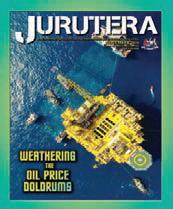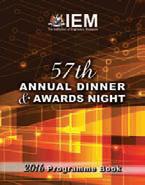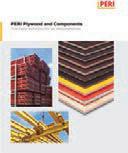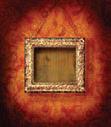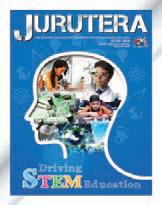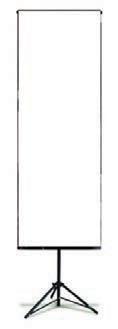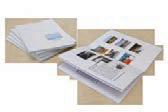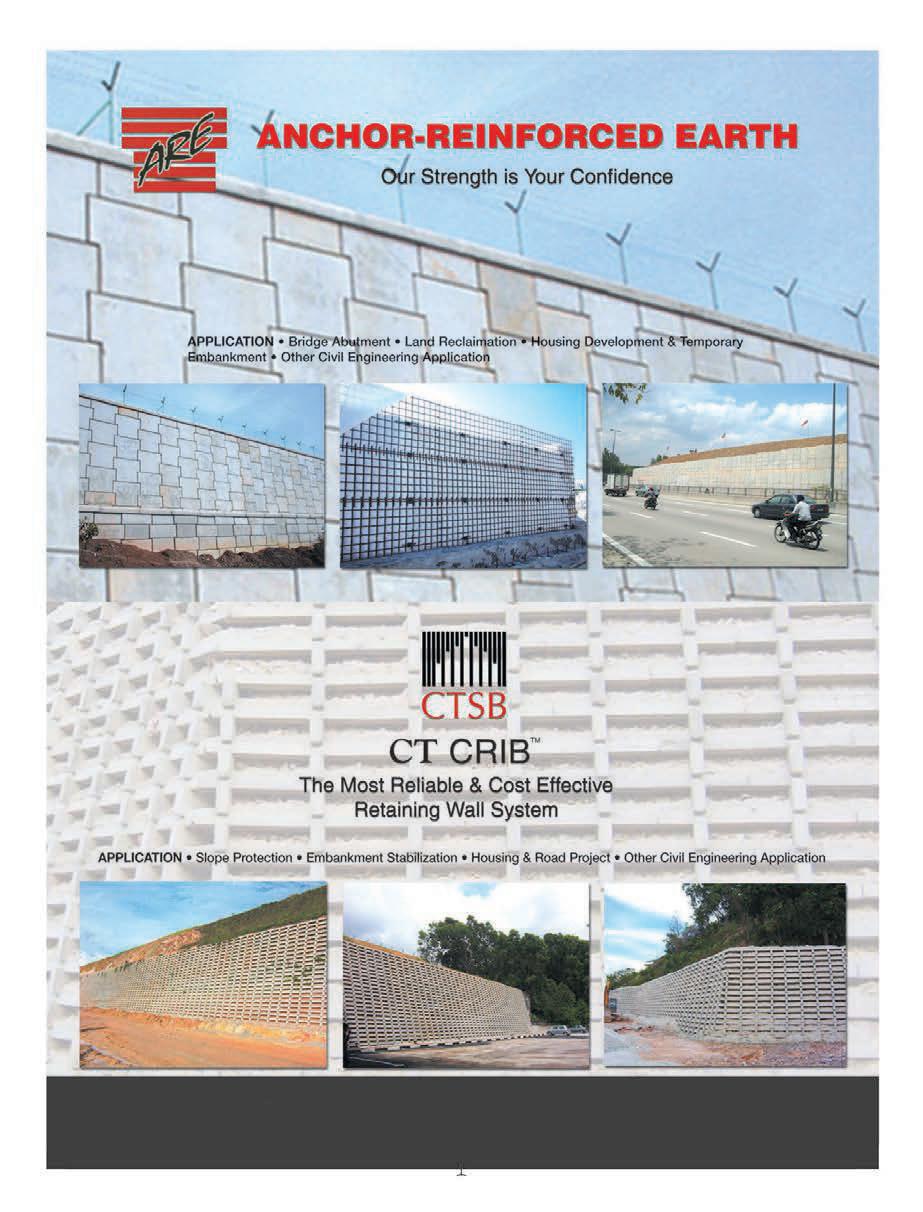




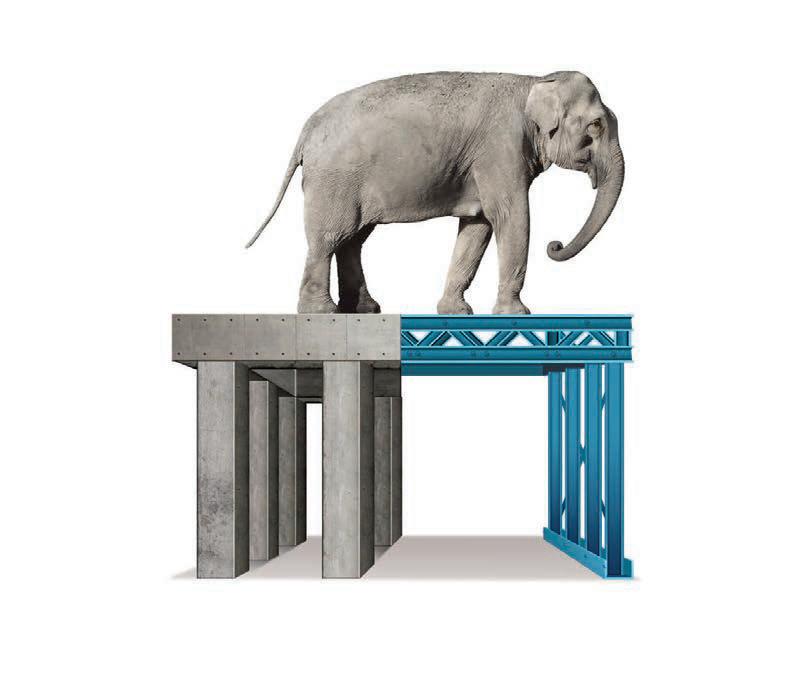
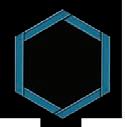
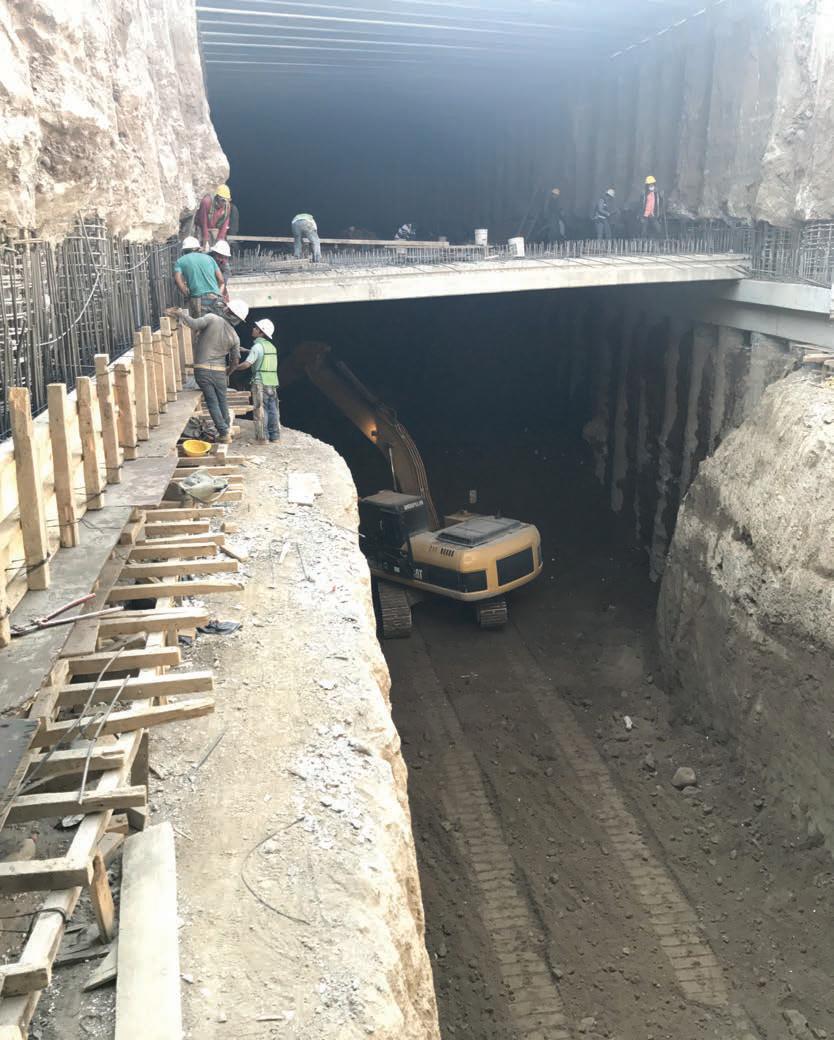
The Mixcoac-Insurgentes underpass interchange was an extraordinary engineering challenge because of the architectural comdirectly above of the other, made this a very complex interchange.
out-going lower tunnel. 200 kg of Xypex Concentrate was applied to the inner side of the wastewater channel and Xypex Admix C-2000 was poured as a cover slab of this channel as well as the deck of the upper tunnel.
website at www.xypex.com.au or LinkedIn Page.

Number 11, NOVEMBER 2017IEM Registered on 1 May 1959
MAJLIS BAGI SESI 2017/2018 (IEM COUNCIL SESSION 2017/2018)
YANG DIPERTUA / PRESIDENT
Ir. Dr Tan Yean Chin
TIMBALAN YANG DIPERTUA / DEPUTY PRESIDENT
Ir. David Lai Kong Phooi
NAIB YANG DIPERTUA / VICE PRESIDENTS
Ir. Prof. Dr Jeffrey Chiang Choong Luin, Ir. Prof. Dr Norlida bt Buniyamin, Ir. Ellias Bin Saidin, Ir. Prof. Dr Ruslan bin Hassan, Ir. Lai Sze Ching, Ir. Lee Boon Chong, Ir. Ong Ching Loon
SETIAUSAHA KEHORMAT / HONORARY SECRETARY
Ir. Yap Soon Hoe
BENDAHARI KEHORMAT / HONORARY TREASURER
Dr Wang Hong Kok
BEKAS YANG DIPERTUA TERAKHIR / IMMEDIATE PAST PRESIDENT
Y.Bhg. Dato’ Ir. Lim Chow Hock
BEKAS YANG DIPERTUA / PAST PRESIDENTS
Y.Bhg. Academician Tan Sri Dato’ Ir. (Dr) Hj. Ahmad Zaidee bin Laidin, Y.Bhg. Dato’ Ir. Dr Gue See Sew, Y.Bhg. Dato’ Paduka Ir. Keizrul bin Abdullah, Y.Bhg. Academician Dato’ Ir.
Prof. Dr Chuah Hean Teik, Mr. Choo Kok Beng
WAKIL AWAM / CIVIL REPRESENTATIVE
Ir. Dr Lee Yun Fook
WAKIL MEKANIKAL / MECHANICAL REPRESENTATIVE Ir. Fam Yew Hin
WAKIL ELEKTRIK / ELECTRICAL REPRESENTATIVE
Ir. Lim Kim Ten
WAKIL STRUKTUR / STRUCTURAL REPRESENTATIVE
Ir. Dr Ng Soon Ching
WAKIL KIMIA / CHEMICAL REPRESENTATIVE
Ir. Prof. Dr Thomas Choong Shean Yaw
WAKIL LAIN-LAIN DISPLIN / REPRESENTATIVE TO OTHER DISCIPLINES
Ir. Roznan bin Abdul Rashid
WAKIL MULTIMEDIA DAN ICT / ICT AND MULTIMEDIA REPRESENTATIVE
Ir. Dr Chuah Joon Huang
AHLI MAJLIS / COUNCIL MEMBERS
Ir. Mohd Khir bin Muhammad, Y.Bhg. Dato’ Ir. Hj. Hanapi Bin Mohammad Noor, Ir. Dr Ahmad Anuar bin Othman, Ir. Ishak bin Abdul Rahman, Ir. Chong Pick Eng (PE Chong), Ir. Ng Yong Kong, Ir. Tejinder Singh, Ir. Sreedaran a/l Raman, Ir. Roger Wong Chin Weng, Ir. Assoc. Prof. Dr Ahmad Kamil bin Arshad, Ir. Dr Tan Kuang Leong, Ir. Hoo Choon Sean, Y.Bhg. Lt. Jen. Dato’ Wira Ir. Ismail bin Samion (Ret. RMAF), Y.Bhg. Dato’ Ir. Hj. Anuar bin Yahya, Ir. Mah Way Sheng, Ir. Gunasagaran a/l Kristnan, Ir. Chen Harn Shean, Ir. Mohd Aman bin Hj. Idris, Ir. Gopal Narian Kutty, Ir. Dr Jimmy Mok Vee Hoong, Ir. Dr Leong Wai Yie, Ir. Razmahwata Mohamad Razalli, Ir. Abdul Razak Yakob, Ir. Yau Chau Fong, Y.Bhg. Dato’ Ir. Foong Choy Chye, Y.Bhg. Dato’ Ir. Kisai bin Rahmat, Ir. Yam Teong Sian, Y. Bhg. Dato’ Ir. Low Keng Kok, Y. Bhg. Dato’ Ir. Hj. Abdul Rashid bin Maidin
PENGERUSI CAWANGAN / BRANCH CHAIRMAN
1. Pulau Pinang: Ir. Ting Chek Choon
2. Selatan: Ir. Mohd Khir Muhammad
3. Perak: Ir. Abdul Razak bin Ali
4. Kedah-Perlis: Ir. Prof. Dr Rezuwan bin Kamaruddin
5. Negeri Sembilan: Y. Bhg. Dato’ Ir. Zainurin bin Karman
6. Kelantan: Ir. Hj. Mohd Zaim bin Abd. Hamid
7. Terengganu: Ir. Atemin bin Sulong
8. Melaka: Ir. Dr Tan Chee Fai
9. Sarawak: Ir. Vincent Tang Chok Khing
10. Sabah: Ir. Dr James Yong Hon Min
11. Miri: Ir. Paul Chiew Lik Ing
12. Pahang: Y. Bhg. Dato’ Ir. Sharuddin bin Mohd Simin
AHLI JAWATANKUASA INFORMASI DAN PENERBITAN / STANDING COMMITTEE ON INFORMATION AND PUBLICATIONS 2017/2018
Pengerusi/Chairman: Ir. Prof. Dr Ruslan Hassan Naib Pengerusi/Vice Chairman: Ir. Mohd. Khir Muhammad Setiausaha/Secretary: Ir. Lau Tai Onn Ketua Pengarang/Chief Editor: Ir. Prof. Dr Ruslan Hassan Pengarang Buletin/Bulletin Editor: Ir. Mohd. Khir Muhammad Pengarang Prinsipal Jurnal/Principal Journal Editor: Ir. Prof. Dr Ruslan Hassan Pengerusi Perpustakaan/Library Chairman: Ir. C.M.M. Aboobucker Ahli-Ahli/Committee Members: Ir. Ong Guan Hock, Ir. Yee Thien Seng, Ir. CMM Aboobucker, Ir. Chin Mee Poon, Ir. Dr Oh Seong Por, Ms. Michelle Lau Chui Chui, Ir. Abdul Razak bin Yakob
LEMBAGA PENGARANG/EDITORIAL BOARD 2017/2018
Ketua Pengarang/Chief Editor: Ir. Prof. Dr Ruslan Hassan Pengarang Buletin/Bulletin Editor: Ir. Mohd. Khir Muhammad Pengarang Jurnal/Journal Editor: Ir. Prof. Dr Ruslan Hassan Ahli-ahli/Committee Members: Ir. Lau Tai Onn, Ir. Ong Guan Hock, Ir. Yee Thien Seng, Ms. Michelle Lau Chui Chui, Ir. Dr Oh Seong Por Secretariats: Janet Lim, May Lee
THE INSTITUTION OF ENGINEERS, MALAYSIA
Bangunan Ingenieur, Lots 60 & 62, Jalan 52/4, P.O. Box 223, (Jalan Sultan), 46720 Petaling Jaya, Selangor Darul Ehsan.
Tel: 603-7968 4001/4002 Fax: 603-7957 7678 E-mail: sec@iem.org.my Homepage: http://www.myiem.org.my

5
COVER NOTE Living with Explosives
6 - 11
COVER STORY
Enhancing the Competency of Explosives Users
12 - 25
FEATURE ARTICLES
Use of Explosives in Well Perforation ....................12
Coal Mining in Sarawak: An Overview ..................16
Digitalisation:AParadigm Shift in Oil & Gas Industry ................................................20
26 - 38
FORUMS
Seismic Experts Explain Key Technical Issues in the Draft of National Annex to Eurocode 8 .....26
One-Day Course on the Design of Oil & Gas Fixed Offshore Platform .....................................33
Prediction and Performance of Construction in Soft Ground .........................................................35
9th Annual General Meeting of Electronic Engineering Technical Division............................37
41
GLOBE TREKKING
Sungai Lembing: El Dorado of the East
PINK PAGE
Professional Interview 43-44
45 - 48
BLUE PAGE
Membership List

JURUTERA has an estimated readership of 168,000 professionals. Our esteemed readership consists of certified engineers, decision making corporate leaders, CEOs, government officials, project directors, entrepreneurs, project consultants, engineering consulting firms and companies involved with engineering products and services.
Our business partners can be assured that their products and services will be given the circulation and exposure it deserves, thus maintaining a sustained advertising presence to our core readers of decision-making engineers and technical experts. Our website offers an even wider market reach, with added international presence, aided by our international affiliation with official engineering bodies all over the world. Our online and offline advertising features such as banner advertising, article sponsorship and direct e-mail announcements have proven to be successful marketing strategies that will set the businesses of our partners apart from their competition.
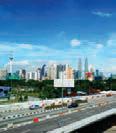




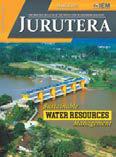




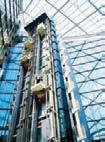



Position: +15% Overseas Advertiser: +25% (Full Advance Payment Required) All prices shown above exclude Computer to Plate (CTP) charges
For advertising enquiries, please contact:
DIMENSION PUBLISHING SDN. BHD. (449732-T)
Level 18-01-03, PJX-HM Shah Tower, No. 16A, Persiaran Barat, 46050 Petaling Jaya, Selangor Darul Ehsan, Malaysia.
Tel: +(603) 7493 1049 Fax: +(603) 7493 1047
E-mail: info@dimensionpublishing.com Website: www.dimensionpublishing.com
Chairman
ROBERT MEBRUER
CEO/Publisher
PATRICK LEUNG
General Manager
SHIRLEY THAM shirley@dimensionpublishing.com
Head of Marketing & Business Development
JOSEPH HOW joseph@dimensionpublishing.com
Editor
TAN BEE HONG bee@dimensionpublishing.com
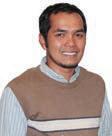
by Ir. Mohd Azwira bin Mohd Azmi Chairman, Oil, Gas and Mining Technical Division
Contributing Writers Senior
PUTRI ZANINA & ZOE PHOON putri@dimensionpublishing.com zoe@dimensionpublishing.com
SUMATHI MANOKARAN sumathi@dimensionpublishing.com
Graphic
NABEELA AHMAD beela@dimensionpublishing.com
Advertising Consultants
THAM CHOON KIT ckit@dimensionpublishing.com
Accounts
YEN YIN yenyin@dimensionpublishing.com
For advertisement placements and subscriptions, please contact:
DIMENSION PUBLISHING SDN. BHD. (449732-T)
Level 18-01-03, PJX-HM Shah Tower, No.16A, Persiaran Barat, 46050 Petaling Jaya, Selangor Darul Ehsan, Malaysia. Tel: +(603) 7493 1049 Fax: +(603) 7493 1047
E-mail: info@dimensionpublishing.com
Subscription Department E-mail: info@dimensionpublishing.com
Printed by
HOFFSET PRINTING SDN. BHD. (667106-V)
No. 1, Jalan TPK 1/6, Taman Perindustrian Kinrara, 47180 Puchong, Selangor Darul Ehsan, Malaysia. Mailer
PERFECT MAIL SERVICES (648839-P) 14 Jalan TSB 2, Taman Perindustrian Sungai Buloh, Sungai Buloh, Selangor Darul Ehsan, Malaysia. Tel: +(603) 6156 5288
JURUTERA MONTHLY CIRCULATION: 22,500 COPIES
Submission or placement of articles in JURUTERA could be made to the:Chief Editor
THE INSTITUTION OF ENGINEERS, MALAYSIA (IEM) Bangunan Ingenieur, Lots 60 & 62, Jalan 52/4, P.O. Box 223 (Jalan Sultan), 46720 Petaling Jaya, Selangor. Tel: +(603) 7968 4001/4002 Fax: +(603) 7957 7678 E-mail: pub@iem.org.my or sec@iem.org.my IEM Website: http://www.myiem.org.my
© 2017, The Institution of Engineers, Malaysia (IEM) and Dimension Publishing Sdn. Bhd.
PUBLICATION DISCLAIMER
The publication has been compiled by both IEM and Dimension with great care and they disclaim any duty to investigate any products, process, services, designs and the like which may be described in this publication. The appearance of any information in this publication does not necessarily constitute endorsement by IEM and Dimension. There is no guarantee that the information in this publication is free from errors. IEM and Dimension do not necessarily agree with the statement or the opinion expresssed in this publication.
COPYRIGHT
JURUTERA Bulletin of IEM is the official magazine of The Institution of Engineers, Malaysia (IEM) and is published by Dimension Publishing Sdn. Bhd. The Institution and the Publisher retain the copyright over all materials published in the magazine.
No part of this magazine may be reproduced
of IEM and the Publisher.
In this issue of JURUTERA, IEM’s Oil, Gas & Mining Technical Division (OGMTD) focuses on a part of the industry that is important and highly specialised but full of risks, the engineering of the explosion.
The word “explosives” is taboo for most and should not be uttered especially at the airport or in any public place but this month, we will discuss extensively the topic of explosives. Controlled handling and transporting of explosives as well as usage methods are paramount to ensure the safety of the public and environment.
Explosives support the Oil & Gas industry, especially in seismic survey activities during the exploration phase and in well perforation during the development phase. In the mining industry, explosives are heavily used in underground mining and in the quarry to break rocks.
JURUTERA interviewed Encik Shahar Effendi bin Abdullah Azizi, the Director-General of the Department of Mineral and Geoscience Malaysia (Jabatan Mineral & Geosains) who shared his experience and knowledge in managing this complex, sensitive and dangerous material.
As for oil price, we continue to hope that the market will reach an equilibrium between price and production cost so that exploration and development projects can continue to be economically feasible for implementation. May 2018 be a better year for all of us.
Title: 2-Day Course on “What Got You Here Won’t Get You There: A Critical Thinking Journey” 14-15 Nov 2017
Organised by: Oil, Gas and Mining Engineering Technical Division Time : 9.00 a.m. - 5.00 p.m. CPD/PDP : 10.5
Title: Talk on “Embracing Uncertainty, Risk Management” 15 Nov 2017
Organised by: Engineering Education Technical Division Time : 5.31 p.m. - 7.30 p.m.
CPD/PDP : 2
Kindly note that the scheduled events below are subject to change. Please visit the IEM website at www.myiem.org.my for more information on the upcoming events.
Industrial blasting activities require a high level of expertise. With the utmost concern for safety, regulatory policies, technical advisory assistance and safety standards guidelines must be in place. The Director-General of the Department of Mineral and Geoscience Malaysia, Encik Shahar Effendi bin Abdullah Azizi, talks about the vital work of the department which is one of the bodies that regulate such activities in the country.
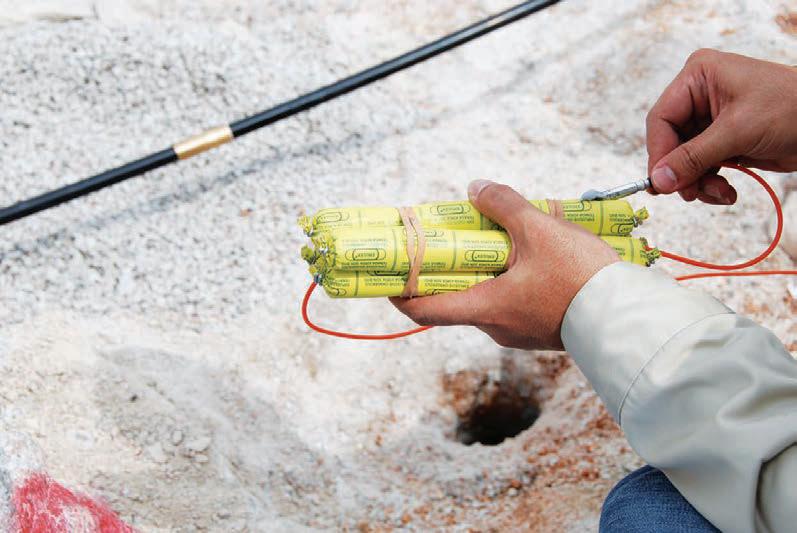
Industrial blasting involving the use of explosivesisahighlyspecialisedfield. This is a job that requires competent and certified shotfiring specialists as well as engineers as the safety of the public, workers and the environment is a major consideration.
One wrong move and the result can be catastrophic. Flyrocks have causeddeathsandinjuries.Damage to the surroundings, including public properties, is also a real danger. Obviously this is an area that requires stringent control, expert advice and compliance to specific standards and safety guidelines.
So which body safeguards and regulates industrial blasting activities in Malaysia? This mammoth responsibility is shared between several bodies such as the Department of Mineral & GeoscienceorJabatanMineraldan Geosains (JMG) and the Ministry of Natural Resources & Environment.
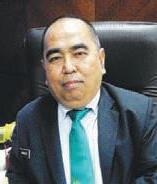
Encik Shahar Effendi bin Abdullah Azizi is DirectorGeneral of the Department of Mineral & Geoscience or Jabatan Mineral & Geosains (JMG). Prior to his present position, he served as Deputy Director-GeneralandDirectorof JMG’sMineralResearchCentre in Perak. He has contributed a lot to improving the local mining and quarrying industry, especially in drafting guidelines and regulations, as well as formulating policies, including theNationalMineralPolicy2.
The Director-General of JMG, Encik Shahar Effendi bin Abdullah Azizi, says which authority is responsible will depend on where the activities are carried out and, to a certain extent, hinge on the approving authority for specific areas.
“For example, for mining activities, which fall under the Mineral Development Act (Blasting Regulations) 2013, and quarrying that is governed by the State Quarry Rules, the regulatory body is JMG. For construction in local authority areas, the regulatory body is the respective area’s local authority. In other areas that need blasting, such as for construction, tunnelling or road building, the Royal Malaysian Police (Polis DiRaja Malaysia or PDRM) is the regulatory body. But on the whole, for any blasting activity to take place, permission as well as the issuance of licence to sell, purchase and use explosives, fall under PDRM. JMG only provides expert advice when asked by the relevant authorities,” he says.
ExplainingtheroleofJMG,Shaharsaysthedepartment’s scope is in the fields of mineral and geoscience. Apart from ensuringthatthecountry’smineralresourcesaredeveloped safely and sustainably as well as giving optimum returns, JMG also makes sure mines and quarries are developed according to the mining and quarrying laws currently in force.
Shahar explains that all matters with regards to the manufacture or supply of explosives, fall under the purview of PDRM. However, the Explosives Act 1957 (Act 207) requires anypersonorcompanythatwantstomanufacture,supply, sell or purchase explosives, to obtain licences for those
respective activities. To become a supplier for explosives, one must get a licence approved by the Minister of Home Affairs.
Overall, PDRM is entrusted with regulating the supply of explosives, whileJMGregulatesblastingactivities in mines and quarries. Together, JMG and PDRM are the certification bodies for blasting competency.
Shahar says: “With regards to blasting, JMG’s roles are to ensure that activities carried out are safe and sound, without causing any adverse impacts so as to protect the people and the environment. We have officers with mining or mineral resources engineering background as well as the knowledge and experience in the use of explosives and blasting activities in quarries and mines.”
On 20 September, 2017, the Deputy Minister of Natural Resources & Environment (NRE), Datuk Ir. Dr Haji HamimbinSamuri,officiallylaunched the new Shotfirer Licence, which is the result of the combination of the Shotfirer Certificate (Sijil Pembedil) issued by JMG and Blasting Expert Certificate (Sijil Juruletup) by PDRM.
The Shotfirer Certificate was previously required for blasting works in mines and quarries governed by States Quarry Rules and the Blasting Expert Certificate was for carrying out work on construction blasting sites. The new Shotfirer Licence, which became valid on 1 January, 2017, will henceforth facilitate all blasting works in quarries, mines, construction sites and other areas.
“With the co-operation of PDRM, blasting competency is being enhanced. Both JMG and PDRM have successfully activated a Steering Committee to co-ordinate, tackle issuesandraisethecompetencyandstandardwithrespect to blasting and explosives users in Malaysia,” says Shahar.
As of 30 June, 2017, JMG had received 592 conversion applications out of 1,400 holders of the old Shotfirer Certificates. Combined with the conversion applications received by the PDRM, the total stands at 650 at the middle of the year.
Shahar says all holders of valid Shotfirer Certificates and Blasting Expert Certificates are allowed to convert to the new Shotfirer Licence. However, the conversion is subject to their attending a JMG-sanctioned Shotfirer refresher course following the approved syllabus and conducted by registered lecturers and training providers, including the Malaysia Quarry Association and the Malaysian Chamber of Mines. Attendance is compulsory before they are
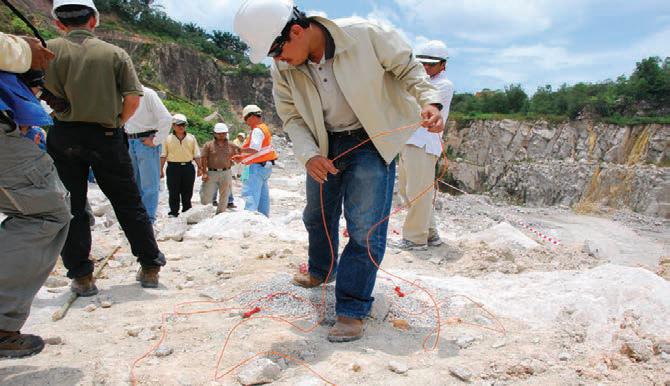
allowed to sit for a theory examination. In addition, the Shotfirer Licence will be issued to qualified and eligible Malaysians only and renewals will be based on the holders having completed certain hours of Continuing Professional Development (CPD) courses, which are in the planning stage.
New applicants must first be vetted by PDRM for security reasons and the control of persons allowed to handle explosive materials. Once they pass the vetting process, they take the theory test. When they pass, they are allowed to sit for the practical examination.
“JMG encourages engineers involved in blasting works to take the Shotfiring Licence to enable them to supervise the blasting work themselves,” says Shahar, adding that IEM can play a role in helping to improve and promote the safe use of explosives in blasting activities.
“Forastart,IEMcanassistJMGtoraisethecompetency level, such as setting the requirements of CPDs in terms of courses approved and hours required. In view of IEM having professional members who are experts in blasting and explosives, we also invite IEM to be one of the training providers. Apart from being competent blasting engineers and consultants for the designing and monitoring of blasts, it can also provide services on blast monitoring work, prediction and analysis of blast performance and other expert advice. Its members can also become lecturers for CPD courses, giving technical talks and conducting training programmes and technical visits. IEM can help JMG draw up or improve current modules and syllabi on more advanced explosives and blasting courses for professionals. ”
Inturn,hesaysJMGofficerscangivetechnicaltalks,get involved in forums and assist in providing courses planned by IEM. This will help improve the quality of engineers involved in this field, provide better services to the local industry and support the export of their expertise overseas.
On a more important note is the establishment of a Certification Panel to drive the enforcement of the Mineral Development (Blasting) Regulations 2013. Shahar points out that there is a requirement under these regulations for the formationofapanelwithrespecttoblastingandexplosives.
ThePanel,tobechairedbytheDeputyDirector-General of JMG, will consist of three representatives from JMG and four from the industry. Its functions will be to establish and review the syllabus for the shotfirers examination and to carry it out, to establish, assess and review the competency standards of shotfirers, to establish training requirements for shotfirers and, where deemed fit, to suspend certificates issued by JMG.
Shahar says the Panel will also oversee the regulatory requirements for having a blasting management plan before any work can be carried out. The plan must cover, among others, the blasting method, measures to monitor the impacts of the blasting and ways to deal with the occurrence of negative impacts. Consultants registered with the Board of Engineers Malaysia (BEM) who also possess the IEM practising certificate, are the ones required to produce the blasting management plan, in accordance with the requirements spelt out under Mineral Development (Blasting) Regulations 2013.
Touching on the current scenario and the potential for the commercial explosives industry here, Shahar says Malaysia has about 10 hard rock mines and 330 quarries (as at 2016) that use explosives.
“Malaysia is also building mega projects such as the MRT and LRT extensions, East Coast Rail Link (ECRL), Pan-Borneo Highway, Pengerang Rapid Project, the Tun Razak Exchange (TRX) development project, Bandar Malaysia and many other big commercial complexes. All these projects require building materials and most of them, like highways and railroads, need explosives to blast certain areas. The need will extend until completion of the projects. The consumption of explosives is also expected to increase with new projects in years to come,” he says.
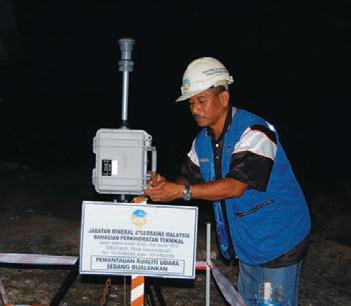
specialised uses such as urban blasting, underwater deepening, seismic, trenching, etc. These will require the expertise of blasting engineers. Normally, JMG is asked by the approval authorities to vet the blasting proposals forwarded by the blasting consultants, for suitability and practicality.”
Shahar highlights the challenges that his department faces in regulating industrial blasting activities.
As the nation develops further, with more constructions that will require more rock aggregates for building materials, this will lead to increased blasting activities at quarries and the use of more explosives.
Old buildings also need to be demolished so that they can be replaced with new ones. Demolition of high-rises or tall buildings requires explosives as will special projects such as pipe-line trenching, underground construction, etc.
“Statistically, about 10 years ago, we had only two explosives suppliers, but now with the increase in economic activities, we have four multinational companies supplying and exporting explosives, so based on these scenarios, the future of the explosives industry looks bright,” says Shahar.
“Apart from mining and quarrying, I also foresee that explosives will be used a lot in construction (such as foundation levelling and underground parking/ basement level), in roads (especially highways), in railway lines and in other
“With regards to blasting activities, two issues normally crop up: Security and safety. The security aspect is dealt by the PDRM, while technical agencies like JMG deal with the safety aspect. JMG’s focus on the safety issue is two-sided. One is the operational aspect, which requires the development of skilled workers and professionals in safety, safe-work/best practices and compliance to regulations/laws,” he says.
“The second encompasses regulations and laws vis-a-vis regulators. The industry needs better co-ordination among thevariousregulators.Itseemsheavilyregulatedbecauseit isbased onwhere theactivities takeplace.It issite-specific, such as in mines, quarries, local areas or outside the local
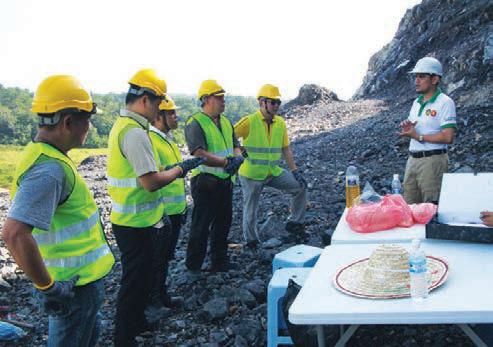
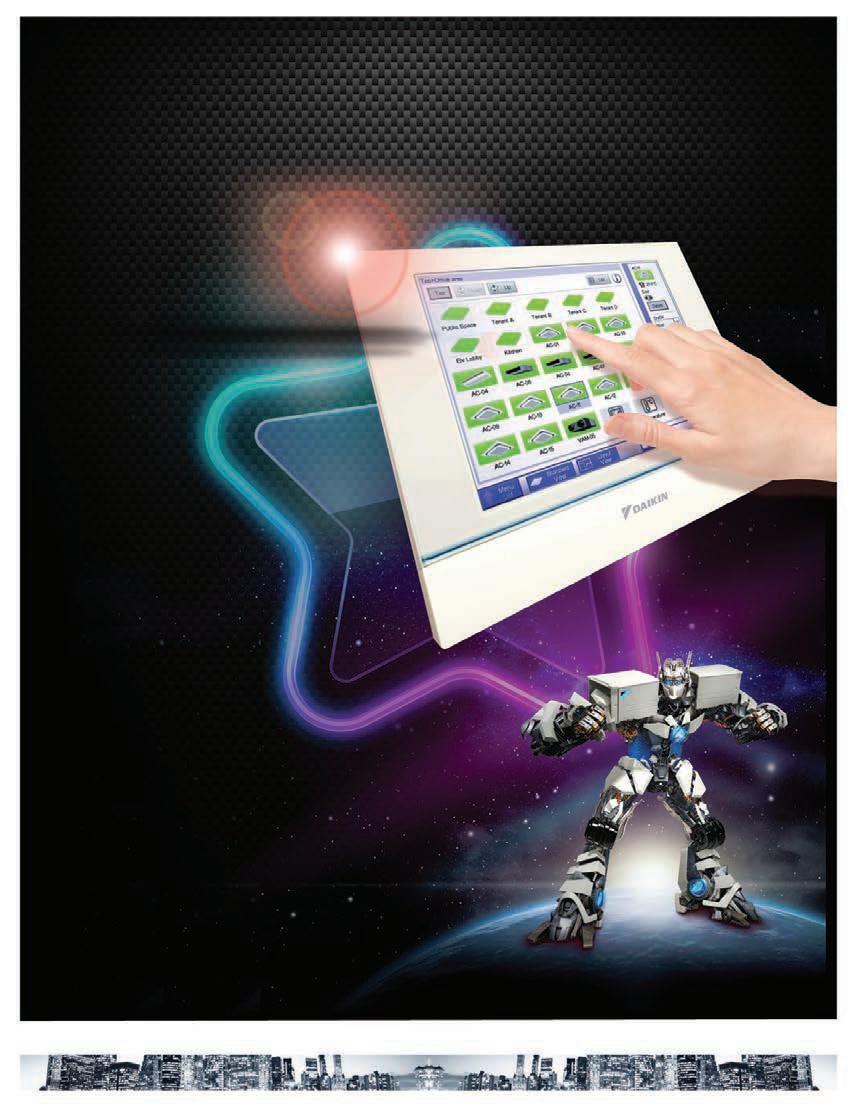

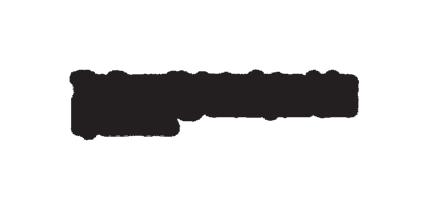
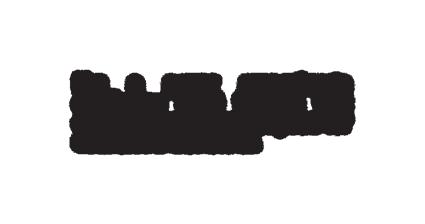
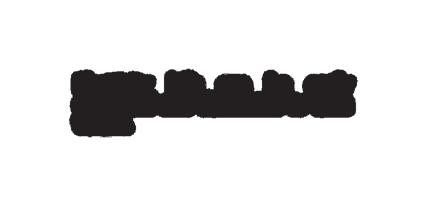

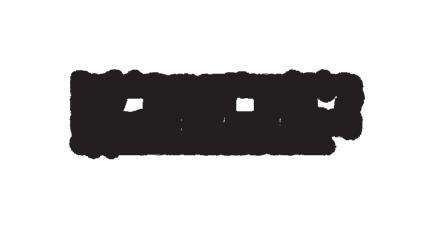
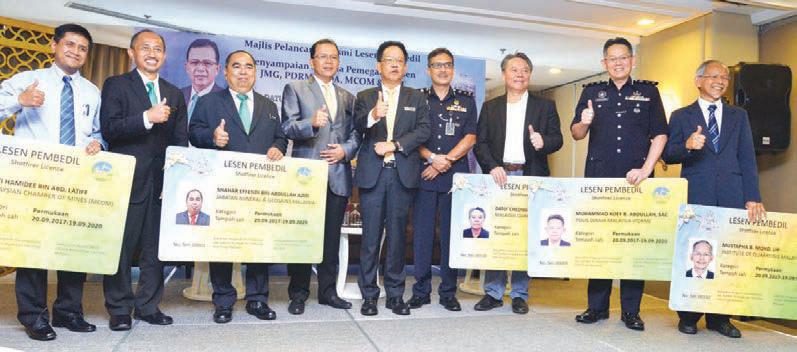
areas. Ideally, it will be best to have one regulatory body to oversee all the sites.”
To add to this, he explains that sometimes, security and safety requirements are mixed up, with no clear dividing line.
“Take for example, the requirement of the Shotfirer or Blasting Expert Certificate from PDRM and JMG. Previously both certificates were needed in quarries whereby the Blasting Expert Certificate was for purchasing and transporting explosives, while the Shotfirer Certificate was for blasting activities,” he says.
“This caused enormous problems to the industry becausenotonlywerethesecertificateshardtoobtainbut companies also needed to have both certificates to carry out blasting. Besides, assessment standards were different although technically, they were meant for the same purpose.However,undertheguidanceoftheNationalBlue Ocean Strategy (NBOS) promoted by the Government to ease measures in doing business, as well as the willingness of the respective regulators, the issue was resolved and a joint Shotfirer Licence was issued that was recognised by both agencies.”
Shahar reiterates that JMG is now working in tandem with PDRM to oversee the competency and certification for blasting and explosive-related uses.
“With this mammoth task, JMG has to plan and develop the competency and certification in the industry. Traditionally, JMG is the regulator for blasting and use of explosives in mines and quarries governed under the Mineral Development Act 1994, Blasting Regulation 2015 and The State Quarry Rules. However, outside of mines and quarries, the regulator or approving authority to be exact,
would depend on site specifics, such as the respective local authorities for towns and cities. So the challenge is to certify works using explosives in places outside mines and quarries. But since JMG and PDRM have been tasked with enhancing the competency and certification of explosives use under NBOS, the task will, hopefully, be much easier.”
Currently, JMG requires mines and quarries to have competent personnel or to use the services of competent persons for the following:
a) Operational mining or quarrying scheme.
b) Blast Management Plan.
c) Mine or quarry manager.
d) Blast design and shotfiring.
e) Safety, health and environment officer.
f) Effluent samplings and analysis.
g) Monitoring and analysis of vibration, airblast and dust.
h) Technical supervisors and
i) Training/basic courses for new workers and refresher courses for existing workers.
“So, to set a standard on competency certification for the above, a lot of work is needed to build up modules and syllabi. It is hoped these can also be used for works done outside mines and quarries,” says Shahar, adding that immediate needs are competency and certification for underground construction blasting like tunnelling, basement parking and building of underground train stations.
Apart from requiring the mining and quarrying industry to have the above-mentioned competency, Shahar says JMG is also involved in other matters concerning explosives usage such as providing expert advice to other authorities on applications for construction projects using explosives.

Iplaced my hands on the tubing (carbon steel pipe) which protruded vertically from the rig floor. It was connected 2.5 km to below the surface. This was the moment I had been waiting for. Everyone went quiet. I gave the signal to release the mechanical bar to rupture the disc that would trigger a string of explosions underground. One minute… 2 minutes… 3 minutes passed. Then I felt the tubing shudder. This was an indication that the well had been perforated successfully. I beamed with excitement as this was my very first calculation of an underbalanced perforation using the Tubing Conveyed Perforation method. As a young engineer, I did not get the chance to really design, calculate, prepare and execute the procedure in the field until I had proved I was worthy of leading the whole operation. It was not an easy task; on my shoulders were the lives of the 128 people on board the drilling rig at that time. If I had made an error in calculation or if I hadn’t followed the guidelines accurately or if I hadn’t thought through the steps carefully, then I would be putting every single one of us in danger. As engineers, it is our responsibility to ensure the safety of everyone in all our projects.
This article is written to share the knowledge on the use of explosives in the oil & gas well perforation. Well perforation is an important segment of the process of well drilling and completion. After the drilling, running in casing and cementing are completed, the operation is shifted to completion phase.
Upon cleaning the wellbore, a gun is lowered to punch and create holes in the casing for fluids from the formation to flow in. Well perforation is complex, with many details that need to be described meticulously for a complete understanding. The writer will attempt to describe the process in a simplified manner for general understanding.
The purpose of well perforation is to provide a channel between formation (that contains hydrocarbon) and wellbore, which is separated by the cemented casing.
Figure 1 shows how this done. The first step is lowering a gun into the hole to the intended depth where there is good hydrocarbon potential. In the second step, the gun is fired, creating holes on the casing and cement to allow
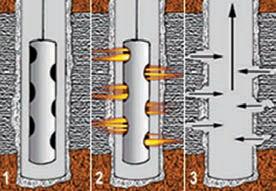
the communication from outside of the casing to inside. The third step shows that the holes created allows hydrocarbon to flow into the casing or wellbore area.
As mentioned at the start, we were performing a Tubing Conveyed Perforation. In this method, the gun is lowered to the intended depth. There are two methods to do this. The first method uses a strong wire, normally electric wireline, simply called E-Line. This line conducts electricity for information transfer to carry instruction from surface or to retrieve information from the bottom to the surface. Another is to use a wire called slickline, which is possible in newer technologies. It utilises fibre optic lines which can transmit data along the length of the slickline. This information allows very precise operations of various down-hole tools, including perforation guns.
The second method is to use either normal tubing or coiled tubing. This method is especially required when dealing with high angle wells. Imagine a piece of heavy equipment is lowered down the hole. Due to gravity and the weight of the equipment, this is naturally easy. However, high angle wells dampen this gravity effect due to contact with the hole wall and buoyancy force from wellbore fluids. So, to add the weight as well as move the equipment down the hole, solid body tubing is used instead of just wire.
Another thing mentioned at the start of the article is that the perforation was done underbalanced. There are two variations in the perforating technique – overbalanced and underbalanced.
An overbalanced perforation means the casing is filled with fluids which will create higher hydrostatic pressure inside
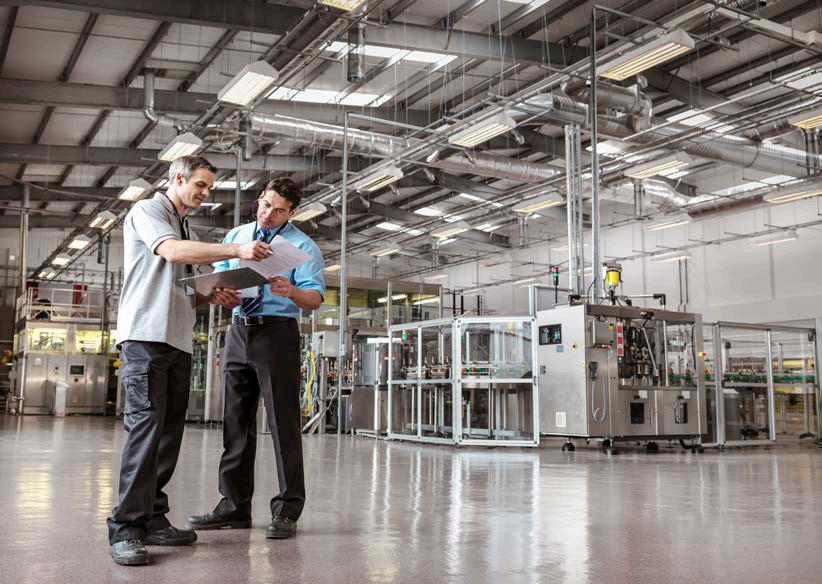
Discover the MGE Galaxy 300 10-80kVA
• Secure: Maximum protection and availability with double-conversion online topology
• Compact: Wide or narrow tower in space-saving footprint
• Simple: Easy to install and operate
• Efficient: up to 93.5%, reduces cost of ownership
• Flexible: 1+1 parallel capability meets redundancy needs
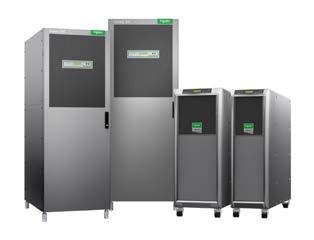
• Serviceable: Push-open, front access to maintenance bypass and slide-out boards make servicing easy
• Fast-charging: Shorter ba�ery recharge time prevents deep discharge damage
• Compatible with Schneider Electric's lithium ion ba�ery solution
Lithium Ion Ba�ery features
Reduces footprint
Improved ba�ery lifetime / reduced maintenance
Improved backup storage predictability and manageability
Reduce cooling constraints
Reduce weight
Reduce total cost of ownership
Call us now. We can help you to optimize energy and sustain performance.
Northern
Mr. Paul Phuah
Central
Mr. Steven Ong
Mr. Louis Loke
Southern
+6012-477 1671 Bioenergy Projects Sdn. Bhd.
+6012-690 6920 KVC Industrial Supplies Sdn. Bhd.
+6016-330 1366 MCL Berhad
Mr. Chee +6016-723 4723 MCL Berhad
Mr. Steven Ong
East Malaysia
Mr. Neo
+6012-690 6920 KVC Industrial Supplies Sdn. Bhd.
+6016-710 0013 MCL Berhad

the casing compared to the formation pressure. Therefore, when holes are made during the perforation, the pressure from the inside casing will stop hydrocarbon or any other fluid from the formation to enter the wellbore. Hydrostatic pressure in the wellbore is larger than the formation pore pressure. This is to ensure the well is always under control. The complexity here is to have a good pressure difference balance between the outside and the inside of the wellbore, not too high and not too low. If the pressure difference is too high, then there is always the potential of fluids inside the wellbore to lose out into the formation. This is not desirable as fluid losses not only need to be replenished but this may also lead to formation damage.
If the pressure difference is too low, fluids from the formation may enter the wellbore, which may also result in a well control situation. Thus, correct analysis of pressure difference is very important.
On the other hand, underbalanced perforation can only be done using the tubing. This is because the tubing has to be lowered into the hole and this creates a lower pressure compared to the formation. Therefore, upon perforation, there will be a rush of pressure from the formation entering the wellbore.
Again, a balanced pressure difference is important because too great a difference will create a great push of pressure from the formation which can be dangerous if uncontrollable. If the difference is too low, it may not result in an effective underbalanced perforation which will promote better production. Underbalanced perforation is usually recommended when the formation does not have good flow potential. Underbalanced perforation will help by reducing formation damage due to invasion of fluids from the wellbore
The perforating gun has 4 components (see Figure 2): Conveyance for the shaped charge, individual shaped charge, detonating cord and detonator. When the gun is detonated, it will go off instantaneously with the pressure of 10-15 million psi. This pressure penetrates the
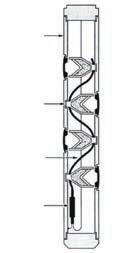
(Source: http://www.devonenergy.com
casing as well as the formation, creating a radial path for hydrocarbon to flow in.
Figure 2 also shows the sample of perforating gun system, a hollow steel carrier wireline conveyed type. The detonator is actually below the charges by design. Some perforating systems such as Thru Tubing Wireline Conveyed Perforation as well as Tubing Conveyed Perforation commonly have the detonator above the charges.
Shaped charge plays an important role in creating the explosion to penetrate the formation. Figure 3 shows the sample of shaped charge with the cross-section figure showing the components of a shaped charge.
Thermite is a pyrotechnic composition of metal powder, fuel and metal oxide. When ignited by heat, thermite undergoes an exothermic reduction-oxidation reaction which can create brief bursts of high temperature in a small area.
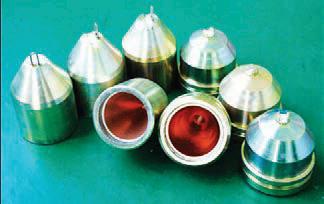
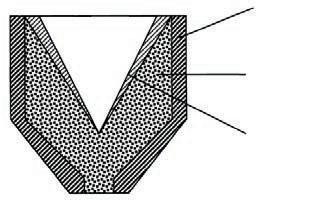
Figure 3: Shaped Charge (Sources: https://media.licdn.com/mpr/mpr/ shrinknp_800_800/ AAEAAQAAAAAAAAhEAAAAJDM3NWYxMD EzLWE0MmYtNGJiMS1iMzBhLWJkZmU0MTBhNDE0ZA.jpg, http://patentimages.storage.googleapis.com/US20110146519A1/ US20110146519A1-20110623-D00000.png)
There are 3 types of explosives commonly used in well perforation: RDX, HMX and HNS. The use of these explosives is highly controlled by the operations as well as the authorities. RDX is a white solid organic compound classified chemically as nitramide, and similar to HMX. RDX is a more energetic explosive than TNT (Trinitrotoluene - yellow solid that is sometimes used as a reagent in chemical synthesis, but is best known as an explosive material that is easier to handle). RDX was popular during WWII and was secretly
Title: IEM Form of Contract for Civil Engineering Works & IEM Form of Contract for Mechanical and Electrical Engineering Works 16 Nov 2017
Organisedby:SubCommitteeonEngineeringContractsofStanding CommitteeonProfessionalPractice
Time :9.00a.m.-5.30p.m.
CPD/PDP :7
Title: ICTSIG Junior Digital Class (November 2017) - S.T.E.M fun
learning Introduction: Prototyping of Arduino application using Microduino #1 17 Nov 2017
Organisedby:InformationandCommunicationsTechnologySpecialInterest Group
Time :8.00a.m.-12.00p.m.
CPD/PDP :0
Kindly note that the scheduled events below are subject to change. Please visit the IEM website at www.myiem.org.my for more information on the upcoming events.
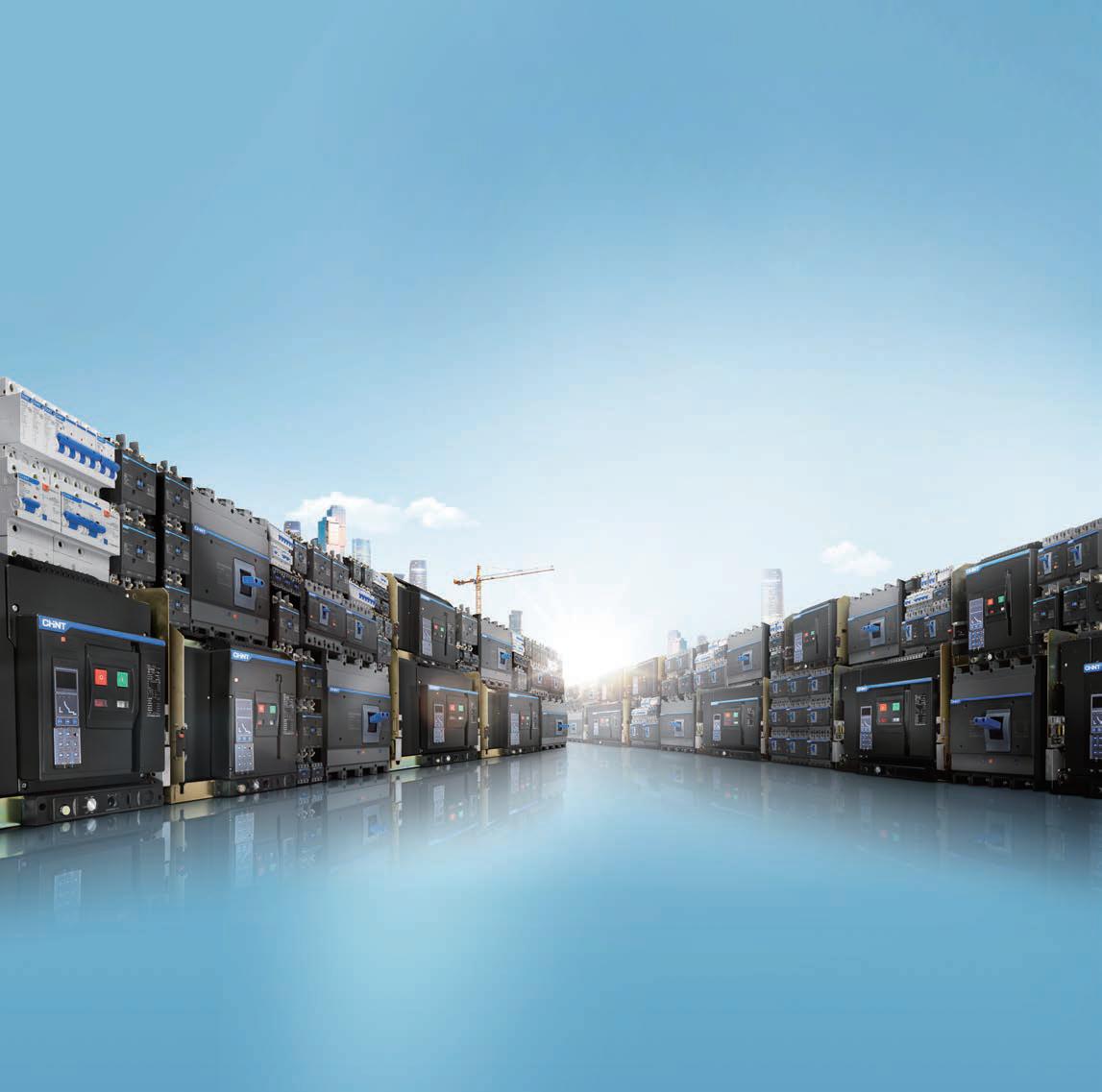
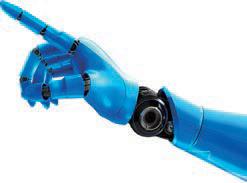


For Malaysia, in particular Sarawak, the diversity of available energy resources is a huge advantage. In addition to renewable energy resources such as hydropower, biomass and solar-generated power, Sarawak also has a large potential reserve of non-renewable fossil fuel such as oil, gas and coal.
Coal is actively mined in several areas in the state, including Silantek, Mukah and Merit-Pila in central Sarawak. These are among the largest coal deposits in the state and in the country. Coal plays a vital role in the generation of electricity in Malaysia, especially in Sarawak. Coal-fired power plants currently produce approximately 10% of the state’s electricity and the figure is steadily growing. There are many reasons for the increasing use of fossil fuel, including strategic, economic and availability factors. Use of coal as an energy source, together with its useful heating properties in the manufacture of cement and bricks as well as in power generation, is now commonplace in Sarawak. Furthermore, with the relatively high price of oil in the global market, electricity corporations find that coal is a more economical option.
The Silantek coalfield had been in operations as early as 1920s. Previous investigations of the coalfield were carried out by the following companies:
• Evans J.W. (1925-1926).
• Osborne and Chappel (1928-1931).
• N.S. Haile (1954) and the Nippon Coal Mining Sdn. Bhd. (1961-1962).
• Joint investigation between Nippon Coal Mining and Ataka Company (1969-1970).
• Sarawak Coal Prospecting Corporation (1981-1982) was granted a GPL in 1981 to prospect the Silantek and Sg. Merah region.
After the Sarawak Coal Prospecting Corporation, Luckyhill Mining Sdn. Bhd. applied for and was granted a prospecting licence for the Silantek coalfield. Prospecting work started in April 1983 and ended in November 1983.
Currently, the coalfield produces a good quality coking coal with a relatively high net calorific value. Due to its excessively thick overburden ranging up to 55 metres, a longwall mining method is being carried out in the underground mine in the Silantek area.
An exploration company has been prospecting for coal in the Merit-Pila coalfield in Sarawak from 1974 to 1978. Detail surveying, mapping and diamond drilling were carried out to further delineate the coal reserves by establishing the number and thickness of coal seams present, the
geological structure of the area and the quality of the coal. The area was proven at the time to have coal reserves of 4.4-5.2 million tonnes of sub-bituminous coal which could likely be recovered using the opencast mining method.
As for the Mukah-Balingian coalfield, the area was first explored in 1974 by Sarawak Shell Berhad and Amax International, followed by a few more local companies. Currently, 6 mineral tenement holders (Mining Lease holders) occupy several areas in Mukah and Balingian where the quality of lignite is slightly low and of an inhydrous nature. A straightforward approach of opencast mining is being carried out here with lots of excavation work and machineries used in the mining pit and along the benches.
1. Opencast mining
• Use of excavators, haulage lorry.
• Proposed to use explosive.
• To form several pit benches for ground stability.
• Simple documentation of Operational Mining Scheme.
2. Underground mining
• Using longwall method.
• Sometime explosives are used when approaching granitic host rock.
• Complex preparation of Operational Mining Scheme.
• Ventilation system and roof supports.
The main objective in any commercial mining operation is the exploitation of the mineral deposit at the lowest possible cost with a view of maximising profits. The selection of physical design parameters and the scheduling of the ore and waste extraction programme are complex engineering decisions of enormous economic significance.
The planning of an open pit mine is, therefore, basically an exercise in economics, constrained by certain mining engineering and geologic aspects. In an open pit coal mine, the pit bottom would be the bottom mined coal seam elevation, since it is usually feasible to extract multiple seams when using surface mining method to extract coal.
Sometimes coal seams run too deep underground for opencast mining and so require underground mining. The complexity of mining engineering factors such as ventilation
Authorised Publisher: The Institution of Engineers, Malaysia (IEM) - JURUTERA
Explore our full set of Professional and Integrated PUBLISHING MANAGEMENT SERVICES:
» Project Management
» Creative Management
» Ad Space Management
» Mailing Management
» Print Management
• Annual Reports
• Booklets • Brochures
• Buntings • Business Cards
• CD / DVD Replications
• Calendars • Cards & Invitations
• Certificates • Custom Printings
• Envelopes • Folders
• NCR Bill Books • Notepads
• Leaflets • Letterheads Posters


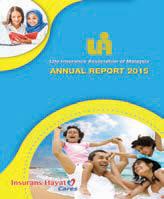




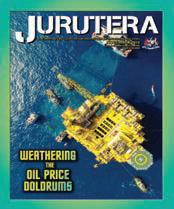
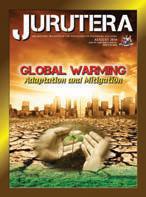


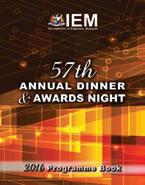
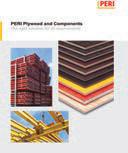





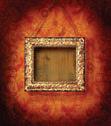


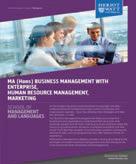







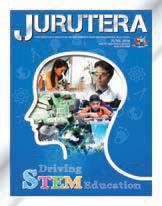







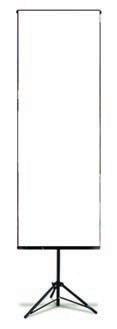


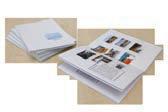
system, selection of material for roof supports, underground surveying etc., proves that it can be quite challenging to implement. A thorough analysis of an expert consultant’s technical review, is needed.
From 2000 to 2016, 27 million tons of coal were produced in Sarawak and the figure is expected to go up with the increase in the number of prospecting licences for coal in recent years and due to high energy demand with the introduction of the Sarawak Corridor of Renewable Energy (SCORE) project.
Mining in Malaysia is under the supervision of the Department of Mineral & Geosciences (DMG) Malaysia, as stipulated in the Mineral Development Act 1994 (Chapter 525) and its Regulations. The main role of DMG is to ensure that the tenement holders execute mining operations inaworkmanlike manner, efficiently and applying engineering best practices as well as maintain productive and sustainable operations. The mining companies are also required to plan and implement the rehabilitation programme during/and post-mining phases.

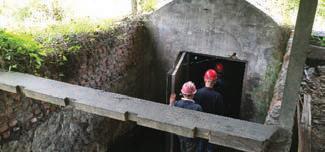
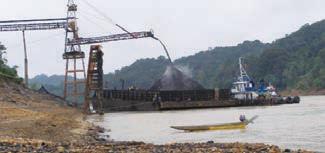
Apart from that, the self-regulated Act actually gives the mineral tenement holders a certain degree of freedom in terms of setting up both mining and technical conditions, based on their own operational considerations, with supervision and approval from the Department. Operational and mining engineering aspects pertaining to safety, health and environmental compliance will always be the Department’s main commitment for advancement and a sustainable mining industry, in tandem with the National Mineral Policy 2.
With the depletion of non-renewable oil and gas resources, the availability of coal in Sarawak is of great strategic value to Malaysia. However with deeper deposits, there is a need to apply high technology mining methods to ensure a safe mining operation.
Therefore, mining companies need to hire and train very highly qualified people, particularly in underground mining. Methane emission is also a problem when it comes to underground coal mining and DMG and the operators will need to address this at source. Safety is a necessity to attract more locals to the industry.
Sarawakhasagoodfutureincoalmining.Coalwillallow Malaysia to diversify her energy resources and reduce her dependence on oil and gas.
Salehudddin bin Mohamad, is the Head of Mine and Quarry Unit at Department of Mineral & Geoscience Malaysia, Sarawak. He has 14 years working experience within the Department.
Ir. Hj. Look Keman bin Sahari, is a Consultant Engineer specialising in explosives and blasting in Mining, Quarry and Construction. He retired from the Mines Department, Malaysia (now DMG) in 1996.
Title: 27th Annual Professor Chin Fung Kee Memorial Lecture : Underground MRT in Kuala Lumpur - The Inevitable Urban Transit Solution
18 Nov 2017
Organised by: The Institution of Engineers, Malaysia and Engineering Graduates Alumni Association Universiti Malaya (2017)
Time : 9.00 a.m. - 1.00 p.m.
CPD/PDP :2
Title: ICTSIG Digital Class (November 2017)Introduction to Web Page Design WITH HTML, JAVASCRIPT and CSS (PART 3) - Postponed from 11 November 2017
18 Nov 2017
Organised by: Information and Communications Technology Special Interest Group
Time : 11.05 a.m. - 1.00 p.m.
CPD/PDP :2
Kindly note that the scheduled events below are subject to change. Please visit the IEM website at www.myiem. org.my for more information on the upcoming events.
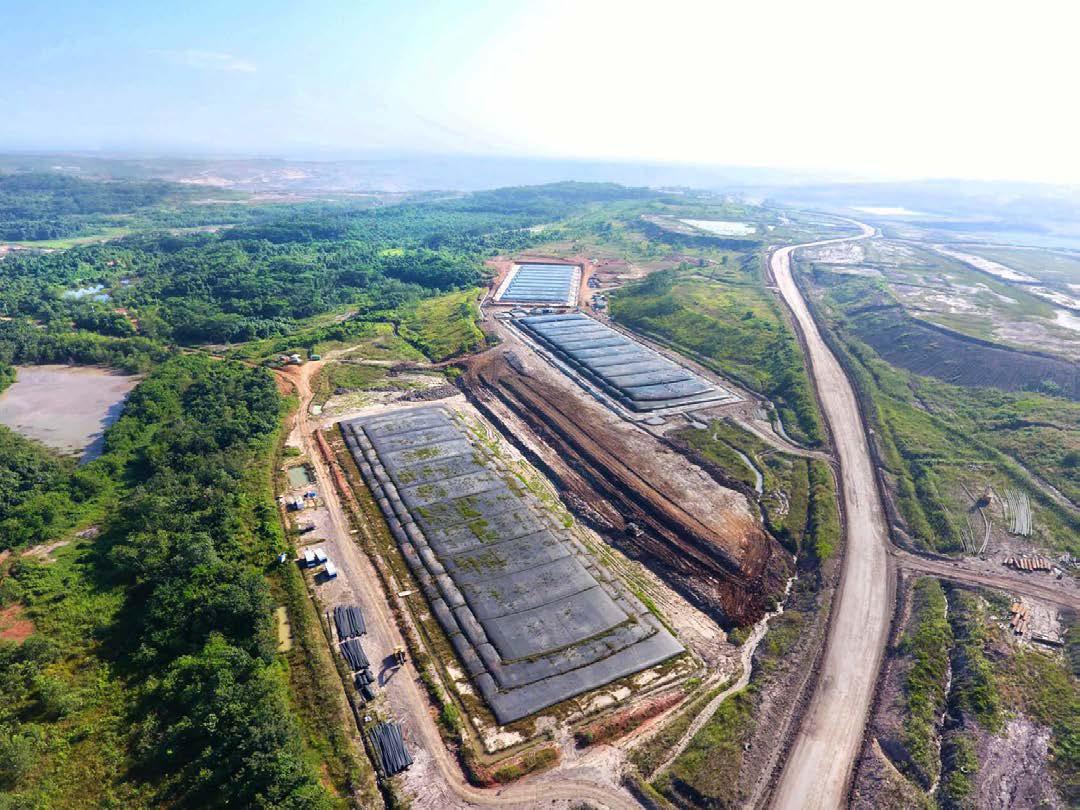


The Oil & Gas industry was one of the pioneers which adopted digital technologies as early as in the 1980s. The industry had long depended on high volume of data to understand reservoir resource, production potential, improving safety and health and boosting operational efficiencies at oil fields.
However, the true potential of the data generated is yet to be realised by generating actionable insight. Based on a recent study, digital transformation can unlock approximately US$1 trillion in value for the Oil & Gas industry. Environmental benefits include reducing CO2-equivalent (CO2e) emissions by approximately 1,300 million tonnes, saving about 800 million gallons of water, and avoiding oil spills equivalent to about 230,000 barrels of oil. Ever since oil prices began declining, digitalisation had been rising as a strategic business priority for Oil & Gas companies. This “new oil field” paradigm will differentiate between the players that succeed and those that disappear over the next decade.
Digitalisation is the use of digital technologies to change a business model and to provide new revenue and value-producing opportunities. Digital technologies include Big Data Analytics, IIoT, Mobile Devices, Cloud, Robotics and Drones, Artificial Intelligence, Wearable Technology and Social Tools. According to a recent survey by Accenture, Big Data Analytics and IIoT are emerging as top digital topics for Oil & Gas companies, based on the percentage of current investment and the expected investment over the next 5 years.
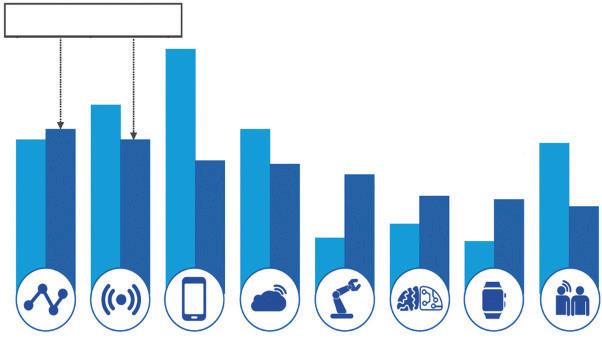
* The percentages in the bars are the proportion of Oil and Gas companies surveyed. Source: Accenture,The 2016 Upstream Oil and Gas Digital Trends Survey Investing todayInvesting over the next 3 to 5 years
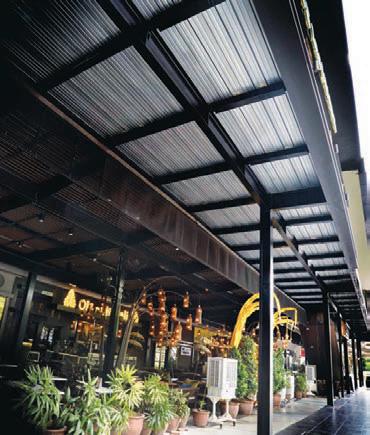
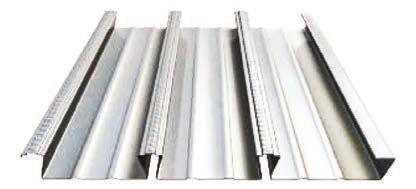
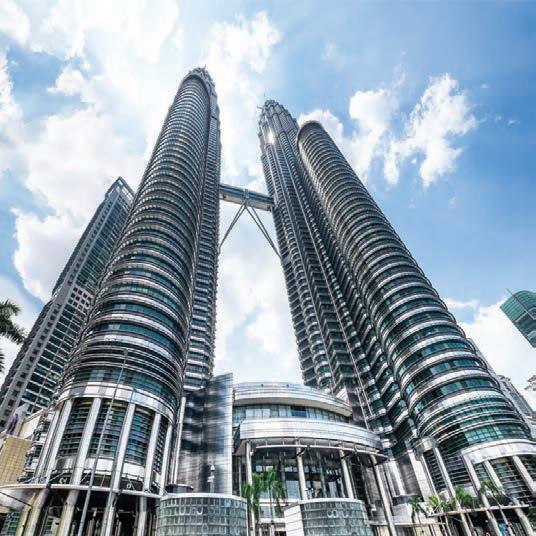
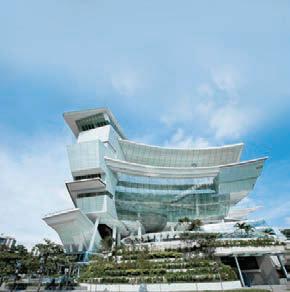


We are a supplier of high quality geosynthetic products used for soft soil stabilization, slope reinforcement, coastal erosion protection, river bank protection, landfills,
Internet of Things is a system of connected computing devices, machines, objects or people with unique identifiers and the ability to transfer data over a network withouthuman-to-humanorhuman-to-computerinteraction. IoT is a revolutionary advancement between operation technology (OT) and information technology (IT). IoT also enables machine-to-machine interactions.
Plants and refineries are mostly automated and under constant surveillance and control loops. Advanced measurement devices such as electronic flow metering technology, data-intensive pipeline inspection gauges (PIGs), SCADA, and digital sensors are embedded in vessels, tanks, compressors, turbines and pipelines to capture real time data. Recent offshore drilling platforms have about 80,000 sensors. All real time data captured via these sensors are usually sent to the control rooms for diagnosis and monitoring activity by experts.
We also provide design, specification, bill of quantities, cost estimate and drawings free-of-charge.








Machinery used in O&G, especially drilling equipment, has to operate in harsh conditions and, over prolonged periods, is susceptible to wear and damage. With the advancement of IoT, machinery is now fitted with smart sensors to collect data about its performance, enabling maintenance and parts replacement to be done efficiently.
IoT has enabled unstructured, machine-generated data to be analysed for insights that drive improvements in design and operation, leading to smarter, faster decision-making with minimised downtime.
Big Data Analytics is the theory and practice of applying advanced computer analysis to the ever-growing amount of digital information collected from smart elements. A single drilling rig can generate one terabyte (1024 gigabytes) of data per day. The total amount of data collected from an oilfield during its lifetime can reach up to 15 petabyte (15 thousand terabytes).
Big Data Analytics will help companies navigate this enormous amount of data. An analyst builds a simulation interconnecting these data and the elements of business. The simulation is used to explore how tweaks in certain operations may have an impact on the productivity or efficiency of another.
The huge amount of data collected from all segments of the business activity results in a higher degree of accuracy in simulations, as close as possible to the way things will play out in the real world. This helps decisionmakers make better decisions which can affect the company’s fortune. Recent findings show that only 13% of O&G companies are using the insight from the Big Data Analytics to drive their approach towards the market and their competitors. Based on a recent study, analytics can help exploration companies extract 3-5% more oil.
Shell uses Big Data Analytics for preventative maintenance and to reduce breakdowns and downtime. In 2015, it saw a US$1 million return on an US$87,000 investment in sensors and analytics to monitor oilfields in some of Nigeria’s toughest terrain.
0872)
Cisco estimates that companies will see 11% earnings growth across the value chain, with most of the cost savings upstream. One integrated oil company managed to save about 10% on unit costs by digitising a remote offshore operations centre. Another reduced operating costs per barrel by about 10% and improved recoverability of reserves by applying selective applications in intelligent oilfields through collective computing and sharing real-time information at all company levels. The cost saving potential is evident. Disruptions in supply, demand and commodity prices will maintain the pressure on oil price and push O&G companies to focus on reforming their portfolio and establishing a bigger footprint in the digital transition to bring down the cost of production.
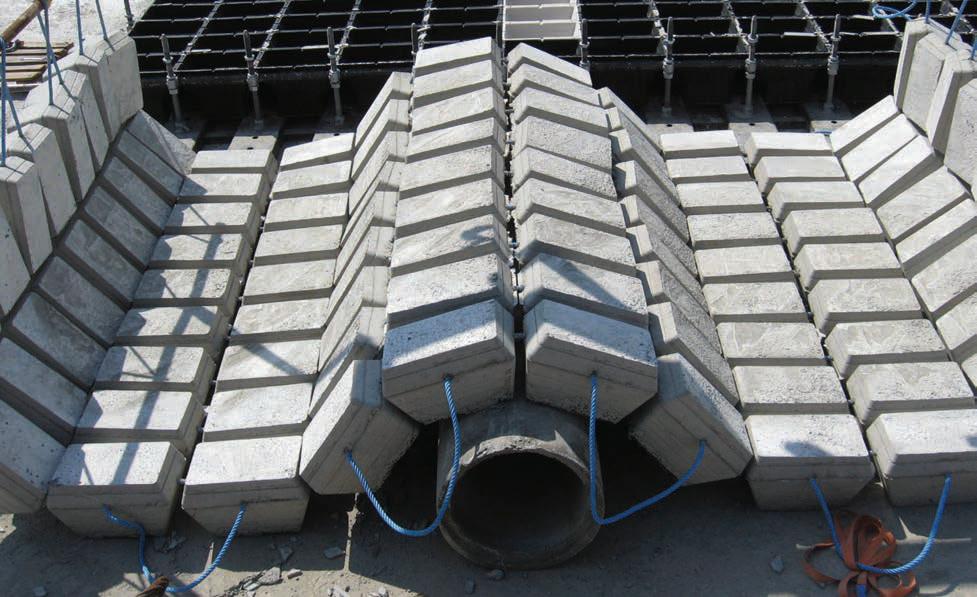
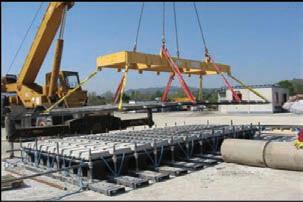
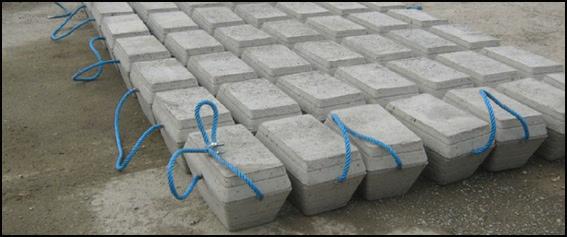
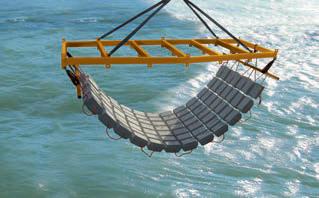
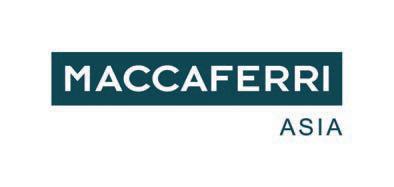


There is also a growing number of push and pull from the industry itself for swift digitalisation effort. The first drive is from the search for new hydrocarbon deposits, which carries a high cost of over US$100 million. With the huge amount of effort, material and manpower needed in new field explorations, there is no room for error or looking in the wrong place.
The emerging digital assets, such as drilling algorithm and intelligent pipelines innovation, are also driving the digitalisation effort positively. With advancement of the technology, communication between field workers and smart devices is becoming more collaborative and twoway. On-site work autonomously performed and remotely managed, for example, use drones for inspections, material transfers and maintenance.
The industry is also venturing into innovations and research efforts on application of robotics to handle complex and repetitive task such as connecting pipes and replacing broken machinery. At the moment, robotics is being used in autonomous drilling where workers are completely removed from the drill floor. Other advancements include robotic moving platforms for shale wells and remotecontrolled trucks to transport oil or gas. According to a study, 47% of jobs in the industry will be automated with robotics over the next 20 years.
The rapid advancement of technology is expected to save the field service industry US$1 billion annually. This is possible with the use of smart glasses to diagnose and fix problems faster. For example, maintenance workers can expect to get instant access to information regarding a specific pump and its maintenance history or a wearable smart device such as Google Glass, which identifies the equipment automatically.
Royal Dutch Shell is one of the world’s largest O&G companies and the fourth largest by revenue. It has been developing the idea of a “data driven oilfield” in attempts to bring down the cost of drilling for oil which is the industry’s highest expense.
Shell has partnered with Hewlett-Packard to develop special fibre optic sensor probes which are put into the earth at the survey spot; these will register the pattern of the waves distorted as they pass through oil or gas. Data is then transferred to its private servers maintained by AmazonWeb Services. Shell expects to get a far more accurate image of what lies beneath. This will then be compared alongside others around the world to enable geologist to make more accurate recommendations on where to drill.
Schlumberger is the world leading provider of technology for reservoir characterization, drilling, production, and processing to the oil and gas industry. Schlumberger is now monitoring subsea conditions using “wave gliders” or unmanned marine surface vehicles. These use solar and wave energy and can travel across the oceans to collect data for up to one year without fuel or crew.
In 2016, GE announced a series of partnership agreements with small and large oil companies to implement digital devices, databases and sensors which includes Meridium (a leader in the industrial asset performance management), Bit Stew Systems (experts in data integration and analysis for Industrial Internet systems) and ServiceMax (a provider which enables technologies for field service technician and engineers). GE is also investing in the deployment of more than 550,000 digital twins and exploring various scenarios for interaction between users and digital twins, with the aid of voice recognition and Microsoft HoloLens visualisation.
Digitalisation will drive the industry to rely less on personal experience and preference and to rely more on science which can be understood and shared by all. Some jobs such as equipment inspector may possibly be replaced but jobs requiring digital literacy skills, analytic skills and skills of developing new software and intelligent hardware, will emerge as the new requirement in the industry.
In future, wells may also be equipped with smart technologies that enable them to initiate and participate in conversations to increase performance using social tools such as Chatter. A well may, for example, initiate a discussion thread when there is a possible problem such as high temperature reading or abnormal vibration. The idea is for the well to initiate the dialogue, similar to how a patient calls for a doctor. Smart analytics can then pull specific people with the right expertise into the discussion forum to solve the problem collaboratively.
The vision is to have an unmanned control centre powered by the platform with artificial intelligence coordinates operation in real time, bringing together supply and demand. This operating model can significantly increase the life-cycle of O&G assets while driving efficient operations and HSE performance.
Digitalisation of the O&G industry is only possible with the active involvement of engineers. However, the expectations from engineers may differ in the digitalisation era.
• 11,900 new data analysts are needed in the energy industry to make sense of big data. 90% of these new jobs require excellent digital skills, which are different from engineering skills of the past. The expectation is to have digital literacy and scientific skills with the ability to interpret and turn informationintokeydecisions.Futureengineersneedtobe comfortable working with new digital tools, analytics and to understand behavioural economics.
• Engineers need to develop just-in-time skills and to use technology to support new skills. In future, they will not only be relying on years of experience but they will also need to acquire just in-in-time skills and to apply these directly at work.
• With digitalisation, the industry will rely on an open innovation model to solve problems in innovative manner. Digital innovation will be a highly sorted out skills needed in an engineer.
• In order to be successful, engineers will have to remain agile to adapt to the changes and be flexible enough to respond quickly to dynamic technology changes.
• Certainly, there will be an increasing need for engineers to work on providing only the right data to the right people at the right time, in an easily digestive format.
• To be successful, engineers must remain agile to adapt to current changes and be able to respond quickly to dynamic technology changes.
In order to gain a competitive advantage, O&G companies will need to develop a strategic plan for the use of digital technology, over the next three to five years. With the current market situation of volatility and uncertainty, these companies will need to focus on transformational efforts required to create a winning strategy. They must remain agile to adapt to current changes and be flexible enough to respond to the dynamic technology changes and grasp the full potential of digitalisation. The expectations from engineers to enable this new paradigm shift are enormous; they will be expected to remain agile and lead the change process.
“It is not the strongest or the most intelligent who will survive but those who can best manage change,” – Charles Darwin.
[1] Accenture. (2014). Digitizing Energy (pp. 1-4). Accenture. Retrieved from http://The Future of Work in the Oil & Gas Industry
[2] Accenture. (2014).The Future of Work in the Oil and Gas Industry (p. 1). Accenture. Retrieved from https://www.accenture.com/ my-en/~/media/Accenture/Conversion-
[3] Assets/DotCom/Documents/Global/PDF/Dualpub_1/AccentureOil-Gas-Future-Work-Infographic.pdf
[4] BAIN & Company. (2016). Technology, Strategy & People: Becoming a Digital Oil & Gas Company (pp. 1-8). BAIN & COMPANY. Retrieved from http://www.bain.com/publications/ articles/becoming-digital-oil-and-gas-company.aspx
[5] Choudhry, H., Mohammad, A., Tee Tan, K., & Ward, R. (2016). The next frontier for digital technologies in oil and gas. Mckinsey Quartely, August 2016, 1-3.
[6] Clark, N., Abraham, A., & Sanvar, A. (2016). Unrealized potential of digital. Oil & Gas Financial Journal, 1-17. Retrieved from http://www.ogfj.com/articles/print/volume-13/issue-5/features/ unrealized-potential-of-digital.html
[7] Digitizing Energy Podcast Transcript “The Future of Work in the Digital Age”. (2014).
[8] Marr, B. (2017). Forbes. Retrieved 15 May 2017, from http:// www.forbes.com/.../big-data-in-big-oil-how-shell-uses-analyticsto-drive-business-suc
[9] Martinotti,, S., Nolten, J., & Steinsbø, J. (2014). Digitizing oil and gas production. Mckinsey Qumckinsey Quarterlyarterly.
[10] Moore, S. (2017). Staffing the Oil and Gas Industry for a Digital Future. Smarter With Gartner. Retrieved 27 May 2017, from http://www.gartner.com/smarterwithgartner/staffing-the-oil-andgas-industry-for-a-digital-future/
[11] PWC. (2017). 2017 Oil & Gas Trends (pp. 3-16). PWC. Retrieved from https://www.strategyand.pwc.com/trend/2017-oil-and-gastrends
[12] World Economic Forum. (2017). Digital Transformation Initiative Oil and Gas Industry (pp. 2-36). Geneva: World Economic Forum. Retrieved from http://reports.weforum.org/digital-transformation/
Author's Biodata
Ir. Davendren Vereya, graduated with a Mechanical Engineering Degree and MBA in Construction Management. He has involved in many engineering projects in the oil & gas industry as mechanical engineer, piping engineer & application coordinator. He is also a committee member in Oil, Gas, Mining Technical Division, IEM.
The IEM Council records its heartiest congratulations to IEM President Ir. Dr Tan Yean Chin for being awarded the SME Icon Award 2017 from the Malaysian Service Providers Confederation (MSPC) on 2 October 2017
The IEM Council records its heartiest congratulations to IEM Past President Y.Bhg. Dato’ Ir. Dr Gue See Sew for the following achievements:
1. Conferred the SME Icon Award 2017 from the Malaysian Service Providers Confederation (MSPC) on 2 October 2017.
2. Conferred the CEO of the Year Award 2017 from the Construction Industry Development Board (CIDB) on 18 September 2017.
3. AppointedasChairoftheInternationalProfessional Engineers Agreement (IPEA).
Kindly be informed that effective 1 January 2018, there will be an increase in the Professional Interview (PI) fee as well as the PI Processing Fee as follows:
• Processing Fee: RM100.00
• PI Fee for Graduate Member: RM200.00
• PI Fee for Non-Graduate Member: RM300.00
reported by


A2-Day workshop on seismic analysis methods for regions of low-to-moderate seismicity, with emphasis on Eurocode 8 and the proposed National Annex for Malaysia, was held at the Armada Hotel in Petaling Jaya on 11-12 April, 2017. The aim was to explain the distinctive features of the post-public comment draft National Annex prepared by IEM and the justifications for their adoption, citing results of studies that had been undertaken along with recommendations by world literature.
Itsawarecordattendanceof165participants,comprising 90% consulting engineers and the remaining 10% others, including academicians. IEM had invited international and local experts to give presentations during the workshop. They included (in alphabetical order) as below:
• Professor Azlan Adnan (Universiti Teknologi Malaysia): He leads local experts in undertaking probabilistic seismic hazard analysis in different parts of Malaysia.
• Professor Robert Geller (retired, University of Tokyo, Japan): World expert in earthquake sciences.
• Ir. Adjunct Specialist M.C. Hee (MC Hee & Associates, Malaysia): An expert in earthquake engineering and
mentor of the team which drafted the NA. He has his own structural design consulting firm and is a leading figure in code developments.
• ProfessorNelsonLam(UniversityofMelbourne,Australia): Experienced in the drafting of earthquake codes, with some 30 years’ engagement in earthquake engineering and structural dynamics research. He was a member of the code committee developing the Australian Standard for seismic actions and led the drafting of the Malaysia NA.
• Ir. Lim Ek Peng (Hashim & Neh Consultants, Malaysia): A leader in the structural design of buildings and a key contributor in the drafting of the Malaysia NA.
• Professor Kyriazis Pitilakis (Aristotle University of Thessaloniki, Greece): A world leader in geotechnical earthquake engineering who is co-leading the continuing development of Eurocode 8.
• Dr Hing-Ho Tsang (Swinburne University, Australia): A key contributor to the drafting of the NA, he also wrote a book on earthquake hazard assessment (Tsang and Lam, 2010).
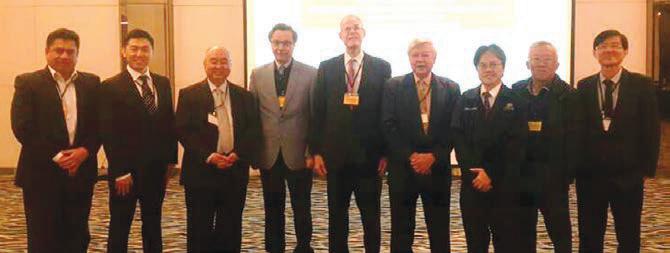
DAVCO K11 CWA (Crystalline Waterproofing Admixture)
Special cementitious mix of active chemicals that readily reacts with moisture in the concrete to form crystalline structures within the pores and capillary tracts of the concrete.
Effectively waterproofs the concrete against ground water penetration from any direction, protecting agains waterborne salts and eliminating concrete decay.
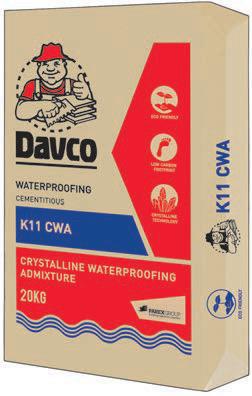
AREA OF APPLICATION
Dams
Foundations
Pre-cast Structures
Underground Structures
Sewage Treatment Plants
Tunnels and Subway Systems
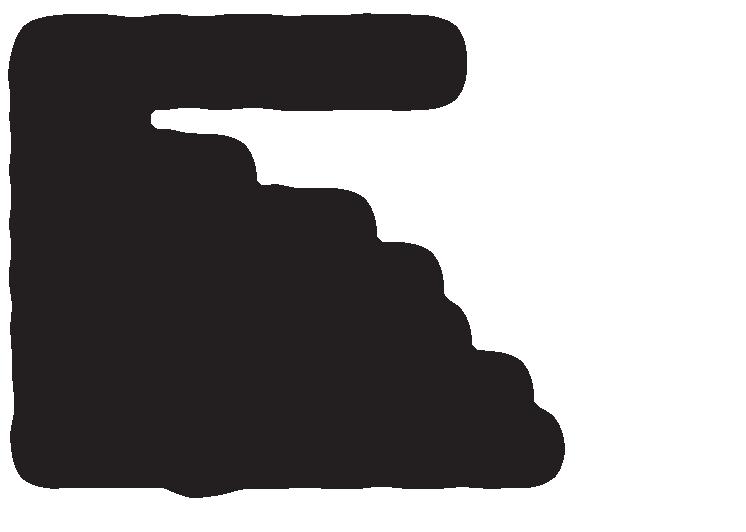
Swimming pools and reservoirs
Available in 20kg packaging
Long lasting integral waterproofing system
Self healing, crack sealing characteristics
Resists extreme hydrostatic pressure
Protects concrete from harsh conditions
Cost effective and process friendly system


Non-toxic and resistant to waterborne chemicals
No detrimental effect to the performance of the concrete when recommended conditions are met



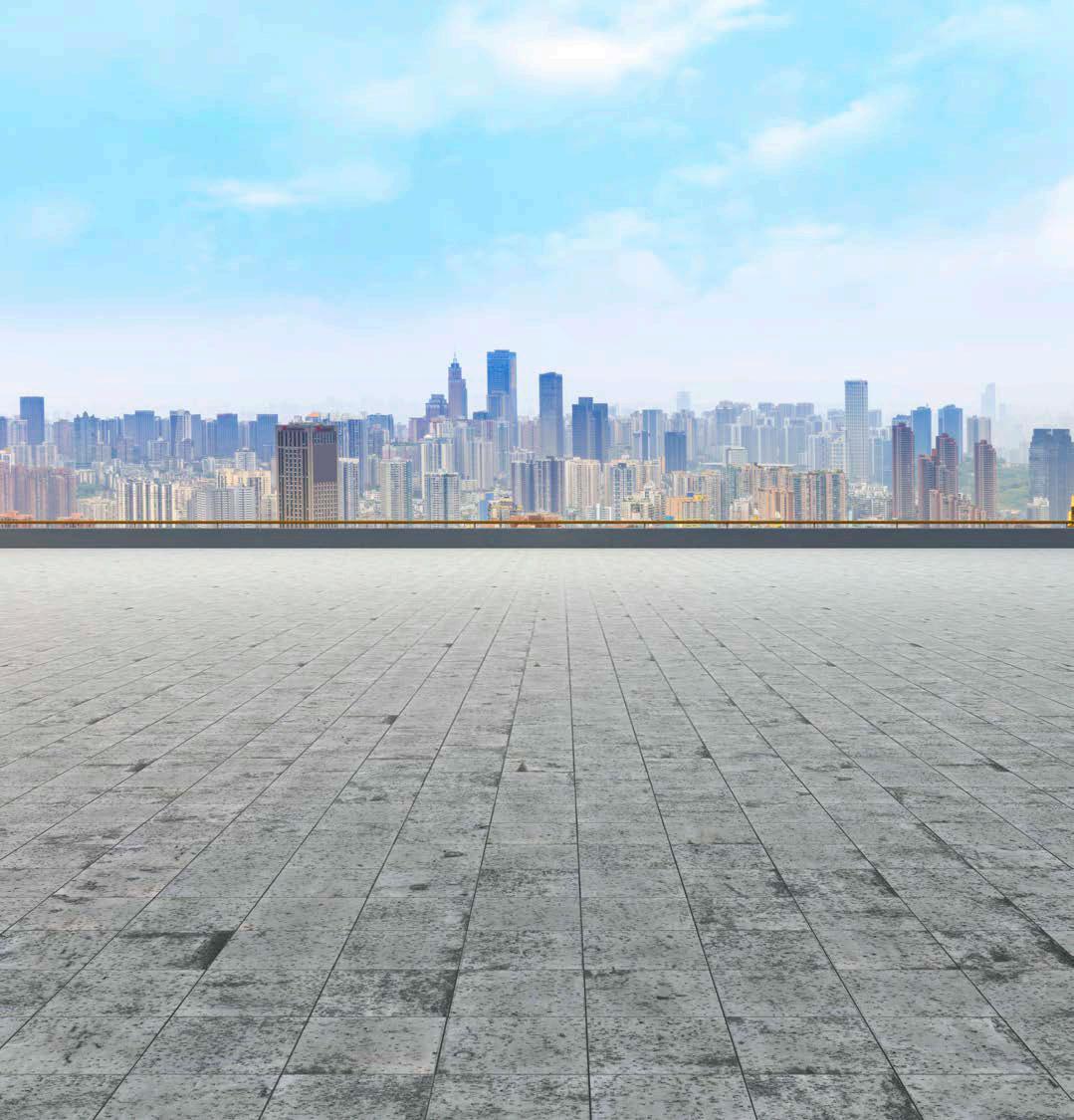
In his opening address, Professor Lam outlined the topics that the workshop would focus on:
1. Justification for the minimum design PGA value of 0.07g for the peninsula, Sarawak and Western Sabah, and 0.12g for Central and Eastern Sabah.
2. Justification for the use of a response spectrum model which is different to Eurocode 8 Type 1 and 2 response spectra.
3. Justification for the site factor model which features the use of the site natural period as a parameter for site classification and determination of the site amplification factor.
4. A review of seismic zonation maps that were originally proposed by IEM in the draft NA (2015), maps proposed by Professor Felix Tongkul during public comment period (2016), maps by a team led by UTM (2016) and maps submitted by IEM as a proposal to reach a consensus (2017).
Professor Lam presented a table which listed important references in support of the minimum design PGA value of 0.07g to allow for uncertainties in a stable (intraplate) environment.
Table 1: Presented by Prof. Lam citing support from world literature in specifying a minimum design PGA value of 0.07g (*Note: Probabilistic Seismic Hazard Assessment (PSHA), Peak Ground Acceleration (PGA)
1. Mulargia, Stark & Geller (2017)
2. Lam, Tsang, Lumantarna Wilson (2016)
3.Wilson (2015)
4.Tongkul (2016)
5.Pinto (2000)
"The insufficiency of the available seismicity data means that it is highly questionable that PSHA can provide reliable and accurate hazard analyses".
Minimum design PGA value of 0.07g is recommended for stable regions.
Minimum design PGA value of 0.08g is recommended for the stable region of Australia
Design PGA value of 0.05g - 0.1g is recommended for Peninsular Malaysia and Sarawak
Minimum design PGA value of 0.07g - 0.1g
The concept of taking the design PGA value as 2/3 of the value predicted for a return period of 2,475 years, was also explained, citing recommendations in the textbook authored by Professor Michael Fardis (Fardis, 2009), chairman of the CEN sub-committee CEN/TC250/SC8 for Eurocode 8: "Design of Structures for Earthquake Resistance" (1999-2005). Prof. Fardis led the development of its six parts into European Standards; he is the Director of Structures Laboratory, Civil Engineering Department, University of Patras, Greece. Given that local buildings will remain nonductile instead of going for capacity design principles, then global collapse in a very rare event will not be prevented
even though the Design Seismic Actions will take care of Life Safety (no local collapse).
In this case, we have to do something to the strength of the building. To take care of Collapse Prevention we must design for a 2% probability of exceedance in a design life of 50 years (i.e. designing for 2,475-year Return Period).
In explaining the rationale behind the adoption of the response spectrum model that had been written into the Draft NA, Professor Lam made references to long-distance earthquake hazards generated by high seismic sources in the Sumatran Island, and subduction sources offshore of Sumatra as well as from the Philippines in combination with local incidences of small and medium magnitude intraplate earthquakes. This unique combination of seismic hazard not commonly seen in Europe, explained the need to specify a response spectrum model which was different from the standard Eurocode Type 1 and 2 response spectrum models (Lam et al., 2009).
For the same reason, Singapore had redefined the shape of the response spectrum, neither using EC8 Type 1 nor Type 2 in its provisions Clause 3.2.2.2(2)p Note 1, to allow for long distance seismic hazards affecting the city state. Figure 2 shows the normalised spectrum shape compared to the proposed response spectrum model in the Malaysia NA and the generic EC8 for Europe and the Singapore NA.
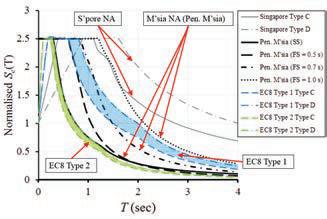
Figure 2: Normalised spectrum shape comparison of the proposed response spectrum model in the Malaysia NA (Peninsular Malaysia) with the generic EC8 for Europe and the Singapore NA. *Note: Stiff Soil (SS) and Flexible Soil (FS) with site natural period
In a later session, Dr Tsang presented the site factor model (Tsang et al., 2017) which had been written into the draft National Annex. The model incorporated the site natural period (which took into account the depth of soil sediment to bedrock) as a modelling parameter in view of its importance in controlling the potential occurrence of resonance with non-ductile construction.
Professor Pitilakis, who is also Vice President of the European Association of Earthquake Engineering (EAEE), had led the drafting of Eurocode 8 in relation to geotechnical matters. Both speakers explained that the inability of the current site factor model in EC8 to properly address deep site geology was a matter of concern. It is planned to have the next edition of Eurocode 8 to be revised to the form (Riga et al., 2016; Pitilakis et al., 2013; Pitilakis et al., 2012) which is consistent with the model proposed by IEM.

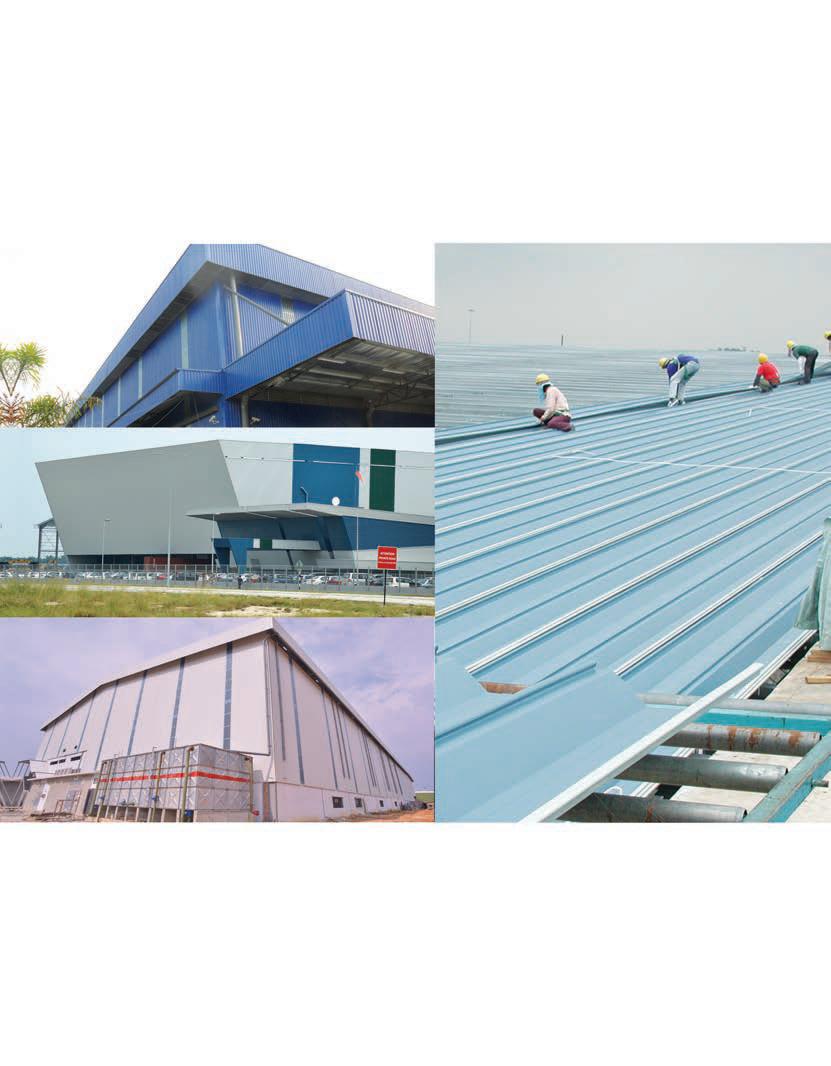





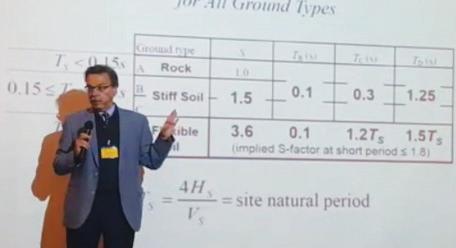

On the second day of the workshop Prof. Lam presented the seismic zonation map that had been written into the draft NA prepared by IEM, along with a map prepared independentlybyProf.Tongkul(Tongkul,2016).Prof.Azlanthen presentedtheseismichazardmapgeneratedbyconventional probabilistic seismic hazard analysis (PSHA) prepared by a team led by Universiti Teknologi Malaysia (see Figure 4).
In his presentation, Professor Geller pointed at the great uncertainties of PSHA in view of the poor track record of the methodology in terms of predicting earthquake hazards for the future (Stein et al. 2012, 2013; Mulargia et al., 2017). The credibility of the predictions is further compromised in the case of Malaysia, which has only 38 years (from 1979) of complete instrumental record (Che Abas, 2001; MOSTI, 2009) on a small land area showing 2 earthquakes exceeding magnitude 5 (12 February, 1994, & 1 May, 2004) occurring in the Peninsula and Sarawak combined. He advocated the use of common sense as opposed to believing in information generated by the computer as there is definitely insufficient information to precisely predict the location of future earthquake occurrences. An approach based on averaging global rate of occurrence of earthquakes in tectonically stable regions (Lam et al., 2016) is supported. Figure 5 shows the slide presented by Prof. Geller citing the highly uncertain nature of PSHA.
Some things to think about
• The earth is 4.6 billion years old, but we have only about 100 years of instrumental seismicity data.
• Models of site-specific seismic hazard are highly uncertain.
• We might be better off averaging globally over tectonically similar regions.
• We need to use common sense.
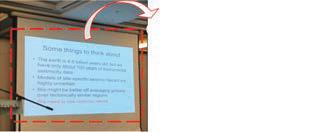
In a bid to reach a consensus while addressing the concern of modelling uncertainties, Prof. Lam presented a seismic zonation map (Figure 6) which featured a minimum design PGA value of 0.07g for the peninsula, Sarawak and west Sabah (including Kota Kinabalu), and 0.12g for central & eastern Sabah to avoid leaving out areas with a design PGA value which was too low, as featured in results of PSHA presented by the local UTM-led teams.
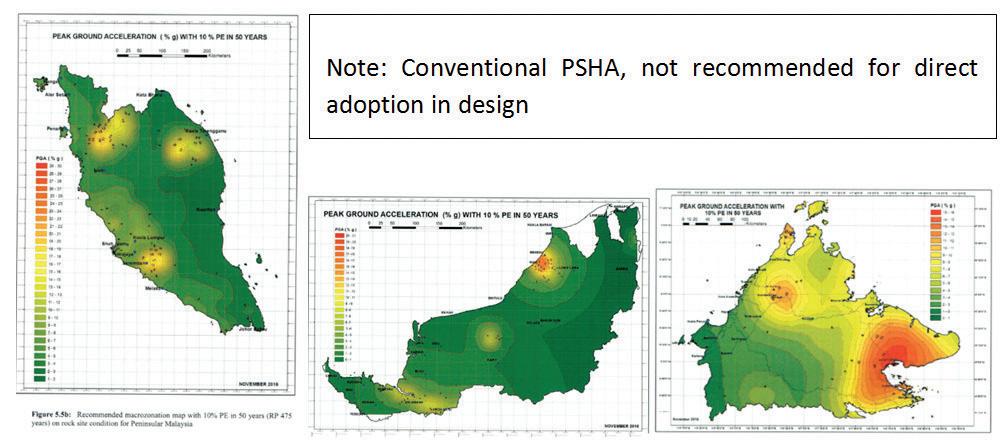
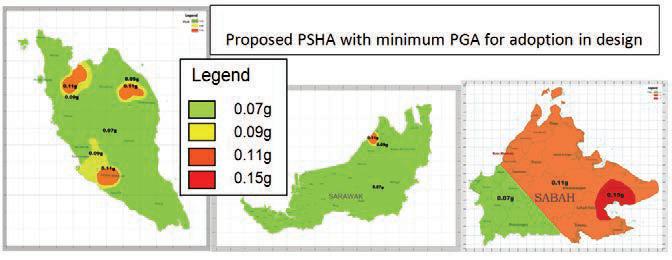
What was demonstrated at the 2-day workshop was that the draft National Annex had incorporated contemporary principles of seismic hazard assessment, taking into account the development of knowledge and practice since Eurocode 8 was first developed two decades ago. Particular attention was devoted to the importance of maintaining the following key features in the draft National Annex by IEM:
1. A minimum design PGA value of 0.07g (0.12g for central & east Sabah) irrespective of results from PSHA because of considerable modelling uncertainties.
2. Response spectrum models which deviate from EC8 Type 1 and 2 because of the need to address both local and long distance seismic hazard and.
3. A site classification and site amplification model which incorporates the site natural period as a design parameter (as opposed to only considering the upper 30 m of soil sediments).
[1] Che Abbas, M.R., 2001, “Earthquake monitoring in Malaysia”, Proceedings of the Seismic Risk Seminar Malaysia,25thSeptember, Malaysia.
[2] Eurocode 8 - Design of structures for earthquake resistance. EN 1998-1 Part 1: General rules, seismic actions and rules for buildings.
[3] Fardis, M.N., 2009, “Seismic design, assessment and retrofitting of concrete buildings: based on EN-Eurocode 8”, Springer.
[4] Lam, N.T.K., Balendra, T., Wilson, J.L., Srikanth, V., 2009, “Seismic Load Estimates of Distant Subduction Earthquakes Affecting Singapore”, Engineering Structures, 31(5): 1230-1240.
[5] Lam, N.T.K., Tsang, H.H., Lumantarna, E. & Wilson, J.L., 2016, “Minimum loading requirements for areas of low seismicity”, Earthquake and Structures, 11(4): 539-561.
[6] MOSTI, 2009, “Seismic and tsunami hazards and risks study in Malaysia”, Final report by JMM and Akademi Sains Malaysia.
[7] Mulargia, F., Stark P.B., Geller R.J., 2017, “Why is Probabilistic Seismic Hazard Analysis (PSHA) still used?”, Physics of the Earth and Planetary Interiors, 264, 63-75.
[8] Pinto, P., 2000, “Design for low/moderate seismic risk”, Proceedings of the 12th World Conference of Earthquake Engineering 12WCEE, 30th January – 4th February, Auckland, New Zealand.
[9] Pitilakis K., Riga E., Anastasiadis A., 2013, “New code site classifica1on, amplification factors and normalized response spectra based on a worldwide ground-motion database”, Bulletin of Earthquake Engineering, 11, 4, 925-966, DOI: 10.1007/ s10518-013-9440-9.
[10] Pitilakis K., Riga E., Anastasiadis A., 2012, “Design spectra and amplification factors for Eurocode 8”, Bulletin of Earthquake Engineering, 10, 5, 1377-1400, DOI: 10.1007/s10518-012-93676.
[11] Riga E., Makra K., Pitilakis K., 2016, “Aggravation factors for seismic response of sedimentary basins: A code-oriented parametric study”, Soil Dynamics and Earthquake Engineering, Special Issue of Invited Papers at the 6th International Conference on Earthquake Geotechnical Engineering (6ICEGE), Christchurch, New Zealand, 2-4 November 2015, vol. 91, pp. 116-132, DOI: 10.1016/j.soildyn.2016.09.048.
[12] Stein, S., Geller R.J., Liu M., 2012, “Why earthquake hazard map often fail and what to do about it”, Tectonophysics, 562563:1-25.
[13] Stein, S., Geller R.J., Liu, M., 2013. Reply to comment by Arthur Frankel on “Why earthquake hazard maps often fail and what to do about it”, Tectonophysics, 592, 207-209.
[14] Tongkul, F., 2016, feedbacks process within the NA public consultation period.
[15] Tsang, H.H., Lam, N.T.K., 2010, “Seismic hazard assessment in regions of low-to-moderate seismicity”, LAP Lambert Academic Publishing.
[16] Tsang, H.H., Wilson, J.L., Lam, N.T.K., Su, R.K.L., 2017, “A design spectrum model for flexible soil sites in regions of low-to-moderate seismicity”, Soil Dynamics and Earthquake Engineering 92:36-45.
[17] Wilson J.L., Lam N.T.K. & Gad E.F., 2015, “Hazard Identification and Behaviour of Reinforced Concrete Framed Buildings in Regions of Lower Seismicity”, Proceedings of the 10th Pacific Conference on Earthquake Engineering, 6th to 8th November, Sydney, Australia.

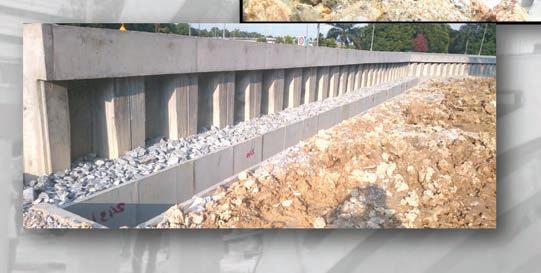
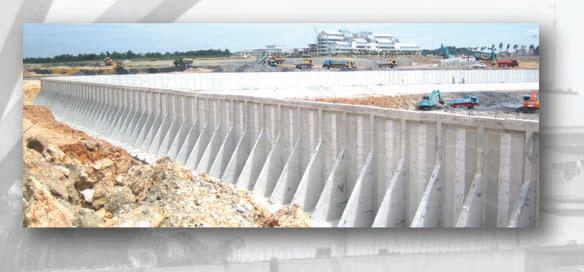

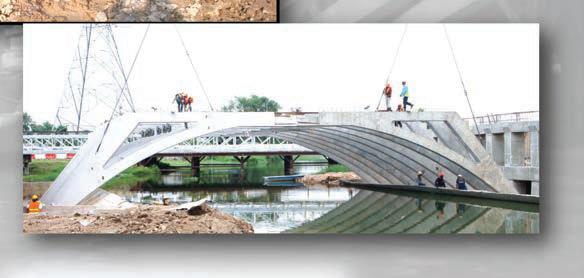
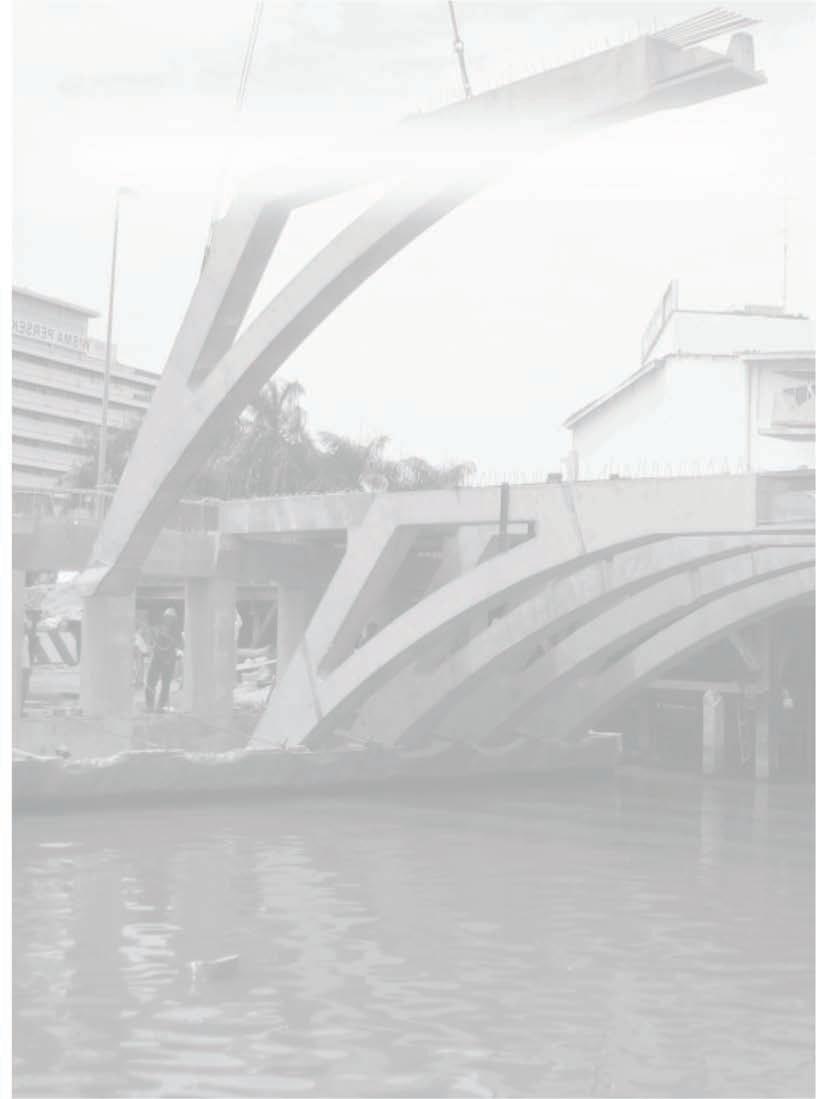
reported by

Ir. Shazlan Rahman
In Malaysia, most oil and gas reservoirs are located offshore, from 50m to over 1,000m under sea level.
Clearly, it will require cunning structural engineering to extract the hydrocarbon from these reservoirs.
For reservoirs in shallow water (less than 300m), the preferred methodisusingfixedoffshoreplatforms(Figure1).
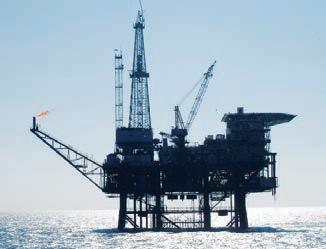
Designinganoffshorestructurerequiresalotoftechnical knowledge and skills. Unfortunately, since the drop in global oil price three years ago, the number of young structural engineers being recruited is almost zero. As a result, there will be a generation gap in structural engineers when the oil price picks up again.
Realising this, IEM’s Oil, Gas & Mining Technical Division (OGMTD) organised a one-day course on “The Design of Oil & Gas Fixed Offshore Platform”, aimed at providing exposure and basic knowledge on how to design an offshore platform.
The course was held on 12 August, 2017, at Wisma IEM. Dr Venkatesh Rajagopalan, the Regional Manager of Oglaend Industries, who has more than two decades’ experience in the offshore industry, was invited to present the course (Figure 2). The course was chaired by Ir. Shazlan Rahman, a committee member of the IEM OGMTD.
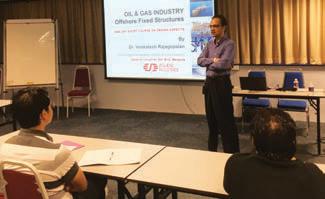
Dr Venkatesh started with an overview of the Oil & Gas industry, including how the industry started 150 years ago and how the technology had evolved throughout the years. He then went through the various types of oil and gas structures, explaining the roles of these structures in the upstream, midstream and downstream sections of the industry.
He then discussed the components of fixed offshore platforms (Figure 3, Page 34). In general, an offshore platform comprises three parts:
1. Topsides: Where the equipment, utilities, office and accommodation are located.
2. Jacket: Its main function is to support the topsides and to protect it against waves.
3. Foundation: Usually made of steel piles.
For each of the structural components, Dr Venkatesh discussed the analyses which must be performed during the in-service and pre-service conditions.
In-service condition is where the structures have been completely installed and are in operation. The main analyses that are carried out for this condition are static analysis, fatigue analysis, and dynamic analysis.
On the other hand, pre-service condition is the condition ofthe structure during installation. Some of the analyses carried out are load-out analysis, transportation analysis and lifting analysis.
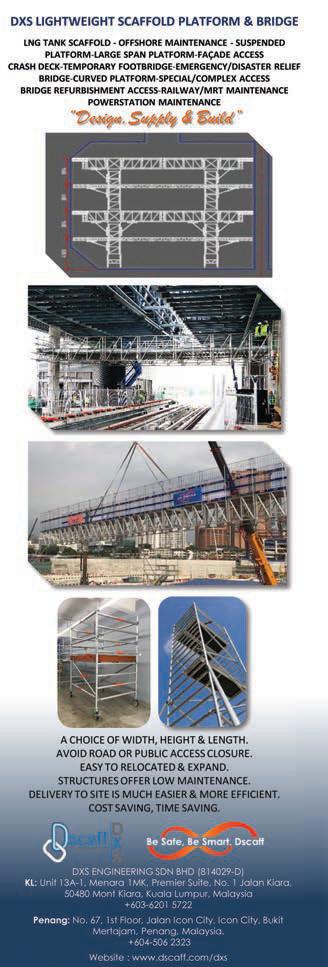

For each in-service and pre-service condition, Dr Venkatesh discussed the loading that needed to be accounted for, such as gravity load, environmental load and accidental load. He also explained the design codes thatshouldbeconsidered,suchastheAmericanPetroleum Institute (API) standards and American Institute of Steel Construction (AISC).
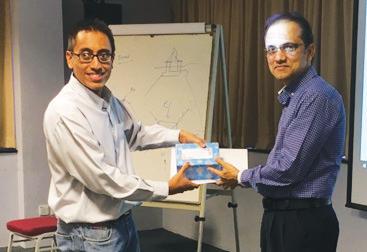
The course ended with Ir. Shazlan presenting a souvenir and a certificate to Dr Venkatesh as a token of appreciation (Figure 4). IEM OGMTD hopes the course will inspire young structural engineers to join the Oil & Gas industry.
reported by Ir. Yee Thien Seng

Professor Andrew Whittle of the Massachusetts Institute of Technology (MIT) conducted a one-day seminar on Prediction & Performance of Construction in Soft Ground at the C&S and TUS Lecture Room in Wisma IEM, Petaling Jaya, on 15 January, 2016.
Jointly organised by IEM’s Geotechnical Engineering Technical Division and the Malaysian Geotechnical Society, it was attended by 76 participants.
Prof. Whittle started by demonstrating the ability of the MIT-E3 constitutive soil model in simulating the responses of natural Boston Blue Clay (BBC) samples under a variety of laboratory test paths that better matched measured behaviours than was possible using the pioneering Modified Cam-Clay (MCC) constitutive soil model. MCC does not allow for anisotropy and it also computes excessive dilation, leading to overly high undrained shear strengths in simple shearandtriaxialextension.Hethensatisfactorilyrepeatedthe same with the updated MIT-S1, a unified material model for clay and sand. He also touched on the Mohr-Coulomb (MC) model which he regarded as “ancient”.
With the MIT-E3 and MIT-S1 models incorporated into finite element (FE) packages and executed in 2-dimensional (2-D) and 3-dimensional (3-D) modes, Prof. Whittle showed results from analyses for a number of actual underground constructions. These involved supported excavations for deep basements, cut-and-cover tunnels and bored tunnels in soft ground, comprising varied support systems as well as with complex construction sequences such as the Stacked Drift Cavern excavation for a tunnel constructed in Puerto Rico. Attributes such as ground deformations and loads in structural support elements generally matched well with those values measured by field instrumentations. The backevaluation for the 2004 Nicoll Highway tunnel collapse in Singapore was, however, less satisfactory. Professor Whittle found that the demands of conducting 3-D analyses exceeded the capabilities of FE software packages using conventional Direct or Iterative Solvers and could, instead, only be accomplished with the use of Parallel FE computation with Scalable Algorithms on a Scalable Computing infrastructure.
Then Prof. Whittle dealt with the issue of evaluating undrained stability of embankments on soft ground. He demonstrated the superiority of the Numerical Limit Analysis (NLA) over the legacy Limit Equilibrium Method (LEM) as well as the FE method which had difficulties coping with shearing/deformations concentrated along discrete planes in the ground. The NLA is a hybridised limit analysis relying on effective stresses from the FE method to determine shear strength reductions required to “induce” the collapse of earth structures and is suited to rigid-perfectly plastic problems.
He emphasised the importance of first establishing the correct stratigraphy in the ground for satisfactory analyses to be carried out, by showing the New Orleans Hurricane Katrina levee failure case where 2 authoritative organisations produced starkly different stratigraphies from the same set of site investigations data (see diagram).
On the subject of settlement computations for embankments constructed over soft soils, Prof Whittle demonstrated the importance of employing soil models that reproduce the lateral spreading behaviour in the underlying soft soils during consolidation to ensure reasonable computed settlements. The matches between actual field measurements over time and computed ones were satisfactory without the need to include creep in the computations even when the field data on settlements and pore water pressures suggest the existence of creep during consolidation. He pointed out that there were serious limitations with most viscoplastic soil models in dealing with soil creep behaviour and disclosed the availability of a new generalised Elasto-Viscoplastic (EVP) model – the MIT-SRmodelwiththeabilitytorepresent all rate dependent clay behaviours.
Finally with availability of capable computational tools to the industry, Prof Whittle expounded the benefits of conducting real-time review of performance data collected and the updating and calibration of analysis models in the course of construction of Temporary Earth Retaining Structures (TERS) to reduce the risks of a catastrophic failure.
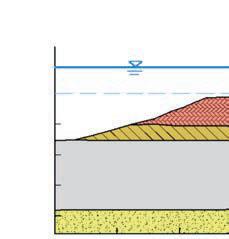
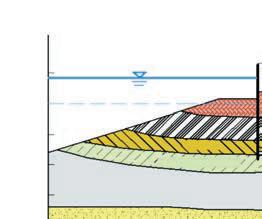
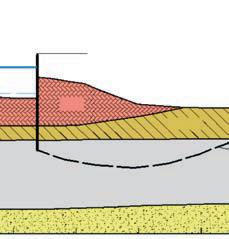
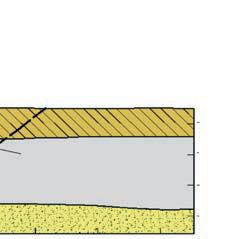
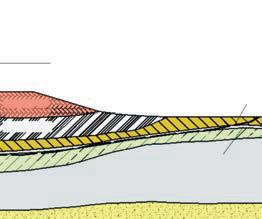

Wireless networks allow a dense array of sensors to be deployed to monitor the whole structure simultaneously. This allows captured measurements of structural loads, deformations and pore water pressures to be accessed online to permit real-time reviews of the state of the engineering system. Imaging devices and sensors mounted on remotely controlled multirotor copter drones would facilitate inspection and mapping to areas of the construction that are of interest to the engineer, with little attendant risks to personnel.
Title: IEM Form of Contract for Civil Engineering Works & IEM Form of Contract for Mechanical and Electrical Engineering Works
25 Nov 2017
Organised by: Sub Committee on Engineering Contracts of Standing Committee on Professional Practice
Time : 9.00 a.m. - 5.30 p.m.
CPD/PDP : 7
Title: Talk on “Healthcare Engineering – Optimizing The Healthcare Delivery Through Interdisciplinary Technology Integration”
29 Nov 2017
Organised by: Engineering Education Technical Division
Time : 5.30 p.m. - 7.30 p.m.
CPD/PDP : 2
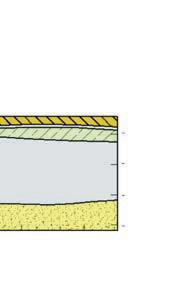
The seminar was concluded at 4.30 p.m.
Title: IEM Form of Contract for Civil Engineering Works & IEM Form of Contract for Mechanical and Electrical Engineering Works 5 Dec 2017
Organised by: Sub Committee on Engineering Contracts of Standing Committee on Professional Practice
Time : 9.00 a.m. - 5.30 p.m.
CPD/PDP : 7
Title: ICTSIG Digital Class (December 2017)Introduction to PYTHON Programming (Part 1) 9 Dec 2017
Organised by: Special Interest Group - Information and Communications Technology (ICT)
Time : 11.01 a.m. - 1.00 p.m.
CPD/PDP : 2
Kindly note that the scheduled events below are subject to change. Please visit the IEM website at www.myiem.org. my for more information on the upcoming events.
reported by

The 9th AGM of eEtd, attended by 30 members, was held at Penang Skills Development Centre (PSDC) in Penang on the 1 July, 2017. Its Chairman, Ir. Bhuvendhraa Rudrusamy, gave a welcome speech and thanked all the members who were present, especially those who had come from Miri and Kuala Lumpur.
He also expressed gratitude to committee members for their support and dedication by organising various activities which benefitted IEM members and cultivated engineering innovation in undergraduate students.
Ir. Bhuvendhraa and Ir. Assoc. Prof. Dr Khor Jeen Ghee were re-elected eETD Chairman and Deputy Chairman respectively. The new line-up of committee members (2017/2018) is as follows:
ChairmanIr. Bhuvendhraa Rudrusamy
Deputy ChairmanIr. Assoc. Prof. Dr Khor Jeen Ghee
Honorary secretary cum treasurer Ir. Dr Lee Choo Yong
Ir. Dr Wong Yew Hoong
Dr Yeap Gik Hong
Dr Leow Cheah Wei
Committee members
Dr Huzein Fahmi Hawari
Ir. Dr Mui Kai Yin
Mr. Sivarama Rajah
Mr. Tiong Teck Chai
Mr. Lau Heng Kar
AdvisorIr. Bernard Lim Kee Weng
It was announced that eETD recorded an increase in membership from 585 in the previous year to 683. Membership breakdown, as of 30 June, 2017, is as follows:
The eETD held 11 committee meetings from August 2016 to June 2017 and organised 6 technical talks by scholars or engineers worldwide, held mostly at Universiti Sains Malaysia (USM) for the convenience of engineers working in the Bayan Lepas industrial zone. Technical talk details are shown in the table below:
Prof. Dato’ Dr Chuah Hean Teik UTAR
Thermal Management with On-Chip Digital Temperature Sensors Prof. Dr Ng Wai Tung University of Toronto, Canada
Dr Sim Lim Chong Robert Bosch
to Theory of Inventive Problem Solving (TRIZ) and E-Waste Dr Yeap Gik Hong & Ir. Bhuvendhraa Rudrusamy KDU Penang & Altramax Technologies Sdn Bhd
Kee Chin Min Knowles Electronics Malaysia Sdn. Bhd.
In continuance of the 2015/2016 session, The University of Nottingham, Semenyih Campus, proposed to promote and recognise extra-curriculum and activities for students. The merits will be captured as Student-CPD to encourage students to participate in personal development and lifelong learning in areas critical to their future professional career in real world career pursuits. IEM eETD will sponsor a 1-year student membership for the most active student by the end of students’ year calendar. This initiative was led by Ir. Assoc. Prof. Dr Khor Jeen Ghee.
IEM eETD also organised 3 technical visits for 2016/2017: SilTerra Kulim on 24 August, 2016, Knowles Electronics Penangon16February,2017,andHondaBatuKawanon24 May, 2017. These visits were moderated by Dr Huzein Fahmi Hawari, Dr Leow Cheah Wei, Ir. Dr Lee Choo Yong and Dr Muhammad Nasiruddin bin Mayhuddin, respectively.
Participants benefitted in terms of attaining knowledge shared by the industry on the latest technology related to electronics and had a chance to visit the manufacturing floor.
IEM eETD also co-organised IEEE-IEM eETD Mini Colloquium with IEEE Penang Joint Chapter (IEEE Penang) on 24 September, 2016, in EGC foyer, Penang Skills Development Center (PSDC), Bayan Lepas, Penang. IEEE Penang is the IEEE chapter based in Penang, affiliated to technical societies of Electron Devices (ED), Microwave Theory and Techniques (MTT) and Solid-States Circuits (SSC). The mini colloquium comprised talks delivered by IEEE lecturers Dr Hideto Hidaka, Dr Makoto Ikeda and invited speaker Dr Alastair Trigg. The 30 participants comprised IEEE and IEM members as well as engineers from electronics companies in Penang. The first two sessions were chaired by IEEE Penang chairman Dr Wong Peng Wen and the third session by eETD chairman Ir. Bhuvendhraa Rudrusamy.
The eETD also continued to sponsor the Best Paper Award, worth RM1,500, in Innovate Malaysia Design Conference (IMDC). This multi-discipline engineering design conference and competition was supported by technological companies. Most of the eETD committee members were involved in reviewing the selected technical paper for this award which was open to all undergraduate
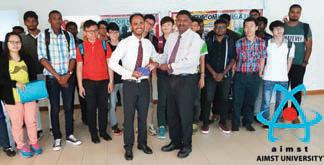
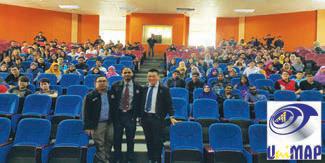
Malaysian students in engineering and computer science to promote the culture of innovation.
The grand finale was held in Equatorial Hotel Penang on 8-9 August, 2016. A total of 264 teams from various universities took part in the IMDC. These included USM, UniMAP, INTI, UTAR, UTP, IIUM, UiTM, UPM, UM, MMU, UKM, UniKL, USIM, Monash University Malaysia, Nottingham University Malaysia, UPNM, UMP, UTHM, UTM, Southampton University Malaysia, UNIMAS, Swinburne University Malaysia and Curtin University Malaysia.
The event also involved 9 industry tracks, namely Altera (now part of Intel), Intel, Keysight, National Instruments, Siltera/CEDEC, MathWorks, Microsoft, Motorola Solutions, and ViTrox. Eventually, 45 finalist teams submitted technical papers for IEM Best Paper Award and DreamCatcher Best Demo Video Award, which were sponsored by IEM and Dreamcatcher Consulting Sdn. Bhd., respectively.
To inspire the university students and young engineers to pursue engineering as career choice, IEM eETD organised 2 InspireMe Talks: “Engineering Career Development as Techno-Entrepreneur, Academic and Individual Contributor” on 8 December, 2016, and “How to Thrive as an Engineer” on 15 December, 2016.
For the first talk, the speakers were Mr. Ng Sang Beng (CEO, Aemulus Corporation Sdn. Bhd.), Prof. Dr Raymond Ooi (Professor, University of Malaya) and Mr. Ooi Eng Hun (Principal Engineer, Intel Corporation). For the second talk, the speaker was Dr Hari Narayanan (Motorola Solutions Sdn. Bhd.)
IEM eETD continued to work with the various institutions of higher learning on its student membership drive and extended membership drive to professionals of various companies during the technical talks and technical visits.
eETD will continue to organise technical talks and technical visits, hold membership drives, update the website and Facebook and hold seminars and workshops for university students, university-level competition (ENGINOVATE), national-level competition (IMDC), eETD networking programming, and many more.
eETD would also like to thank IEM Penang Branch committee and secretariat for the support.
Our heartiest congratulations to:
* Ir. Dr Leong Wai Yie on being conferred the following awards:
1. The ASEAN Meritorious Science Award 2017 from The ASEAN Committee on Science and Technology (COST).
2. The Top Research Scientist Malaysia 2017 from Academy of Sciences Malaysia (ASM).
*Ir. Gopal Narian Kutty on being appointed as Senior Director, Cawangan Kejuruteraan Mekanikal (CKM) Ibu Pejabat JKR on 16 October 2017.
Congratulations to following members on their respective conferments by Tuan Yang Terutama Yang di-Pertua Negeri
Sabah, Tun Datuk Seri Panglima (Dr.)
Haji Juhar Bin Datuk Haji Mahiruddin (S.M.N, S.P.D.K, P.G.D.K, P.J.N, A.S.D.K, J.P.) on his Excellency’s 64th Birthday on 7th October 2017.
* Datuk Ir. Hj. Yahiya Bin Awang Kahar (Director of Jabatan Pengairan dan Saliran, Sabah cum Branch Chairman of IEM Sabah) and Datuk Ir. Willis Ansoi (Director of Jabatan Air Negeri Sabah) on being conferred the state award of Panglima Gemilang Darjah Kinabalu (P.G.D.K.) which carries the title “DATUK”
*Ir. Lau Kin Swa and Mr. Dexter Lim Ming Guan on being awarded Ahli Setia Darjah Kinabalu (A.S.D.K.)
Ir. Paul Yap Kok Wai
(Immediate Past Chairman of Acem Sabah cum Executive Committee Member of Sea & IEM Sabah) on being awarded Ahli Darjah Kinabalu (A.D.K.)
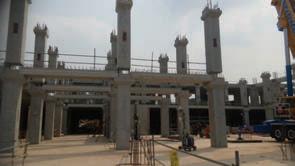
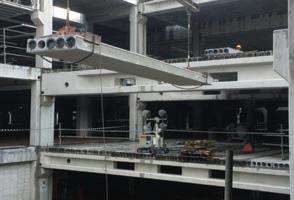
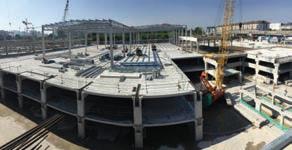
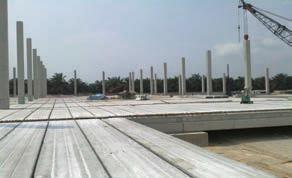
EASTERN PRETECH (MALAYSIA) SDN. BHD . 28, Jalan 7/108C,Taman Sungai Besi, 57100 Kuala Lumpur.
Tel: +603-7980 2728 Fax: +603-7980 5662 www.epmsb.com.my

JURUTERA has an estimated readership of 168,000 professionals. Our esteemed readership consists of certified engineers, decision making corporate leaders, CEOs, government officials, project directors, entrepreneurs, project consultants, engineering consulting firms and companies involved with engineering products and services.
Our business partners can be assured that their products and services will be given the circulation and exposure it deserves, thus maintaining a sustained advertising presence to our core readers of decision-making engineers and technical experts. Our website offers an even wider market reach, with added international presence, aided by our international affiliation with official engineering bodies all over the world. Our online and offline advertising features such as banner advertising, article sponsorship and direct e-mail announcements have proven to be successful marketing strategies that will set the businesses of our partners apart from their competition.
Special Position: +15%
Overseas Advertiser: +25% (Full Advance Payment Required) All prices shown above exclude Computer to Plate (CTP) charges
For advertising enquiries, please contact:
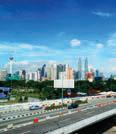




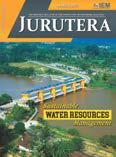



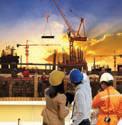
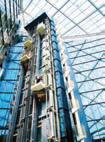




In Spanish, El Dorado means “The Golden One”, a title used originally to describe a chief of the Muisca natives who lived in the Andes Mountain in Columbia, South America. Over time, the name changed from a man’s description to that of a lost city of gold and today, it’s used to describe any place where wealth can be rapidly acquired.
In Malaysia, we too have our own El Dorado, an underground mine in Sungai Lembing, Pahang. The mining town, located approximately 40km from Kuantan, was rich in gold, tin and copper and small scale tin mining started as early as 15th century.
In 1888, a British company, Pahang Corporation, was awarded mining concession land of 2000 sq. miles to carry out underground mining. This marked the beginning of underground tin mining in the country. Mining activities intensified when Pahang Consolidated Company Limited (PCCL) took over from Pahang Corporation in 1906.
Sungai Lembing grew rapidly and became a prosperous town with a population of over 10,000 during its glory years. However, in 1985, the world price for tin collapsed, forcing PCCL to cease operations and transforming Sungai Lembing into a sleepy hollow.
Nevertheless, it has retained its unique charms. Wooden houses built for miners and rows of pre-war double storey shops still stand though uninhabited. The main road is lined with century-old trees and nearby Panorama Hill is a popular with hikers who come for fresh air, the sunrise and a spectacular view of the sea.
The biggest attraction though, is its subterranean network of underground
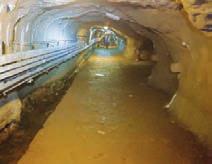
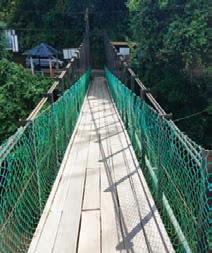
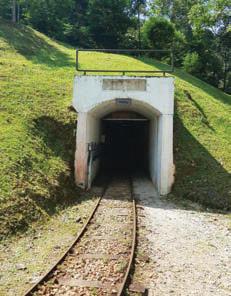
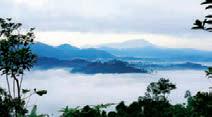
mines which, at over 322km long and 700m deep, is the longest and deepest in the world. Even after mining went on for 100 years (1888-1985), Sungai Lembing still has an abundance reserve of tin. It really deserves the title, El Dorado of the East.
On 3 June, my family and I visited mine. We took a train to the stop point and then walked into the underground tunnel. Electric lights provided visibility and the air was chilly. The walls were fortified with concrete to replace the original wooden 20X20cm pillars. The ground was wet and water flowed in through a side drain. We were in the 1st storey mine shaft, about 100 feet
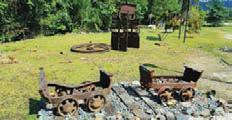
deep. The tunnels were dug in vertical storeys of approximately 30m apart. Only the 1st storey was accessible as the rest were flooded after the mine closed. Water pumps kept the 1st storey accessible to visitors and we were only allowed to explore 600m of the tunnel. We exited via another opening.
Enroute to the mine, we stopped at Jambatan Gantung Kolong Pahat, a hanging bridge across Sungai Kenau which connected to the miners living quarters. It was built around 1888, using cables from the mine shaft lifter and woods from the nearby forest. It was reconditioned in 2014.
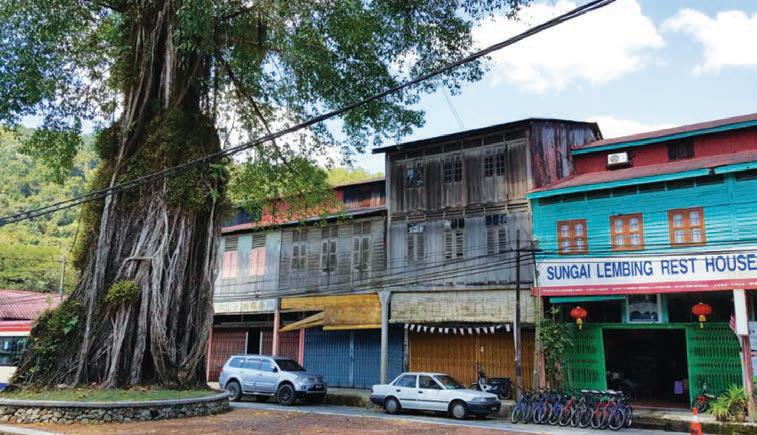
Yes! I would like to be a subscriber of The Institution of Engineers, Malaysia’s publications
Name: _________________________________________________________________________________________________________
Mailing Address:_________________________________________________________________________________________________
Country: ________________________
Company/Institution:______________________________________________________________________________________________
Title: ____________________________________________________________________________________________________
Telephone No: _________________________ Fax: _________________________ Email: _________________________________
Please commence my subscription from: _________________________(month/year) Signature: _______________________________
To start your subscription of IEM’s publications, complete this form and mail it back to the address below. For faster processing, fax it to: +603 7493 1047. Thank you.
What is your primary job title?
Corporate Management (including chairman, president, proprietor, partner, director, vice president, general manager, division manager, import/exportmanager,othercorporatetitle)
Management (including project/contract/equipment/service/transport districtmanager,clerkofworks,othertechnicaloroperatingmanager)
Engineering/Design (including chief engineer, chief designer, civil/ highway/mechanical/planningengineer,otherengineering/designtitle)
Buying/Purchasing (including chief buyer, buyer, purchasing officer, otherbuying/purchasingtitle)
Titles allied to the field (architect, consultant, surveyor, research and development professor, lecturer, supervisor, superintendent, inspector orotheralliedtitle)
Others(pleasespecify)____________________________
What type of organisation do you work in? (Tick one box only)
Contractor
Sub-contractorspecialist
Designandbuildcontractor
Consultingengineering/architectural/quantitysurveyingpractice
Mining/quarrying/aggregateproductioncompany
Petroleumproducer
International/nationalauthorities
National/regional/localgovernment
Publicutilities(electricity,gas,water,deckandharbour,other)
Manufacturer
Distributor/importer/agent
Constructiondepartmentoflargeindustrial/Commercialconcern
Association/educationestablishment/research
Constructionequipmenthire/rentalcompany
Project/constructionmanagementconsultancy
Others(pleasespecify)_______________________________
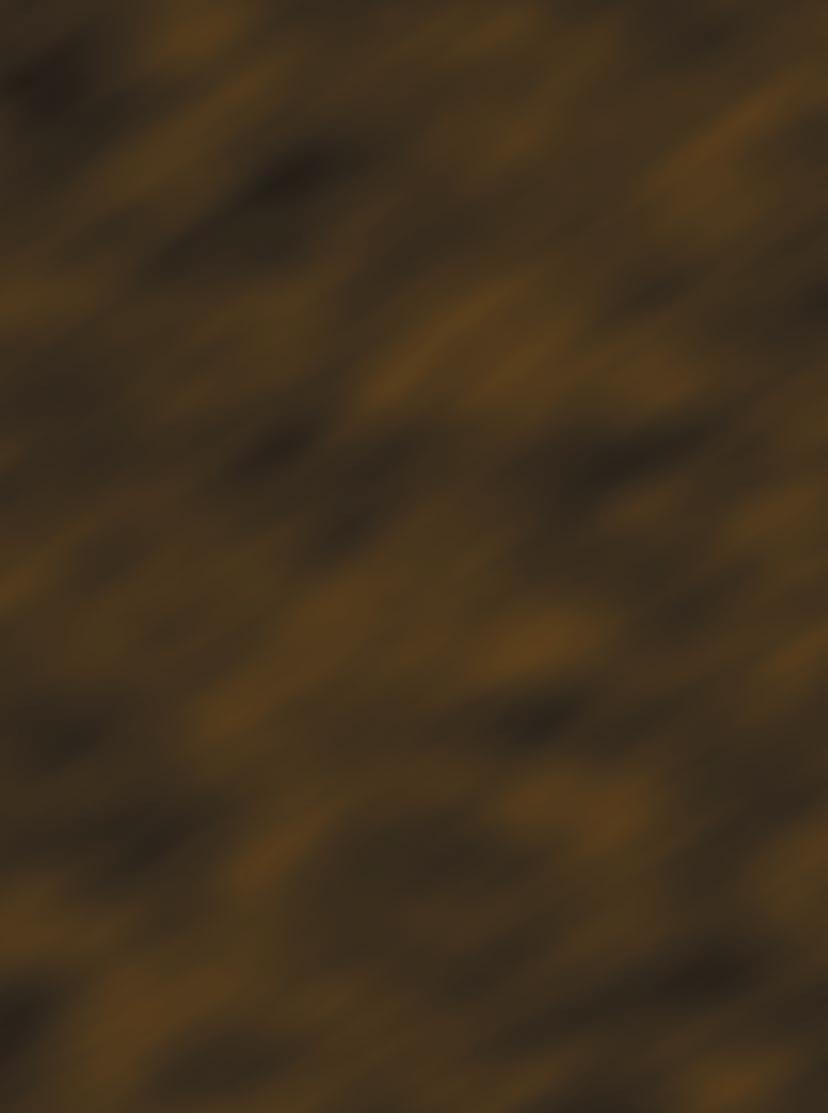
What are the main activities of your organisation? (Tick all that apply)
Constructionsof: Manufacturerof:
Roads/bridges Constructionequipment
Dams/reservoirs/irrigation Cement
Harbours/offshorestructures Otherconstructionmaterials
Foundations/tunnels Distribution
Pipelines/refineries Construction equipment
Structures/steelwork Constructionmaterials
Building(commercial,industrial) Hire/rentalofconstructionequipment
Housing Design
Constructionmanagement Earth-moving/opencastmining
Deepmining Aggregateproduction
Others(Pleasespecify)_________________________________________
Rate (Please tick)
RM381.60 -12issuesofJURUTERA
RM89.04 -2issuesIEMJournal(Half-yearly)
*Pleasenotethattheabovepricesareinclusiveof6%GST
Terms and Conditions:
1) Thesubscriptionistobeprepaid.
2) Pleasemakechequepayableto Dimension Publishing Sdn. Bhd.
3) Subscriptionsarenotrefundable.
4) Magazine/swillbesenttothemailingaddressgiven.
5) Studentsareentitledfora20%discountfromtheabovesubscriptionrate.
6) Students must submit a photocopy of the student identification card together withthepayment.
7) Theaboverateisinclusiveofdeliverychargesandapplicablein Malaysiaonly.
8) Additionaldeliverychargeswillapplytooverseassubscribers.
For subscription enquiries, please contact +603-7493 1049 or email to info@dimensionpublishing.com
Kepada Semua Ahli,
Tarikh: 11 Oktober 2017
Berikut adalah senarai calon yang layak untuk menduduki Temuduga Profesional bagi tahun 2017.
Mengikut Undang-Undang Kecil IEM, Seksyen 3.8, nama-nama seperti tersenarai berikut diterbitkan sebagai calon-calon yang layak untuk menjadi Ahli Institusi, dengan syarat bahawa mereka lulus Temuduga Profesional tahun 2017.
Sekiranya terdapat Ahli Korporat yang mempunyai bantahan terhadap mana-mana calon yang didapati tidak sesuai untuk menduduki Temuduga Profesional, surat bantahan boleh dikemukakan kepada Setiausaha Kehormat, IEM. Surat bantahan hendaklah dikemukakan sebulan dari tarikh penerbitan dikeluarkan.
Ir. Yap Soon Hoe Setiausaha Kehormat, IEM,
PERMOHONAN BARU NamaKelayakan
KEJURUTERAAN AWAM
CHIN VUI TAT BE HONS (UPM) (CIVIL, 2008)
NURZALISA BINTI ABD RAHIMBE HONS (UTM) (CIVIL, 2001)
ROZELAWTI BINTI ISHAKBE HONS (UTM) (CIVIL, 2008)
MOHD FAUZAN BIN MANSORBE HONS (UPM) (CIVIL, 2006)
MOHAMAD SALMAN BIN MOHAMAD BUSTAMAM BE HONS (UTM) (CIVIL, 2000)
SULAIMAN BIN ISMAILBE HONS (UTM) (CIVIL, 1995)
SHARIFAH MAZNAH BINTI SYED
AHMAD ZAHRI BE HONS (UTM) (CIVIL, 2002)
MOHD NAJIB BIN AHMADBE HONS (UTM) (CIVIL, 2003)
GOH KENG LEE COLINBE HONS (HERTFORDSHIRE) (CIVIL, 1997)
MUNIRAH BINTI HASANBE HONS (UiTM) (CIVIL, 2002)
LIEW KEN HINBE HONS (MANCHESTER) (CIVIL, 1999)
MEGAT AHMAD FAUZI BIN MEGAT
SHOIB BE HONS (UiTM) (CIVIL, 2002)
YAP YONG CHEP BE HONS (SINGAPORE (CIVIL, 1975)
TENGKU NORMARDZIAH BT TUAN MOOD BE HONS (USM) (CIVIL, 1999)
RAHMAH BINTI ABDUL HALIMBE HONS (UM) (CIVIL, 2006)
HABIBAH BINTI MD. SHARIF ADV. DIPLOMA (UiTM) (CIVIL, 1985) MSc (COVENTRY) (ENGINEERINS BUSINESS SYSTEMS, 1996)
KEJURUTERAAN ALAM SEKITAR
LAW ZE SEANBE HONS (MALAYA) (ENVIRONMENTAL, 2011)
KEJURUTERAAN KIMIA
MOHAMAD NASRI BIN MOHAMAD
YUSOF BE HONS (CURTIN) (CHEMICAL, 2010)
KEJURUTERAAN PERKHIDMATAN BANGUNAN
LUKMAN BIN MUHAMADBE HONS (MALAYA) (MECHANICAL, 1994)
KEJURUTERAAN SUMBER AIR
ASNOR MUIZAN BIN ISHAK BE HONS (UTM) (CIVIL, 1999) MSc (UPM) (WATER RESOURCES, 2006)
KEJURUTERAAN ELEKTRIKAL
HASNOOR FAIZMAH BINTI HASIMBE HONS (UNITEN) (ELECTRICAL & ELECTRONICS, 2009)
ARIFFIN BIN AZMI BE HONS (UTM) (ELECTRICAL, 2009)
SUJINTHARAN A/L SANKARAN BE HONS (UNITEN) (ELECTRICAL & ELECTRONIC, 2010)
KHAIZURAN BIN ABDULLAH BE HONS (OHIO) (ELECTRICAL, 1997 ME (UTM) (ELECTRICAL, 2003)
PHEROSHEN SINGH A/L MOHAN
SINGH BE HONS (UNITEN) (ELECTRICAL POWER, 2013)
ABDUL HALIM BIN ZAHARIBE HONS (MALAYA) (ELECTRICAL, 2012)
NOOR AZITA BINTI AWALUDIN BE HONS (UNITEN) (ELECTRICAL POWER, 2002) MSc (UPM) (ELECTRICAL POWER, 2006)
MOHD NOR BIN APIN BE HONC (UTM) (ELECTRICAL-MECHATRONICS, 2006) CONVERSION (UNITEN) (ELECTRICAL, 2010)
MUHAMAD ROSLAN BIN AHMAD
BAKARIM BE HONS (UiTM) (ELECTRICAL, 2008)
AHMAD FARID BIN HASSINBE HONS (UTM) (ELECTRICAL, 2009)
MOHD HAZMEL BIN HANAFIBE HONS (UNITEN) (ELECTRICAL & ELECTRONIC, 2006)
RIEZAN BOHARI BE HONS (UTeM) (CONTROL, INSTRUMENTATION & AUTOMATION, 2007)
MOHD SHAMSUL BIN IBRAHIM BE HONS (UiTM) (ELECTRICAL, 2004) MSc (TEESSIDE) (ENGINEERING MANAGEMENT, 2013)
AMALENDRRAN A/L
PARAMANATHAN BE HONS (UNITEN) (ELECTRICAL POWER, 2010)
SITI HASSANAH BINTI HASSANBE HONS (UiTM) (ELECTRICAL, 2008)
KEJURUTERAAN INSTRUMENTATION DAN KAWALAN
SHAH RIZAL BIN DAHLANBSc(COLUMBIA) (ELECTRICAL, 1997)
KEJURUTERAAN MEKANIKAL
AIZAT SYAFIQ BIN ZEINUDDINBE HONS (UKM) (MECHANICAL, 2011)
MOHD SHAFEEQ BIN MOHD TAHIRBE HONS (UiTM) (MECHANICAL, 2010)
RASYIDA BINTI OMARBE HONS (MECHANICAL, 2011)
WONG HA YOU BE HONS (SWINBURNE) (MECHANICAL, 2012)
PERPINDAHAN AHLI
No. Ahli NamaKelayakan
KEJURUTERAAN AWAM
45340WOO PEGGYBE HONS (LEEDS) (CIVIL & STRUCTURAL, 2003)
43716SHIRLEY HENG SHIN AIBE HONS (UKM) (CIVIL & ENVIRONMENTAL, 2006)
39062DEREK CHUA MING XUANBE HONS (CURTIN) (CIVIL & CONSTRUCTION, 2008)
91016 CHIAM TEE YONG BE HONS (UTAR) (CIVIL, 2011)
37896 TUAN AFENDEY BIN TUAN MOOD BE HONS (UMP) (CIVIL, 2008)
72178MUHAMMAD HANIF BIN HANAFIAH BE HONS (UTM) (CIVIL, 2013)
36306MOHD HAIZAM BIN MD NOH @ NOOR BE HOONS (UTHM) (CIVIL, 2005)
58014GOH WAI KHUENBE HONS (SWINBURNE) (CIVIL, 2008)
25287MOHD IRWAN BIN JUKI BE HONS (UTM) (CIVIL, 1998) ME (UTM) (STRUCTURE, 2001)
43741NURULAINAA BINTI SELAMATBE HONS (CIVIL, 2008)
26867 RIDUAN BIN YUNUS BE HONS (UTM) (CIVIL, 2001)
23886 PALAISAMY A/L THANJAGOUNDAN BE HONS (UTM) (CONSTRUCTION MANAGEMENT, 2002)
14770ALLAN GUY GOONTINGBE HONS (MONASH) (CIVIL, 1991)
23496 LAI YET RU BE HONS (UTM) (CIVIL, 2002)
40531NURSYUHADAH BINTI MOHD ISABE HONS (UTM) (CIVIL, 2011)
28797MOHD HADZMIR BIN YUSOFFBE HONS (UTM) (CIVIL, 1991)
59909 DARRELL CHOONG THIAM CHYE BE HONS (UPM) (CIVIL, 2012)
62058TAN LAI WAIBE HONS (UTM) (CIVIL, 2001) ME (UTM) (CIVILHYDRAUL & HYDROLOGY, 2003)
KEJURUTERAAN ELEKTRIKAL
81277SHARULANNUAR BIN SHARANI BE HONS (UTM) (ELECTRICAL, 2014)
92323MOHD KHAIRUL IZWAN BIN OTHMAN BE HONS (UTM) (ELECTRICAL, 2008)
88842HASAN SYUKRI BIN ABDUL HAMID BE HONS (UniMAP) (ELECTRICAL SYSTEMS, 2012)
61125 MOHD AZRI AFIFI BIN MOHAMAD SANUSI BE HONS (UTM) (ELETCRICAL, 2009)
43784FENDY HASMARDY BINTI MOHAMAD BE HONS (UNIMAS) (EKECTRICAL & ELECTRONIC, 2008)
90362 RUBAKANTHAN A/L SARAVVANAN BE HONS (MULTIMEDIA) (ELECTRICAL, 2009)
34059MOHD FADHIL BIN MUSABE HONS (UiTM) (ELECTRICAL, 2006)
23926ZULFAZLI BIN MOHD ZINBE HONS (UTM) (ELECTRICAL, 2011)
60653SHARMINIE BINTI ZAINULABIDINBE HONS (UM) (ELECTRICAL, 2005)
72633HISHAMUDDIN BIN BUYONGBE HONS (UiTM) (ELECTRICAL, 2013)
44353 AZRI BIN AB AZIZ BE HONS (UTeM) (INDUSTRY POWER, 2011)
50142FAIRUZ NIZAM BIN AZMIBE HONS (UNITEN) (ELECTRICAL & ELECTRONIC, 2008)
47608 LEE MING YUEN BE HONS (UNITEN) (ELECTRICAL POWER, 2010)
26223FAIZAL ZAMANI BIN DOLLAHBE HONS (UTM) (ELECTRICAL, 2007)
50183 MOHD AZELY BIN ABD KADIR BE HONS (UTM) (ELECTRICAL, 2009)
88839MOHD MAHZUZ BIN MAMATBE HONS (UKM) (ELECTRICAL & ELECTRONIC, 2012)
49712NURSYUHADA BINTI RADZALIBE HONS (UTHM) (ELECTRICAL, 2012)
59914MOHD HAFIZ FIKRI BIN MAT DESA @ ISMAIL BE HONS (UKM) (ELECTRICAL & ELECTRONIC, 2007)
22648ISKANDAR HASZUAN BIN ISMAILBE HONS (UTM) (ELECTRICAL, 1998)
76040MOHD SAZLI BIN SAAD BE HONS (UiTM) (ELECTRICAL, 2002) ME (UTM) (ELECTRICAL-MECHATRONIC & AUTOMATIC CONTROL, 2007)
KEJURUTERAAN ELEKTRONIK
26750 AMARUL BIN TALIP BE HONS (UTHM) (ELECTRICAL, 2005)
28065NICHOLAS PHILIPBE HONS (UTM) (ELECTRICALTELECOMMUNICATION, 2006)
64565MOHD SHUHAIBUL FADLY BIN MANSOR BE HONS (SURREY) (ELECTRONIC, 2004) MSc (UM) (BIOELECTROMAGNETISM, 2011)
38364 MOHD AZLAN BIN ABU BE HONS (ELECTRICAL-ELECTRONIC, 2008) ME (ELECTRICAL, ELECTRONIC & TELECOMMUNICATIONS, 2010)
KEJURUTERAAN MEKANIKAL
79586LIM JIN LUNBE HONS (MULTIMEDIA) (MECHANICAL, 2010)
75284SHASHI KUMAR A/L LINGAMBE (PORTSMOUTH) (MECHANICAL, 1998)
18698 KARTHIGEYAN A/L NALLASAMY BE HONS (UPM) (MECHANICAL/SYSTEM, 1999)
40642MOHD ZAKIYUDDIN BIN MOHD ZAHARI BE HONS (UTM) (MECHANICAL, 2011)
30859 SUBRAMANIAM A/L NITAMAKWUAVAN BE HONS (UTM) (MECHANICAL, 2010)
61958 MOHAMAD TARMIZI BIN ABU SEMNA BE HONS (UiTM) (MECHANICAL, 2001) MSc (USM) (BUILDING TECHNOLOGY, 2007)
30266MOHD FIRDAUS BIN AB HAMID @ FAUZI BE HONS (UTeM) (MECHANICAL-DESIGN & INNOVATION, 2011)
70460WONG CHUN HOEBE HONS (UniMAP) (MECHANICAL, 2013)
71109MOHD KAMAL HAZIQ BIN KAMARUZAMAN ME (MANCHESTER) (MECHANICAL, 2013)
94027AHMAD ZAHIRUDDIN BIN SARUJI BE HONS (UTM) (MECHANICAL-AUTOMOTIVE, 2008)
27659 LEE PEI YUEN BE HONS (UKM) (MECHANICAL, 2006)
KEJURUTERAAN KIMIA
59131LEONG KAH LOONBE HONS (UMS) (CHEMICAL, 2008)
18298ABD RAHMAN BIN KADIRBE HONS (MALAYA) (CHEMICAL, 1992)
66387 ANG TIONG TUCK BE HONS (SINGAPORE) (CHEMICAL, 2002)
22761CHOK VUI SOONBE HONS (UTP) (CHEMICAL, 2003)
79013TEE PEI FANGBE HONS (UPM) (CHEMICAL, 2007)
KEJURUTERAAN PERKHIDMATAN BANGUNAN
61140MOHD FAIZAL NURHAKIM BIN MOHD ESAH BE HONS (UTHM) (MECHANICAL, 2011)
93827MUHAMMAD SIDDIQ BIN SALLEHUDDIN ME (SHEFFIELD) (MECHANICAL, 2013)
KEJURUTERAAN SENIBINA KAPAL
70364MOHD FAKHRUDDIN BIN ZAINAL ASHIRIN BE HONS (TASMANIA) (MARINE & OFFSHORE SYSTEMS, 2011)
PERMOHONAN BARU/PEMINDAHAN MENJADI AHLI KORPORAT No. Ahli NamaKelayakan
KEJURUTERAAN AWAM
56488NOOR SHAFAWATI BT. MOHD BADARI BE HONS (UTM) (ELECTRICAL, 2007)
KEJURUTERAAN KIMIA
44028GOH WAI BOONBE HONS (UTP) (CHEMICAL, 2012)
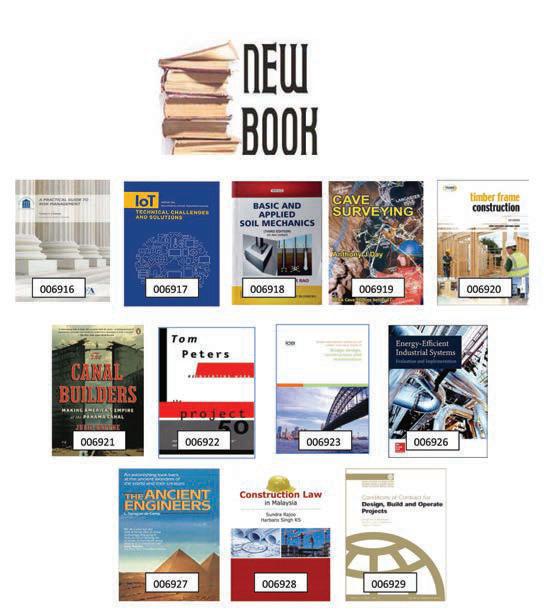
CONTINUATION LIST FROM OCTOBER JURUTERA 2017 ISSUE
PEMINDAHAN
KEPADA AHLI SISWAZAH No. Ahli NamaKelayakan
KEJURUTERAAN AWAM
33188NUR HIZARUDDIN BIN CHE AJID
42893HARTINI BINTI ABDUL RASHID
B.E.HONS.(UITM) (MECHANICAL, 2014)
55928LAU LEE SIANB.E.HONS.(UTHM) (MECHANICAL, 2015)
53945 LEE KEAN YOONG
B.E.HONS.(UITM)(CIVIL, 2010) M.E.(UTM)(CIVILTRANSPORTATION & HIGHWAY, 2012)
47944 ONN SZE YING B.E.HONS.(UTAR)(CIVIL, 2011)
47844OOI LER XUENB.E.HONS.(USM)(CIVIL, 2012)
72739 QAMARULARIFFIN BIN SAHID B.E.HONS.(UNITEN)(CIVIL, 2015)
21173REDZUAN BIN MD YUNUS B.E.HONS.(UITM)(CIVIL, 2003)
88458SANDESH SINGH BHATT
B.E.HONS.(SEGI)(CIVIL, 2016)
65875SITI NORADILA BINTI ABD RAHMAN B.E.HONS.(UITM)(CIVIL, 2014)
72330TAN WEN JIAB.E.HONS.(UTAR SG LONG) (CIVIL, 2017)
KEJURUTERAAN ELEKTRIKAL
66614CHEW QUIN SHENB.E.HONS.(UNITEN) (ELECTRICAL POWER, 2013)
48523KOK CHIN CHAIB.E.(WARNBOROUGH UNI.)(ELECTRICAL, 2001) M.E.(UTAR)(ELECTRICAL, 2016)
40851LAHARAJA BIN LAHADI B.E.HONS.(UMP) (ELECTRICAL-POWER SYSTEM, 2010)
66619LEE CHIEN WUB.E.HONS.(UNITEN) (ELECTRICAL POWER, 2013)
58158 LOGENDRAN A/L S. MARAGATHAMANI
45137MOHAMAD HISHAM BIN MOHAMAD NASIR
34664MOHD. GHAFFAR BIN GHAZI
73917 MUHAMMAD AZIQ BIN HANUAR
72676MUHAMMAD JAMILUL NA'IM BIN MOKHTAR
42112 STELLAANAK JAGAH @ SUBENG
B.E.HONS.(UNITEN) (ELECTRICAL POWER, 2016)
B.E.HONS.(UTP)(ELECTRICAL & ELECTRONICS, 2011)
B.E.HONS.(UTEM) (ELECTRICAL-POWER ELECTRONIS & DRIVE, 2009)
B.E.HONS.(MMU) (ELECTRICAL, 2015)
B.E.HONS.(UKM)(ELECTRICAL & ELECTRONIC, 2015)
B.E.HONS.(UTP)(ELECTRICAL & ELECTRONICS, 2010)
37426TUNG SOON SENGB.E.HONS.(UTAR) (ELECTRICAL & ELECTRONIC, 2009)
49187 VASUDEVAN A/L PRABHAKARAN
B.E.HONS.(UNITEN) (ELECTRICAL POWER, 2014)
KEJURUTERAAN ELEKTRONIK
52024FARHANAH BINTI AZMI
B.E.HONS.(UNIMAS) (ELECTRONICTELECOMMUNICATIONS, 2015)
66508 TEO YOW CHUAN B.E.HONS.(MMU) (ELECTRONICSTELECOMMUNICATIONS, 2016)
KEJURUTERAAN KIMIA
66060KHAW WEI CHUENB.E.HONS.(TAYLOR'S) (CHEMICAL, 2017)
45884NURUL DARSANI BINTI AMAT DARBIS B.E.HONS.(USM)(CHEMICAL, 2013)
72316PARAMESPARAN PAVITHIRAH B.E.HONS.(UTAR SG LONG) (CHEMICAL, 2017)
87019 TAN CHIN HOWB.E.HONS.(UTAR SG LONG) (CHEMICAL, 2017)
73197 TAN YONG CHAI B.E.HONS.(UMP)(CHEMICAL, 2015)
81056 VILAASHINI A/P NAGENDERAN B.E.HONS.(UTAR) (PETROCHEMICAL, 2016)
KEJURUTERAAN MEKANIKAL
50289ABDUL HAZIQ BIN ABDUL MAJID B.E.HONS.(UITM) (MECHANICAL, 2014)
39691 AHMAD AZRI BIN MOHD B.E.HONS.(UTM) (MECHANICAL, 2014)
30414 ARMAN BIN ABDUL RASHID B.E.HONS.(UITM) (MECHANICAL, 2010)
61286AZWAN B. ABDULLAH B.E.HONS.(UITM) (MECHANICAL, 2016)
50848CHANG FOO KOONB.E.HONS.(USM) (MECHANICAL, 2015)
65029 CHOONG PUI YUNG B.E.HONS.(TAYLOR'S UNI.) (MECHANICAL, 2015)
46690FARIS FIRDAUS BIN ABDUL MUTALIB B.E.HONS.(UITM) (MECHANICAL, 2014)
55120GOH WEI LOONB.E.HONS.(UTHM) (MECHANICAL, 2016)
M.E.HONS.(UNI OF NOTTINGHAM)(MECHANICAL, 2015)
21908LEE SEE PENGB.E.HONS.(UTM-SPACE) (MECHANICAL, 2017)
80340 LEE YIN SIANG
80314 LOW YONG CHEN
35455MOHD FAROUQ BIN BAHARIN
45975 MUHAMMAD AMMAR YASSER BIN MOHD ZAID
30468MUHAMMAD FAISAL BIN ISKANDAR
67632MUHAMMAD HANIF B. BAHARUDDIN
B.E.HONS.(UTAR SG LONG) (MECHANICAL, 2017)
B.E.HONS.(UTAR SG LONG) (MECHANICAL, 2017)
B.E.HONS.(UITM) (MECHANICAL, 2013)
B.E.HONS.(UITM) (MECHANICAL, 2013)
B.E.HONS.(UITM) (MECHANICAL, 2011)
B.E.HONS.(UITM) (MECHANICAL, 2017)
61266NG MAN SHINGB.E.HONS.(UTAR SG LONG) (MECHANICAL, 2017)
86997 NG YEONG JIANG
39713NORAISHAH BINTI MOHAMAD NOOR
53459NUR' SYAFIQAH BINTI ISMUINI
93689KHAIR BIN BADRIB.E.HONS.(UMP)(CIVIL, 2014)
93911 KONG SOON THAI M.E.HONS.(UNI. OF NOTTINGHAM)(CIVIL, 2017)
93548KUEH LING LEEB.E.HONS.(SWINBURNE UNI. OF TECH.)(CIVIL, 2015)
93968 LAM TIAN FOOK B.E.HONS.(UTM)(CIVIL, 2012)
93921LAU JIAN NINGB.E.HONS.(USM)(CIVIL, 2016)
93929 LAW CHENG YANG B.E.HONS.(SWINBURNE UNI. OF TECH.)(CIVIL, 2014)
93831LEE LONG GUANGB.E.HONS.(UNITEN)(CIVIL, 2017)
93585 LEE PUI YIT B.E.HONS.(UCSI)(CIVIL, 2015)
93704LEE SIEW CHENGB.E.HONS.(USM)(CIVIL, 2012)
93543 LIEW KHANG YUEH B.E.HONS.(UTAR)(CIVIL, 2016)
93837LIM CHONG WEI, FABIAN B.SC.(OKLAHOMA STATE UNI.) (CIVIL, 1997)
93573LOO PIN HONGB.E.HONS.(UNSW)(CIVIL, 2011)
93836MOHAMAD SALIHIN SF BIN SALIM B.E.(TOTTORI UNI.)(CIVIL, 2010) M.E.(TOTTORI UNI.) (MANAGEMENT OF SOCIAL SYSTEMS & CIVIL ENGRG., 2012)
93807 MOHAMED ALIF BIN MOHAMED ROZNAN B.E.HONS.(UITM)(CIVIL, 2010)
B.E.HONS.(UTAR SG LONG) (MECHANICAL, 2017)
B.E.HONS.(UTHM) (MECHANICAL, 2007)
B.E.HONS.(UTEM) (MECHANICAL-DESIGN & INNOVATION, 2015)
80286ONG SOON LENGB.E.HONS.(UTAR SG LONG) (MECHANICAL, 2017)
86992OOI GUO JIEB.E.HONS.(UTAR SG LONG) (MECHANICAL, 2017)
58240 UGEASWARAN A/L PERUMAL
B.E.HONS.(UTHM) (MECHANICAL, 2015)
KEJURUTERAAN PEMBUATAN
60234MOHD RADHI BIN NORZAKI
34951MOHD SYAZNI BIN MOHD NIZAM
B.E.HONS.(UTEM) (MANUFACTURING-ROBOTICS & AUTOMATION, 2013)
B.E.HONS.(UITM) (MECHANICALMANUFACTURING, 2012)
KEJURUTERAAN SUMBER MINERAL
57963RIZAL HAFIZ B. RAZALI
B.E.HONS.(USM)(MINERAL RESOURCES, 2016)
PERMOHONAN MENJADI AHLI SISWAZAH No. Ahli NamaKelayakan
KEJURUTERAAN AEROANGKASA
NUR SHAHIBRAHIM BIN MAHAMUDIN
B.E.HONS.(IIUM)(AEROSPACE, 2014)
KEJURUTERAAN AERONAUTIKAL
93691MUHAMMAD FAIRUZ BIN MUHAMMAD NASIR
KEJURUTERAAN AWAM
93870 ABDULAZIM BIN MUSTAPA
93787ABDUL QADIR BIN JAILANI
93673ANNUAR BIN
ABDULLAH
AZZAIYAD BIN
AHMAD KEHAN
93917BONG MAI WENG
93966CHEE CHIEN CHERN
93542 CHIA YING SIM
93579CHONG HAW JIUN, CLEMENT
93852CLIFF JUDE ZEHNDER
93970 DR TAN CZHIA YHEAW
93962HASMIDAH BINTI SAID
93951 HIU CHI YIP
B.E.HONS.(UPM)(AEROSPACE, 2009)
B.E.HONS.(UITM)(CIVIL, 2013)
B.E.HONS.(UTP)(CIVIL, 2010)
B.E.(UMP)(CIVIL, 2010)
B.E.HONS.(UKM)(CIVIL & STRUCTURE, 2001)
B.E.HONS.(UTM)(CIVIL, 2015)
B.E.HONS.(UTM)(CIVIL, 2012)
M.E.HONS.(UNI. OF LEEDS) (CIVIL & STRUCTURAL, 2011)
M.E.HONS.(UNI. OF NOTTINGHAM)(CIVIL, 2016)
B.E.HONS.(SWINBURNE UNI. OF TECH.)(CIVIL, 2015)
B.E.HONS.(UTM)(CIVIL, 2005) PHD.(NUS)(2012)
B.E.HONS.(UNITEN)(CIVIL, 2016)
B.E.HONS.(UTAR SG LONG) (CIVIL, 2017)
93930HO FOOK MINGB.E.HONS.(SWINBURNE UNI. OF TECH.)(CIVIL, 2014)
93714IR. MOHAMMAD AZMAN BIN RAZALI
93835 JOHN GARY ANAK JENTRY
B.SC.(UNI. OF ABERDEEN)(CIVIL, 1988) M.SC.(LOUGHBOROUGH UNI.)(AIRPORT PLANNING & MANAGEMENT, 1997)
B.E.HONS.(UNIMAS)(CIVIL, 2009)
93514MOHD. GASSRY NAZMY BIN SAHARUDIN B.E.HONS.(UMP)(CIVIL, 2016)
93700MOHD. NASRULLAH BIN OMAR
B.E.HONS.(UNIMAS)(CIVIL, 2014)
MOHD. NURHAKIM BIN ABDUL RAHIM B.E.HONS.(UTM)(CIVIL, 2015)
93856MOHD. RASHIDI BIN BAKLI
MOHD. SHAHRIL BIN WAN MOHAMED YUSOF
93583MOHD. SHAHRUL IZWAN BIN RAZMI
93898MOHD. SUKRY BIN ISMAIL
B.E.HONS.(UITM)(CIVIL, 2012)
B.E.HONS.(UTHM)(CIVIL, 2003)
B.E.HONS.(UNIMAP) (BUILDING, 2012)
B.E.HONS.(UTM)(CIVIL, 2016)
MOHD. YUSRI BIN YUNUS B.E.HONS.(UTM)(CIVIL, 2000)
93563MOHD. ZAMRI BIN TASIMAN B.E.HONS.(UTM)(CIVIL, 2003)
93674 MUHAMAD AFIQ BIN HASANUDDIN B.E.HONS.(USM)(CIVIL, 2014)
93868 MUHAMMAD AMIN BIN AZHARI B.E.HONS.(UTP)(CIVIL, 2012)
93907MUHAMMAD NASHRIQ FARHAN BIN SUPANDI
93710MUHAMMED RIFHAN BIN RAMLI
93706NAZURAH ZAHIDAH BINTI UMAR BAKI
B.E.HONS.(UTM)(CIVIL, 2007)
B.E.HONS.(UTM)(CIVIL, 2015)
B.E.HONS.(UNIMAS) (CIVIL, 2011)
M.E.(UTM)(CIVILTRANSPORTATION & HIGHWAY, 2013)
93801 NOR ARFIAN BIN YUSOF B.E.(CARLETON UNI.)(CIVIL, 1998)
93844NORHAFIZAH BINTI BAZALAHMAD B.E.HONS.(USM)(CIVIL, 2014)
93841NORHAFIZAH BINTI SAFRIMAN B.E.HONS.(UTHM)(CIVIL, 2014) )
93825 NUR ALIA BINTI SULAIMAN M.E.HONS.(UNI. OF NEWCASTLE UPON TYNE) (CIVIL,2016)
93959NUR ZUKRINA BINTI ZUHAIRI B.E.HONS.(UNITEN)(CIVIL, 2016)
93969NUR'ATIAH BINTI ZAINI B.E.HONS.(UTM)(CIVIL, 2013) M.E.(UNITEN)(CIVIL, 2016)
93564NUREZZATY BINTI FADIL B.E.HONS.(UTM)(CIVIL, 2012)
93889PANG SWEE NGEEB.E.(UMP)(CIVIL, 2010)
93782RAHMAT ZULHAIRI BIN MOHAMED B.E.HONS.(UTM)(CIVIL, 2010)
93565RAJA SYAZANA BINTI RAJA SHUIB B.SC.(SEOUL NATIONAL UNI.) (CIVIL & ENVIRONMENTAL, 2013)
RUZYTA BINTI ZAKARIA B.E.HONS.(UKM)(CIVIL & STRUCTURAL, 1999)
93685 SAIFULADLI BIN MAT SANI B.E.HONS.(IUKL)(CIVIL, 2008)
93557SALWA BINTI SEREB.E.HONS.(UTHM)(CIVIL, 2012)
93842 SANGEETHAA/P RAMASAMY B.E.(UMP)(CIVIL , 2011)
93553SHANMUGAPRIYA DEWEDREE B.E.HONS.(SEGI UNI.)(CIVIL, 2015)
93679SHARIL IMRI BIN SHUIB B.E.HONS.(UITM)(CIVIL, 2007)
93572SIA CHIONG HUOB.E.(UMP)(CIVIL, 2010)
93923SII CHUNG CHYI, AMANDA B.E.HONS.(CURTIN UNI. OF TECH.)(CIVIL & CONSTRUCTION, 2016)
93541SITI ZULAIKHA BINTI ZULKEFLI B.E.HONS.(UITM)(CIVIL, 2017)
93540SRI EKA WAHYUNI BINTI NAZARUDDIN
SUHAILA BINTI MOHD REDZUAN
93811SUHAIZA BINTI MOHD SALLEH
93858SYAHMIZZI IFWAT BIN AZHARNIM
93675SYERRY SHAFIKHA BINTI MAT NOR HAIRI
B.E.HONS.(UITM)(CIVIL, 2017)
B.E.HONS.(UNITEN)(CIVIL, 2012)
B.E.HONS.(UITM)(CIVIL, 2008)
B.E.HONS.(UITM)(CIVIL, 2013) M.E.SC.(UITM) (GEOTECHNICAL, 2015)
B.E.HONS.(UITM)(CIVIL, 2013)
93809TAN KOON WEEB.E.HONS.(UTM)(CIVIL, 2005)
93820TAN MING EEB.E.HONS.(UTP)(CIVIL, 2016)
93808 TAN YUN PING, JERREN
93539DR KHAIRUNNISA BINTI HASIKIN
B.E.HONS.(MALAYA) (ELECTRICAL, 2007) M.E.SC.(MALAYA) (ELECTRICAL, 2011) PHD.(USM)(2014)
93577DR MOHAMAD HAFIZ BIN MAMAT B.E.(NAGOYA UNI.) (ELECTRICAL, ELECTRONIC & INFORMATION ENRG, 2005) M.E.(UITM) (ELECTRICAL, 2010) PHD.(UITM)(ELECTRICAL, 2013)
93865MUHAMMAD MAZHAR BIN MOFTY
B.E.HONS.(UPNM) (ELECTRICAL & ELECTRONICPOWER,2012)
93914MUHAMMAD ZA'IM HAKIMI BIN JAFAR B.E.HONS.(UNITEN) (ELECTRICAL POWER, 2016)
NABILAH HIDAYAH BINTI MAT DIYAN B.E.HONS.(UTHM) (ELECTRICAL, 2015)
93698 NAWAI ANAK LANGAR B.E.HONS.(UTEM) (ELECTRICAL-POWER ELECTRONIC & DRIVE, 2007)
93789NG CHIEN MINGB.E.HONS.(UNI. OF NURTHUMBRIAAT NEWCASTLE)(ELECTRICAL & ELECTRONIC, 2013) M.E.(MALAYA)(POWER SYSTEMS, 2016)
B.E.HONS.(UNIMAS)(CIVIL, 2013) M.E.(UNIMAS)(2016) 93853TING MUI HENG, JUDE
93824DR TAN CHEE PINB.E.HONS.(UNI. OF LEICESTER)(ELECTRICAL & ELECTRONIC, 1998) PHD.(UNI. OF LEICESTER) (2002)
B.E.HONS.(MALAYA)(CIVIL, 2010)
93903FOO CHUAN CHUENM.E.HONS.(UNI. OF NOTTINGHAM)(ELECTRICAL, 2013)
93888TONG KWAN SHENB.E.HONS.(UTAR)(CIVIL, 2016) 93965UMMU BALQIS BINTI JOHARI
93904WAN KHAIRUL AZMAN BIN WAN ZAWAWI
B.E.HONS.(UTM)(CIVIL, 2005)
B.E.HONS.(UITM)(CIVIL, 2016)
93897WONG CHEA HAOB.E.HONS.(NTU)(CIVIL, 2011)
93891WONG CHOONG LUM, RICKY
93544 WONG KEAW YUN
B.E.HONS.(UMP)(CIVIL, 2014)
B.E.HONS.(UNITEN)(CIVIL, 2009)
93708WONG WENG HONGB.E.HONS.(UNITEN)(CIVIL, 2014)
93927YAP KAH MINGB.E.HONS.(UNIMAS)(CIVIL, 2011)
31261ZAKRIL SYAFRANI BIN SAMSUDI
ZARIFAH BINTI ZULKIFLI
93558ZARINA BINTI YUSOF
93701ZURHIJJAS BIN RABIEE
KEJURUTERAAN BAHAN
B.E.HONS.(MALAYA)(CIVIL, 2009)
B.E.HONS.(UNISEL)(CIVIL, 2010)
B.E.HONS.(UTM)(CIVIL, 2011) M.E.(UTM)(CIIVLGEOTECHNICS, 2013)
B.E.HONS.(UNIMAS)(CIVIL, 2011)
93943LEE SUE MAYNEB.E.HONS.(UTAR SG LONG) (MATERIALS, 2017)
93815YEE SWEE LI, MAXINE B.E.HONS.(MALAYA) (MATERIALS, 2000) M.TECH.(MALAYA)(MATERIAL SCIENCE, 2004)
KEJURUTERAAN BIO-PERUBATAN
93688ASMA KHAIRU BINTI MAJID B.E.HONS.(UNIMAP) (BIOMEDICAL ELECTRONIC, 2014)
93786HANAFI BIN MUSAB.E.HONS.(UTM) (BIO-MEDICAL, 2014) M.SC.(UNI. OF MANCHESTER) (BIOMATERIALS, 2015)
KEJURUTERAAN EKLEKTRIKAL
93894 ABDULAZEEM BIN MOHAMED MOHIDEEN
ABDUL SYAHID BIN ISMAIL
B.E.HONS.(UTP)(ELECTRICAL & ELECTRONIC, 2013)
B.E.HONS.(UTM)(ELECTRICALINSTRUMENTATION & CONTROL, 2008)
93843AHMAD FIRDAUS BIN KAMARAZAMAN B.E.(UNSW)(ELECTRICAL, 2013)
93550AMAR HAKIM BIN NOOR RAHIM B.E.HONS.(UTEM) (ELECTRICAL-INDUSTRIAL POWER, 2012)
93554AMAR NAZIRUL BIN AMAN SARIFUDIN B.E.HONS.(UTM)(ELECTRICAL, 2012)
93912AMIRZAKI BIN ZAHARI B.E.HONS.(UITM) (ELECTRICAL, 2009)
93702ANG KEAT HONGB.E.HONS.(UTAR) (ELECTRICAL & ELECTRONIC, 2017)
93823AZLEY BIN
JAMALUDDIN @ ABDULAZIZ
B.E.HONS.(UNITEN) (ELECTRICAL POWER, 2007)
93864CHIN JIAN JIM.E.HONS.(NOTTINGHAM) (ELECTRICAL & ELECTRONIC, 2017)
93964CHIN KIAN SENG, ALSTON B.E.HONS.(MONASH UNI.) (ELECTRICAL & COMPUTER SYSTEMS, 2011)
93551CHONG HENN HOWB.E.HONS.(UNITEN) (ELECTRICAL POWER, 2013)
93788 CHUNG TIIN KANG, MATTHEW B.E.HONS.(UMS)(ELECTRICAL & ELECTRONIC, 2011)
93913 DR AVINASH ASHWIN RAJ B.E.HONS.(UNITEN) (ELECTRICAL & ELECTRONICS, 2007) M.E.(UNITEN) (ELECTRICAL, 2012) PHD.(UNITEN)(ENGINEERING, 2016)
93575HAFIZI BIN HALIMB.E.HONS.(UPNM) (ELECTRICAL & ELECTRONICPOWER, 2011)
93637IR. MUHAMED TARMIZY BIN YAACOB
B.SC.(UNI. OF SUSSEX) (ELECTRICAL, 1983)
IZZAT BIN SAATB.E.HONS.(UITM) (ELECTRICAL, 2011)
93670 JAGDESH RAO A/L KRISHNAN
93696JAMILAH BINTI MD ISA
93899 KHAIRULAZHAR BIN MD. JAMIL
B.E.HONS.(UTM)(ELECTRICAL, 2016)
B.E.HONS.(UITM) (ELECTRICAL, 2014)
B.E.HONS.(UNIMAP) (ELECTRICAL SYSTEMS, 2010)
93552KUAN LUK CHEONGB.E.HONS.(RMIT) (ELECTRICAL, 2013)
93784 LIM CHIA YEE
93859 LIM YIN KIN
93680MAHMUD HAFIZ BIN MOHAMAD TAHIR
93780MAHYARUDIN BIN MOHD
93869MELISSA SHAMANI GANASON
93961 MISHAN ARAVIND S/O DINESH ARAVIND
93569MOHAMAD FIKRI HISHAM BIN OSMAN
B.E.HONS.(UMS)(ELECTRICAL & ELECTRONIC, 2016)
B.E.HONS.(LIVERPOOL JOHN MOORES)(ELECTRONICS & CONTROL SYSTEMS, 2012)
M.SC.(UNI. OF NEWCASTLE UPON TYNE)(ELECTRICAL POWER, 2016)
B.E.HONS.(USM)(ELECTRICAL POWER, 2001)
B.E.HONS.(UTM)(ELECTRICALINSTRUMENTATION & CONTROL, 2008)
M.E.HONS.(ICL)(ELECTRICAL & ELECTRONIC WITH MANAGEMENT, 2008)
B.E.HONS.(UTAR) (ELECTRICAL & ELECTRONIC, 2013)
M.E.HONS.(UNI. OF SOUTHAMPTON) (ELECTRICAL, 2016) MOHAMAD REDZA BIN MOHAMAD RADZUAN
93798 MOHD. ADZHAR BIN AZIZAN
93795 MOHD. AZRIN BIN MOHD IZAB
93960 MOHD. FAISALAMIR BIN MUSTAPHA
93854MOHD FAZLI BIN ZAKARIA
93785MOHD. KHAIRIL BIN MOHAD HZER
93833MOHD. MAZLIH BIN AWANG
93709MOHD. NASHRIQ BIN MOHAMAD DAT
93586MOHD. SUFIAN BIN MD HASSAN
93849 MOHD. YASMER BIN DAUD
93840MOHD. ZULHILMI BIN ABD RAHNI
93588MOHD. ZURAIDI BIN ABDUL THANIM
MUHAMAD AZAM BIN HAMZAH
93926MUHAMAD HAZIM BIN ABDULLAH
93556 MUHAMMAD AIDIL ADHA BIN AZIZ
MUHAMMAD AZRI
BIN MOHD ZAWAWI
93905MUHAMMAD FAHMI BIN ISA
B.E.HONS.(KUTKM) (ELECTRICAL-INDUSTRIAL POWER, 2006)
B.E.HONS.(UTM-SPACE) (ELECTRICAL, 2016)
B.E.HONS.(UTM-SPACE) (ELECTRICAL, 2012)
B.E.HONS.(UITM) (ELECTRICAL, 2009)
B.E.HONS.(MALAYA) (ELECTRICAL, 2006)
B.E.HONS.(UITM) (ELECTRICAL, 2013)
B.E.HONS.(UTEM) (ELECTRICAL-CONTROL, INSTRUMENTATION & AUTOMATION, 2007)
B.E.HONS.(UITM) (ELECTRICAL, 2010)
B.E.HONS.(UTHM) (ELECTRICAL, 2012)
B.E.HONS.(UITM) (ELECTRICAL, 2009)
B.E.HONS.(UITM) (ELECTRICAL, 2011)
B.E.HONS.(UNIMAP) (ELECTRICAL SYSTEMS, 2009)
B.E.HONS.(UTM-SPACE) (ELECTRICAL, 2016)
B.E.HONS.(UPNM) (ELECTRICAL & ELECTRONICPOWER, 2013)
B.E.HONS.(UITM) (ELECTRICAL, 2014)
B.E.HONS.(UITM) (ELECTRICAL, 2014)
B.E.HONS.(UNIMAP) (ELECTRICAL SYSTEM, 2016)
MUHAMMAD FARID BIN SHAMSHUDDIN B.E.HONS.(UTM)(ELECTRICAL, 2016)
MUHAMMAD FIRDAUS BIN RAMLI
B.E.HONS.(UITM) (ELECTRICAL, 2014)
93806NG KAR LAIB.E.HONS.(UNI. OF NURTHUMBRIAAT NEWCASTLE)(ELECTRICAL & ELECTRONIC, 2013) M.E.(MALAYA)(POWER SYSTEMS, 2016)
93568 NOR AZIELA BINTI ALIAS B.E.HONS.(UPNM) (ELECTRICAL & ELECTRONICPOWER, 2012)
NUR FATIHAH BINTI IBRAHIM B.E.HONS.(UTEM) (ELECTRICAL-INDUSTRIAL POWER, 2016)
NURIMAN BIN CHE YAHAYA B.E.HONS.(UNISEL) (ELECTRICAL, 2011)
93925 OOI YEW CHONG B.E.HONS.(UMS)(ELECTRICAL & ELECTRONICS, 2014)
93549RAIMI BIN AB. LAJISB.E.HONS.(UITM) (ELECTRICAL, 2013)
93918RAJA ISKANDAR BIN RAJA IDRIS B.E.HONS.(UTHM) (ELECTRICAL, 2012)
93862 RUEBAN ANTONY B.E.HONS.(UNITEN) (ELECTRICAL & ELECTRONIC, 2011)
93817SAIFUL ISHAM BIN ISMAIL B.E.HONS.(UNITEN) (ELECTRICAL POWER, 2011)
SITI NADIAH BINTI MOHD AINI B.E.HONS.(UITM) (ELECTRICAL, 2010)
SYAHRIL IZUAN BIN ILIYASAK B.E.HONS.(UITM) (ELECTRICAL, 2007)
93935TENG JIA HO GAVINB.E.HONS.(UTAR SG LONG) (ELECTRICAL & ELECTRONIC, 2017)
93915THEN KIM KIANB.E.HONS.(MALAYA) (ELECTRICAL, 2012)
93829TING SIAW HUI, JACQUELINE B.E.HONS.(UNIMAP) (INDUSTRIAL ELECTRONIC, 2014)
93690 WAN ABD KHALID BIN ABD RAZAK B.E.HONS.(UITM) (ELECTRICAL, 2012)
93810 WAN ABDULAZIR BIN WAN MUSA B.E.HONS.(UTHM) (ELECTRICAL, 2005)
93832YEOH CHEE KEONGM.E.HONS.(UNI. OF NOTTINGHAM)(ELECTRICAL & ELECTRONIC, 2017)
93712ZAHIRUDDIN BIN MOHAMED ISA B.E.HONS.(UNISEL) (ELECTRICAL, 2012)
93781 ZULAZHAN BIN ABU BAKAR B.E.HONS.(UTM)(ELECTRICAL, 2004)
KEJURUTERAAN ELEKTRONIK
93922ALI IMRAN BIN IBRAHIM B.E.HONS.(UNIMAP) (BIOMEDICAL ELECTRONIC, 2011) M.E.(MALAYA)(INDUSTRIAL ELECTRONICS & CONTROL, 2016)
93779 ASYRAN BIN AHMAD B.E.HONS.(UKM) (ELECTRICAL, ELECTRONIC & SYSTEMS, 1999)
AWIS BIN ALI B.E.HONS.(UNIMAP) (INDUSTRIAL ELECTRONIC, 2012)
93850 AZFAR ASYRAFIE BIN AHMAD B.E.HONS.(UPNM) (ELECTRICAL & ELECTRONICCOMMUNICATIONS, 2015)
93813 AZMAN BIN ABD AZIZ @ MOHD YUSOF B.E.HONS.(UNI. OF HERTFORDSHIRE) (ELECTRICAL & ELECTRONIC, 1999) M.SC.(IIUM) (MECHATRONICS, 2009)
93805AZRIF BIN MANUTB.E.HONS.(UKM) (ELECTRICAL, ELECTRONIC & SYSTEMS, 2001) M.SC.(UKM)(ELECTRICAL, ELECTRONIC & SYSTEMS, 2007)
93580DR GOH KAM MENG B.E.HONS.(UTM)(ELECTRICALELECTRONICS, 2010) PHD. (UTM)(ELECTRICAL, 2015)
93900 DR SARAH YASMIN BINTI MOHAMAD B.E.HONS.(UITM) (ELECTRICAL, 2009) M.E.(UKM)(COMMUNICATION & COMPUTER, 2011) PHD.(THE QUEEN'S UNI. OF BELFAST)(2015)
93562MUHAMMAD HAIKAL
BIN ZAKARIYA
B.E.HONS.(UTP)(ELECTRICAL & ELECTRONICS, 2014)
93567 DR TANG TONG BOON
93711 FAIRUZ ATTRAS BIN
B.E.HONS.(UNI. OF EDINBURGH)(ELECTRONICS & ELECTRICALCOMMUNICATIONS, 1999)
PHD.(UNI. OF EDINBURGH) (ENGINEERING, 2006)
MUHAMAD B.E.HONS.(UITM) (ELECTRICAL, 2009)
FARAH BINTI
AHMAD KAMAL
KEJURUTERAAN GEOTEKNIKAL
92418 CHIN THAU WUI
B.E.HONS.(IIUM) (COMMUNICATION, 2014)
93860FLETCHER SARIPB.E.HONS.(MONASH) (ELECTRICAL & COMPUTER SYSTEMS, 2016)
93902FONG LEN NIEB.E.HONS.(KUITTHO) (ELECTRICAL-MEDICAL ELECTRONICS, 2003)
93944LEE QING XIANGB.E.HONS.(UTAR SG LONG)(ELECTRONIC COMMUNICATION, 2017)
93576 MOHD. AKBAR BIN ABU BAKAR
MOHD FIRDAUS BIN
B.E.HONS.(UTM)(ELECTRICALELECTRONICS, 2009)
IBRAHIM B.E.HONS.(KUITTHO) (ELECTRONIC, 2002)
MOHD FIRDA'UZ BIN SUHAIMI
93547MOHD. HELMY HAKIMIE BIN MOHD ROZLAN
93804 MOHD. TOHER BIN MOHAMED KENAPIAH
MUHAMAD FARIQ BIN AHMAD
MUHAMAD SHAIDE BIN ABDUL KARIM
MUHAMAD UZAIR BIN SHAMSUL
MUHAMMAD HANIF BIN YAHYA
93561MUHAMMAD HANIS BIN OMAR
B.E.HONS.(UTM)(ELECTRICALELECTRONICS, 2006)
M.E.HONS.(BRUNEL UNI.) (ELECTRONIC & ELECTRICAL, 2012)
DIPL-ING.FH.(FRANKFURT UNIVERSITY OF APPLIED SCIENCES)(ELECTRICAL ENERGY & AUTOMATION TECHNOLOGY, 2010)
B.E.HONS.(UTEM) (ELECTRONIC-INDUSTRIAL ELECTRONICS, 2013)
B.E.HONS.(UITM) (ELECTRONICSINSTRUMENTATION, 2013)
B.E.HONS.(UITM) (ELECTRONIC, 2013)
B.E.HONS.(UTEM) (ELECTRONICTELECOMMUNICATION ELECTRONICS, 2013)
B.E.HONS.(UTEM) (ELECTRONIC-WIRELESS COMMUNICATIONS, 2013)
MUHAMMAD NUR HAKIM BIN NORDIN B.E.HONS.(UTHM) (ELECTRONIC, 2014)
MUHAMMAD SAFWAN BIN ABDUL RAZAK
93819MUHD. FAIZ BIN ROSLI
93972 NOOR ADZIELLA BINTI MOHAMAD
B.E.HONS.(UNITEN) (ELCTRICAL & ELECTRONICS, 2012)
B.E.HONS.(UTM)(ELECTRICALELECTRONIC, 2009)
B.E.HONS.(UITM) (ELECTRONICSINSTRUMENTATION, 2013)
93895 NOOR ARJUNADI BIN MOHD NOOR B.E.HONS.(UTM)(ELECTRICAL, 2000)
93971 NOR ASHRAF BIN MOHD SALIM
B.E.HONS.(STAFFORDSHIRE UNI.)(ELECTRICAL, 2006) M.E.(STAFFORDSHIRE UNI.) (ELECTRICAL, 2008) NOR ILFA BINTI MD NOR B.E.HONS.(UPM) (COMPUTER SYSTEM & COMMUNICATIONS, 2002)
93821RABINDRA A/L GANDHI THANGARAJOO
RAJAAHMAD KAMIL BIN RAJA YACOB
B.SC.(ROBERT GORDON UNI.)(ELECTRONIC & ELECTRICAL, 1998)
M.E.(UTM)(ELECTRICALELECTRONICS & TELECOMMUNICATIONS, 2009)
B.E.HONS.(UTEM) (ELECTRONICTELECOMMUNICATION ELECTRONICS, 2009) M.SC. (UTM)(PETROLEUM, 2013) ROMAZAM BIN HIZAT B.E.HONS.(UTM)(ELECTRICALELCTRONICS, 2003)
93818ROSLI BIN KHALIDB.E.HONS.(UTM)(ELECTRICAL, 2004)
93919SHAHMINI SUBRAMANIAM B.E.HONS.(MMU) (ELECTRONICTELECOMMUNICATIONS, 2013)
93871 SITI AZURA BINTI RAMLAN B.E.HONS.(UITM)(COMPUTER, 2007)
93692SITI NORSYAZWANI BINTI YAAKOB B.E.HONS.(UNITEN) (ELECTRICAL & ELECTRONICS, 2012)
93793SOO ZHEYAN, JOSHUA B.E.HONS.(MMU) (ELECTRONICNANAOTECHNOLOGY, 2016)
93955 TAN THENG GUAN B.E.HONS.(MMU) (ELECTRONICS, 2005)
93695WAN MUHAMMAD RAFIQI BIN WAN ZAIN B.E.HONS.(UNITEN) (ELECTRICAL & ELECTRONICS, 2013)
B.E.HONS.(UNI. OF PORTSMOUTH, CIVIL, 2009)
M.SC.(UNI. OF BIRMINGHAM) (GEOTECHNICAL, 2010)
93581LING GUONG WEIB.E.HONS.(UNI. OF EAST LONDON)(CIVIL, 2012) M.E.(UTM)(CIVILGEOTECHNICS, 2014)
KEJURUTERAAN KIMIA
93838ABDUL RAHMAN BIN HARIRI
B.E.HONS.(MONASH) (ENGINEERING, 1986)
93783ANG WEI HAOM.E.HONS.(UNI. OF NOTTINGHAM)(CHEMICAL, 2016)
93906BRENDAN VINSENTB.E.HONS.(MONASH UNI.) (CHEMICAL, 2016)
93954CHEAH CHEE CHONG
93916 CHIAH YOKE YI
93956 DR CHUNG YING TAO
ABDUL MANAN BIN O T ABD RAHMAN
B.E.HONS.(MIDDLESEX UNI.) (MECHANICAL, 1997)
93681ABDUR RAHIM BIN ABDUL RAHMAN M.E.HONS.(UNI. OF MANCHESTER)(MECHANICAL, 2013)
93677ADRI BIN NASIRB.E.HONS.(UNITEN) (MECHANICAL, 2017)
93683AHMAD NASAFI BIN AZMAN B.E.(UNI. OF SYDNEY) (MECHANICAL, 2016)
93713AISAMUDDIN BIN MUSTAFFA B.E.HONS.(KUITTHO) (MECHANICAL, 2006)
93672ANUAR BIN HASHIMB.E.HONS.(UITM) (MECHANICAL, 2010)
AZIZUL IZZAT BIN HASHIM B.E.HONS.(UTM) (MECHANICALMANUFACTURING, 2005)
93791AZLIN BIN SAMSUDIN B.E.HONS.(UTM) (MECHANICAL, 2001)
B.E.HONS.(UTAR SG LONG) (CHEMICAL, 2017)
B.E.HONS.(UTP)(CHEMICAL, 2014)
B.E.HONS.(UKM) (CHEMICAL, 2012) PHD.(UKM)(CHEMICAL & PROCESS, 2016)
93828DR KOR YANN KAEB.E.HONS.(UNI. OF SDYNEY)(CHEMICAL, 2006) PHD.(UNI. OF SDYNEY) (ENGINEERING, 2010)
93797DR LEE CHERN LEING
B.E.HONS.(UNI. OF ADELAIDE)(CHEMICAL, 2006) PHD.(UNI. OF CAMBRIGDE) (2011)
93952GAN FUNG PINGB.E.HONS.(UTAR SG LONG) (CHEMICAL, 2017)
93950KEK LI YIN, KRYSTIN
B.E.HONS.(UTAR SG LONG) (CHEMICAL, 2017)
93948KONG WEN GIEB.E.HONS.(UTAR SG LONG) (CHEMICAL, 2017)
93812LIM GEK JOO, SHERON
93846 MOHD. AIMAN BIN MOHD. NOOR
93546MOHD. SAUFI BIN MD ZAINI
B.E.HONS.(CURTIN UNI. OF TECH.)(CHEMICAL, 2016)
B.E.HONS.(UTP)(CHEMICAL, 2011)
M.E.HONS.(UNI. OF SHEFFIELD)(CHEMICAL, 2011) M.SC.(UITM)(CHEMICAL, 2016)
93941NG SU XINB.E.HONS.(UTAR SG LONG) (CHEMICAL, 2017)
93957NICOLAS
SELVAKUMAR PAUL
93890NUR IZZAQIAH BINTI JAMADIN
B.E.HONS.(UTAR)(CHEMICAL, 2014)
B.E.HONS.(UITM)(CHEMICAL & PROCESS, 2017)
93816ONG EU JINM.E.HONS.(UCL)(CHEMICAL, 2016)
93940PONG XIU MAN, JOANNE
93587SHAH RIZAN BIN SULAIMAN
93939 SUMITHIRAA/P NANTHA KUMAR
93938 TAN MAY YEE
B.E.HONS.(UTAR SG LONG) (CHEMICAL, 2017)
B.E.HONS.(USM)(CHEMICAL, 2002)
B.E.HONS.(UTAR SG LONG) (CHEMICAL, 2017)
B.E.HONS.(UTAR SG LONG) (CHEMICAL, 2017)
93937TAN SHU HAUB.E.HONS.(UTAR SG LONG) (CHEMICAL, 2017)
93934TING HUI LINGB.E.HONS.(UTAR SG LONG) (CHEMICAL, 2017)
93932 YEE HSIN YI
B.E.HONS.(UTAR SG LONG) (CHEMICAL, 2017)
KEJURUTERAAN KOMPUTER
MUHAMMAD SYAFIQ BIN MOHD SHARIF
B.E.HONS.(UNIMAP) (COMPUTER, 2015)
KEJURUTERAAN KOMPUTER & KOMUNIKASI
93928DR MOHD. SHAHNAN BIN ZAINALABIDIN
B.E.HONS.(UPM) (COMPUTER SYSTEM & COMMUNICATIONS, 2002) M.SC.(UPM) (COMMUNICATIONS & NETWORK, 2005) PHD.(UPM)(PHOTONICS & FIBER OPTIC SYSTEMS ENGINEERING, 2014)
KEJURUTERAAN KOMUNIKASI
93893DR NORUN FARIHAH ABDUL MALEK
B.E.HONS.(IIUM) (COMMUNICATION, 2006) PHD.(LOUGHBOROUGH UNI., 2013)
KEJURUTERAAN MEKANIKAL
93578A.SHARMA S/O ARUNASALAM
93545ABDUL HAKIM ADZIM BIN MOHD. ZAIN
B.E.HONS.(UNITEN) (MECHANICAL, 2009)
M.E.HONS.(QUEEN'S UNI. OF BELFAST)(MECHANICAL, 2014)
93794AZMI BIN KISSON B.E.HONS.(USM) (MECHANICAL, 1994)
93867CALVIN CHANDRAPAL B.E.HONS.(MONASH) (MECHANICAL, 2016)
93920CHAN SAI MUNB.E.HONS.(USM) (MECHANICAL, 2012)
93560 CHEAH SOON YI B.E.HONS.(INTI INT.) (MECHANICAL, 2017)
93861 CHONG YIN HO M.E.HONS.(NOTTINGHAM) (MECHANICAL, 2011)
93953CHUO CHUNG HENG B.E.HONS.(UTAR SG LONG) (MECHANICAL, 2017)
93582 DINESH KUMAR A/L SUBRRAMANIAM B.E.HONS.(UPNM) (MECHANICAL, 2013)
93671 FAIZ ASYRAF BIN ROSLAN B.E.(UMP)(MECHANICAL, 2009)
93699 FIKRI IZZAT AKMAL BIN HAMZAH B.E.HONS.(UTM) (MECHANICAL, 2015)
93790HENG CHIANG LEONG B.E.HONS.(CURTIN UNI. OF TECH.)(MECHANICAL, 2011) HIDAYATULLAH BIN MASJUD B.E.HONS.(UTHM) (MECHANICAL, 2013)
93814HILMI HARIZ BIN MAHABOT B.E.HONS.(IIUM) (MECHANICAL-AUTOMOTIVE, 2016)
JUWAIDI BIN JAMADIN B.E.HONS.(UTHM) (MECHANICAL, 2014)
93949KEU JIANN RONGB.E.HONS.(UTAR SG LONG) (MECHANICAL, 2017)
93584 KHAIRULAZRIL BIN KALID B.E.(TOKAI)(PRECISION ENRG, 2007) M.E.(TOKAI)(MECHANICAL, 2009)
93559LEE CHONG JINM.E.(UNI. OF CAMBRIDGE) (ENGINEERING TRIPOS, 2012)
93946LEE PEI LUNB.E.HONS.(UTAR SG LONG) (MECHANICAL, 2017)
93945 LEE PIN YANG B.E.HONS.(UTAR SG LONG) (MECHANICAL, 2017)
93942LEW KANG JUNB.E.HONS.(UTAR SG LONG) (MECHANICAL, 2017)
93574LIM PENG LUNB.E.HONS.(UKM) (MECHANICAL, 2012)
93676 MOHAMAD AYUB BIN ILIAS B.E.HONS.(UITM) (MECHANICAL, 2016)
93570MOHAMMAD DIAH BIN OTHMAN B.E.HONS.(UTM) (MECHANICAL-AUTOMOTIVE, 2007)
93555MOHAMMAD FAIZAL BIN ABDUL KADIR B.E.HONS.(UTP) (MECHANICAL, 2013)
93826 MOHAMMAD KHALID BIN WAHID B.E.HONS.(UTM) (MECHANICAL, 2006) M.E.(UPM)(MANUFACTURING SYSTEM, 2012)
93799 MOHD. AZLAN IBERAHIM B.E.HONS.(UTM-SPACE) (MECHANICAL, 2016)
93715MOHD. FAISAL BIN JAMIL B.E.HONS.(UTM) (MECHANICAL, 2008)
93839MOHD. FAIZAL BIN NORSARI B.E.HONS.(UTHM) (MECHANICAL, 2012)
93697MOHD. HAIRULNIZAM BIN MOHAMED B.E.(UMP)(MECHANICAL, 2009)
93694 MOHD. HELMY BIN SAKIR B.E.(TOKYO UNI. OF SCIENCE) (MECHANICAL, 2006)
93803MOHD. RAFIQ BIN MOHD. HANI B.E.HONS.(UNISEL) (MECHANICAL, 2011) MOHD. SAFRIZAL BIN MOHAMED AZHARI
B.E.HONS.(MALAYA) (MECHANICAL, 2006)
93707MOHD. SUPIAN BIN ABU BAKAR B.E.HONS.(UTM) (MECHANICAL, 2006) M.SC.(UPNM)(MECHANICAL, 2015)
93908MUHAMAD FARID MUHAMAD KHOSIM M.E.HONS.(THE UNI. OF SHEFFIELD)(MECHANICAL, 2016)
MUHAMMAD FADHLI BIN ABDUL RAHMAN B.E.HONS.(IIUM) (MECHANICAL-AUTOMOTIVE, 2014)
93796MUHAMMAD FADIL
ARSAD BIN MOHD USOPE
93866MUHAMMAD HAIKAL BIN ROSLAN
93678MUHAMMAD HARESTH BIN BAHARUDIN
MUHAMMAD IQBAL BIN SHA'RANI
93863MUHAMMAD ISKANDAR BIN ISMAIL
MUHAMMAD SHAFIQ ILHAM BIN BAHAROM
93857MUHAMMAD SHAHZALIE B IBRAHIM
B.E.HONS.(UNITEN) (MECHANICAL, 2015)
B.E.HONS.(UPNM) (MECHANICAL, 2014)
B.E.HONS.(UNITEN) (MECHANICAL, 2017)
B.E.HONS.(RMIT) (MECHANICAL, 2013)
B.E.HONS.(UTP) (MECHANICAL, 2013)
B.E.HONS.(UPNM) (MECHANICAL, 2014)
B.E.(UNI. OF NEWCASTLE) (MECHANICAL, 2014)
93827MUHAMMAD SIDDIQ BIN SALLEHUDDIN M.E.HONS.(UNI. OF SHEFFIELD)(MECHANICAL, 2013)
93822MUHAMMAD ZAFIRUL HAKIM BIN NORDIN
MUHMAD ROSDI BIN AB RAHIM
93687 NIK MOHAMAD AMRI HAFIZ BIN ZULKIFLI
B.E.HONS.(UTP) (MECHANICAL, 2015)
B.E.HONS.(USM) (MECHANICAL, 2001)
B.E.HONS.(IIUM) (MECHANICAL-AUTOMOTIVE, 2015)
93566NIZAM BIN NADZIMUDDIN B.E.HONS.(UNI. OF ADELAIDE) (MECHANICAL, 2003)
93792 NOR FARAHTULAIN BINTI HARUN B.E.HONS.(MMU) (MECHANICAL, 2016) NUR ASMAH BINTI SEPO B.E.(CARLETON UNI.) (MECHANICAL, 2015)
93958 ONG CHEW YI M.E.HONS.(UNI. OF NOTTINGHAM)(MECHANICAL, 2016)
93909PUA HAU KUANB.E.HONS.(UNI. OF BRADFORD) (MECHANICAL, 2010) M.SC.(UNI. OF BRADFORD) (MECHANICAL, 2011)
93924 PUVANESAN A/L VELAYUTHAM B.E.HONS.(UNITEN) (MECHANICAL, 2016)
ROQHIB BIN ROSHIDAN
B.E.(UNI. OF WESTERN AUSTRALIA)(MECHANICAL, 2014)
93896RUBHENDRAN KRISHNAN B.SC.(KOREA UNI.) (MECHANICAL, 2011)
SHAHRILAZAM BIN ABD RAHMAN B.E.HONS.(UITM) (MECHANICAL, 2013)
93830SHAIK MOHAMMED HAIKHAL BIN ABDUL RAHIM B.E.HONS.(UNITEN) (MECHANICAL, 2015)
93705 SIA KWANG YAW, DENNIS B.E.HONS.(MMU) (MECHANICAL, 2010)
SYED MOHD FAISAL BIN SYED KAMARUDDIN B.E.(UNI. OF SOUTH AUSTRALIA)(MECHANICAL, 1997)
93933 WOO YIK HWAN B.E.HONS.(UTAR SG LONG) (MECHANICAL, 2017)
93684YASMIN FARIDHA IZZATY BINTI SHOLIKHIN
B.E.HONS.(UNI. OF WAIKATO) (MECHANICAL, 2017)
93931YEW KHAI CHUNB.E.HONS.(UTAR SG LONG) (MECHANICAL, 2017)
KEJURUTERAAN MEKATRONIK
ANNAAMALINA BINTI ZAINOLABIDIN B.E.HONS.(UNIMAP) (MECHATRONIC, 2014)
AZRUL NASRUN BIN AWANG @ ZAKARIA B.E.HONS.(IIUM) (MECHATRONICS, 2015)
93571CHIA KOK SIANGB.E.HONS.(UTAR) (MECHATRONICS, 2011)
93682KAN MUN PUNGB.E.HONS.(UNSW) (MECHATRONIC, 2006)
93947LAU CHEE MAN, BRYAN B.E.HONS.(UTAR SG LONG) (MECHATRONICS, 2017)
93703MOHAMAD SYAZWAN BIN MAZUKI
MOHD NOR FAKURAZY BIN ABU BAKAR
MUHAMMAD ASHRAF BIN MOHD IBRAHIM
93802NOOR HAFIZATUN
BINTI ZAINI@ ZULKIFLY
93855TAY KHENG LIANG, BONAVENTURE
B.E.HONS.(UNIMAP) (MECHATRONICS, 2009)
KEJURUTERAAN PEMBUATAN
AMER RIFDI BIN HJ ARIPIN
93967AZIZUL QAYYUM BIN BASRI
B.E.HONS.(UKM) (MANUFACTURING, 2015)
B.E.HONS.(UTEM) (MANUFACTURINGMANUFACTURING PROCESSES,2009) M.E.(MANUFACTURING SYSTEMS, 2013)
93851 JAYEE A/L SREETHARAN
B.E.HONS.(MALAYA) (MANUFACTURING, 2010)
93901KHOR HAN WEIB.E.HONS.(UTEM) (MANUFACTURINGMANUFACTURING DESIGN, 2010)
93686 MOHAMED AZUAN BIN MOHAMED ABU BAKAR
MUHAMMAD KHAIRULAFFIQ BIN JASRI
B.E.HONS.(IIUM) (MANUFACTURING, 2015)
B.E.HONS.(UITM) (MECHANICALMANUFACTURING, 2016)
KEJURUTERAAN PERTANIAN
93847WONG MUN SHUANB.E.HONS.(UPM) (AGRICULTURAL & BIOSYSTEMS, 2010)
KEJURUTERAAN PETROLEUM
93834ABDUL RAZAK BIN MOHAMED AFFANDI
93963SAIDAH NAFISAH BINTI KHALID
93910SHAHIRA BINTI MOHAMAD JUMAILI
B.E.HONS.(UTP)(PETROLEUM, 2009)
B.E.HONS.(UTP)(PETROLEUM, 2014)
B.E.HONS.(UTP)(PETROLEUM, 2016)
KEJURUTERAAN POLIMER
93848DR CHAN MING YENG
B.E.HONS.(UNIMAP) (POLYMER, 2012) PHD.(UNIMAP)(MATERIALS, 2015)
KEJURUTERAAN SISTEM MEKANIKAL
93800MUHAMMAD
TAQIYUDDIN BIN CHE AB MALIK
B.E.HONS.(TAKUSHOKU UNI.) (MECHANICAL SYSTEM, 2012) M.E.(TAKUSHOKU UNI.) (MECHANICAL SYSTEM, 2015)
KEJURUTERAAN TELEKOMUNIKASI
93892DR NORAZLINA BINTI SAIDIN
B.E.HONS.(MALAYA) (TELECOMMUNICATION, 2005) M.E.(MALAYA)(OPTICAL TECHNOLOGY, 2010) PHD.(MALAYA)(FIBER OPTICS, 2015)
PERMOHONAN MENJADI AHLI ‘INCORPORATED’ No. Ahli NamaKelayakan
KEJURUTERAAN ELEKTRIKAL
ABDUL RAHMAN BIN AB RAZAK
MOHD. ABDUL SYUKUR BIN MUSA
BE.TECH.HONS.(UNIKL) (ELECTRICAL, 2014)
BE.TECH.HONS.(UNIKL) (ELECTRICAL, 2014)
93884NG KIENG LENGB.E.HONS.(UNI. OF LINCOLNSHIRE & HUMBERSIDE, 2001)
KEJURUTERAAN ELEKTRONIK
MUHAMAD ARIF BIN AMRAN
BE.TECH.HONS.(UNIKL) (MEDICAL ELECTRONICS, 2015)
KEJURUTERAAN MEKANIKAL
B.E.HONS.(IIUM) (MECHATRONICS, 2013)
B.E.HONS.(UTEM) (MECHATRONIC, 2010)
B.E.HONS.(IIUM) (MECHATRONICS, 2015)
B.E.HONS.(UNISEL) (MECHATRONICS, 2009)
93693SAZWAN SYAFIQ BIN MAZLAN B.E.HONS.(UNIMAP) (MECHATRONIC, 2012) M.SC.(USM)(ELECTRONIC SYSTEMS DESIGN ENRG., 2014)
93845SYED MOHD SYAFIQ BIN SYED MAHMUD
93936 TANG TEE YANG
MOHD. SHAHRUL REDZUAN BIN SHAHSUDIN
BE.TECH.HONS.(UNIKL) (MECHATRONICS, 2014)
KEJURUTERAAN TEKNOLOGI MAKLUMAT NOR QUSIAH BINTI ABDUL RAZAK B. IT.(UMT)(INFORMATION TECHNOLOGY-SOFTWARE ENRG., 2008)
KEJURUTERAAN TENAGA
93768MUHAMMAD SUFYAN BIN HAFIZ
BE.TECH.HONS.(UNIKL) (BIOSYSTEM, 2013)
M.E.TECH.(UNIKLHOCHSCHULE ROSENHEIM) (GREEN & ENERGY EFFICIENT BUILDINGS, 2015)
PERMOHONAN MENJADI AHLI ‘AFFILIATE’ No. Ahli NamaKelayakan
KEJURUTERAAN BANGUNAN 93883 RAMASH A/L K. MADHAVAN B.SC.HONS.(USM)(HOUSING, BUILDING & PLANNINGBUILDING ENGINEERING, 1995)
PERMOHONAN MENJADI AHLI ‘ASSOCIATE’ No. Ahli NamaKelayakan
KEJURUTERAAN AWAM 93532ASRAF BIN MOHD ZIN DIPL.(PSA)(CIVIL, 2005)
KEJURUTERAAN ELEKTRIKAL 93668 LEE YOKE HWA DIPL.(FIT)(ELECTRICAL, 2002) 93767ROLAND LAGATADIPL.(POLIMAS)(ELECTRICALCONTROL & ELECTRONIC POWER, 2003)
KEJURUTERAAN MARIN 93766DARMENDRAN RATHINA PANDI DIPL.(UNGKU OMAR POLYTECHNIC)(MARINE, 2001)
Note: New list would be published in the December 2017. For the list of approved “ADMISSION TO THE GRADE OF STUDENT”, please refer to IEM web portal at http://www.myiem.org.my.
Pengumuman yang ke-109
ABU HASANI SAZALI BIN AZAM
93533 LIM SOON YEEN, JOEL
93669MUHAMMAD SYAFIQ ASYRAAF BIN KAMARUZAMAN
BE.TECH.HONS.(UNIKL) (MECHANICAL-AUTOMOTIVE, 2014)
B.E.TECH.(UNI. OF SOUTHERN QUEENSLAND) (MECHANICAL, 2010)
B.E.HONS.(UNI. OF NOTTINGHAM)(MECHANICAL, 2015)
KEJURUTERAAN MEKATRONIK
AHMAD HAZIM BIN MOHD RUSLI
MOHAMMAD FAIZOL BIN AMRAN
BE.TECH.HONS.(UNIKL) (MECHATRONICS, 2015)
BE.TECH.HONS.(UNIKL) (MECHATRONICS, 2011)
Institusi mengucapkan terima kasih kepada semua yang telah memberikan sumbangan kepada tabung Bangunan Wisma IEM. Ahli-ahli IEM dan pembaca yang ingin memberikan sumbangan boleh berbuat demikian dengan memuat turun borang di laman web IEM http://www.iem. org.my atau menghubungi secretariat di +603-7968 4001/5518 untuk maklumat lanjut. Senarai penyumbang untuk bulan September 2017 adalah seperti jadual di bawah:
B.E.HONS.(UTEM) (MECHATRONICS, 2011)
B.E.HONS.(UTAR SG LONG) (MECHATRONICS, 2017)
MOHD. AMIRUL BIN AZMI
MOHD. JAZREEN
BIN CHE RAHIM
BE.TECH.HONS.(UNIKL) (MECHATRONICSAUTOMOTIVE, 2015)
BE.TECH.HONS.(UNIKL) (MECHATRONICSAUTOMOTIVE, 2015)
Authorised Publisher: The Institution of Engineers, Malaysia (IEM) - JURUTERA
Explore our full set of Professional and Integrated PUBLISHING MANAGEMENT SERVICES:
» Project Management
» Creative Management
» Ad Space Management
» Mailing Management
» Print Management
• Annual Reports
• Booklets • Brochures
• Buntings • Business Cards
• CD / DVD Replications
• Calendars • Cards & Invitations
• Certificates • Custom Printings
• Envelopes • Folders
• NCR Bill Books • Notepads
• Leaflets • Letterheads Posters







